Self-Guided Tours in Japan
- Add to favorites
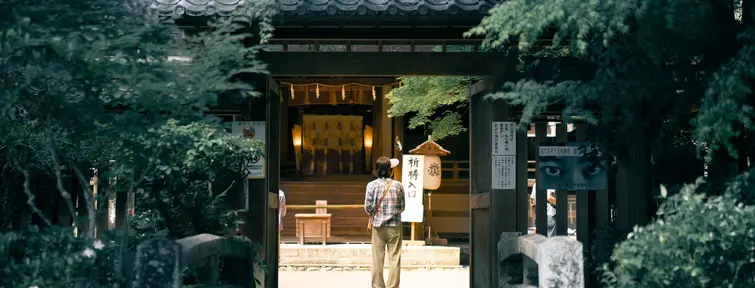
© JuniperPhoton, Unsplash

Book a Self-Guided Tour and explore Japan with us!
Did you know you can go on a tour without following a guide all day? For those wishing to visit Japan with family, friends, or alone, Japan Experience offers package tours, which include accommodation , transportation , some activities , internet access and a travel diary ! With our expertly curated itineraries, you'll have the freedom to discover Japan at your own pace, while still receiving support from our team of experts.
We provide the itinerary you’ll follow in your personalized travelogue , and while we have plenty of suggestions, what you see and do on the way is up to you. Should you need us during your trip, we offer 7/7 assistance for information and advice. Optional activities and guided day tours are also available, for those who would like to explore cities with a local expert. Are you looking for a unique and unforgettable experience in Japan? Look no further!
What is a Self-Guided Tour?
Why book a Self-Guided Tour? Find out more about the key advantages of this type of tour, that combines the best flexibility and freedom for you with our best travel advice and our 7/7 assistance.

Flexible & Free
With a Self-Guided Tour, Japan Experience builds your itinerary and takes care of your bookings. Accommodation, transportation needs, internet access... But what you see and do on the way is up to you!
Optimized Itinerary
While you're freely following our pre-built itineraries, you benefit from the same expertise as your other types of tours. Our travel advisors will build you a personalized travelogue with tips, spots and sights to see.
Time-Saving
With your itinerary built by our team of Japan travel experts, you'll save time planning, and you'll check each item off your bucket list and see more of Japan! A great option for first-time travelers, as well as repeaters looking for inspiration.
7/7 Assistance
As we'll take care of all your bookings on your itinerary, we'll be able to help with anything during your trip. Just reach out, and our expert team will be here for you, every day of the week, even on WhatsApp!
What are the differences between a Self-Guided Tour compared to Group-Guided Tours?
- While you're accompanied at all times in a group tour, you're on your own in a self-guided tour .
- This also means you have the freedom to pick your own meals and where to eat .
- While your itinerary is planned and your accommodation and transportation are booked, what you see during your days in each city is up to you .
- You can even take day trips .
- If you wish to benefit from the insights of a tour guide, you can book daily guides or guided activities .
Explore Japan with our recommended Self-Guided Tours
From the north to the south of Japan, for first-timers or seasoned travelers, explore our best self-guided tours!
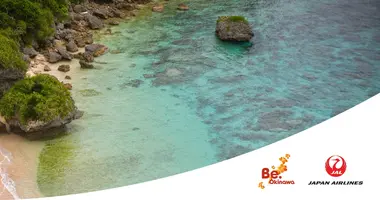
Tokyo to Okinawa beaches Self-Guided Tours in Japan
- Duration : 18 days
- Locations : Tokyo, Hakone Mt Fuji, Kyoto, Hiroshima, Fukuoka, Okinawa
- Included : Airport Transfers, 3* Hotels & Ryokan, Japan Experience house, Ferry, Guided activities, Travel diary, Pocket wifi, Assistance
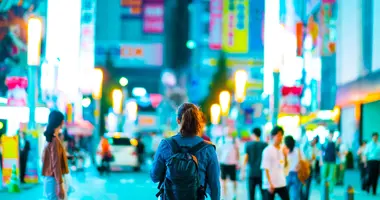
Solo Travel in Japan Self-Guided Tours in Japan
- Duration : 15 days
- Locations : Tokyo, Hakone Mt Fuji, Kyoto, Koyasan, Osaka, Hiroshima, Kanazawa, Tokyo
- Included : Airport Transfers, 3* Hotels & Ryokan, Hotel temple, Non-flight transportation, Guided activities, Travel diary, Pocket wifi, Assistance

Honeymoon in Japan Self-Guided Tours in Japan
- Locations : Tokyo, Hakone Mt Fuji, Osaka, Miyajima, Okayama, Kinosaki Onsen, Kyoto
- Included : Airport Transfers, 3* Hotels & Ryokan, Japan Experience house, Non-flight transportation, Guided activities, Travel diary, Pocket wifi, Assistance
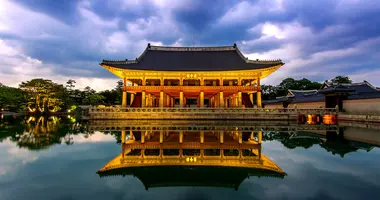
Seoul & Tokyo Self-Guided Tours in Japan
- Duration : 9 days
- Locations : Seoul, Tokyo
- Included : Airport Transfers, 3* Hotels, Travel diary, Pocket wifi, Assistance
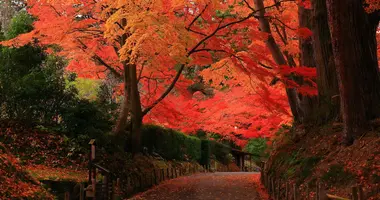
Tohoku: Traditional Japan Self-Guided Tours in Japan
- Locations : Kyoto, Tokyo, Nikko, Sendai, Tohoku, Aomori
- Included : Airport Transfers, 3* Hotels & Ryokan, Japan Experience house, Non-flight transportation, Guided activity, Travel diary, Pocket wifi, Assistance

City break - Kyoto tour Self-Guided Tours in Japan
- Duration : 8 days
- Locations : Kyoto
- Included : Airport Transfers, 3* Hotels, Non-flight transportation, Guided activity, Travel diary, Pocket wifi, Assistance
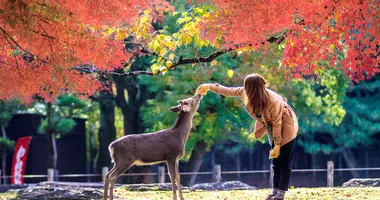
Japan family tour Self-Guided Tours in Japan
- Duration : 14 days
- Locations : Tokyo, Hakone Mt Fuji, Kyoto, Kanazawa, Tokyo
Travel on a Self-Guided Tour in 3 easy steps
Choose your tour
Select one of our Self-Guided Tours based on what your travel plans and preferences require. All our tours are easily accessible from Japan's major cities.
You can choose to customize your tour by getting in touch with our team.
Get ready for your trip
We organize every detail of your trip! You receive a travel book that includes your itinerary, your lodging addresses, and all our local recommendations.
Our Japan travel experts will help you choose local restaurants, schedule your visits around the best times to visit (or avoid) the most popular locations, and generally provide you with great tips on what to do and see. But you're free to explore at your own pace!
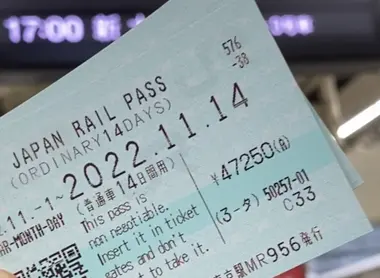
Time to explore!
Our local team remains at your disposal for assistance with any issues that may arise.
In the event of a cancellation, you are covered by our Flex option. It’s our commitment to provide you with flexibility throughout your trip without ever compromising your ability to have the greatest vacation experience.
Choose the trip for you from our collections of self-guided tours, where you'll be able to visit Japan at your own pace!
Essential self-guided tours in japan.
For first-time visitors to Japan, essential tours are an excellent way to discover the country's top attractions and get a feel for its unique culture. With so many incredible destinations to explore, it can be overwhelming to plan an itinerary on your own. That's where essential tours come in - they're carefully crafted to showcase the best of Japan, from the neon-lit streets of Tokyo to the serene temples of Kyoto. Some must-visit spots for first-timers include the iconic Mount Fuji, the charming city of Kanazawa, and the historic Hiroshima Peace Memorial Park. You will be able to travel between the cities using the Shinkansen, the famous high-speed bullet train of Japan and discover famous sightseeing spots! Essential tours take the stress out of planning and allow you to sit back, relax, and enjoy your journey through Japan.
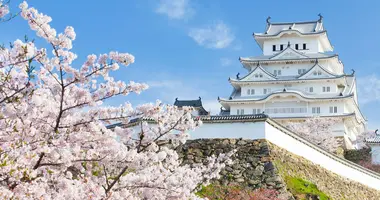
Highlights of Japan Self-Guided Tours in Japan
- Locations : Tokyo, Hakone Mt Fuji, Kyoto, Hiroshima, Kanazawa, Takayama, Tokyo
- Included : Airport Transfers, 3* Hotels & Ryokan, Non-flight transportation, Guided activity, Travel diary, Pocket wifi, Assistance
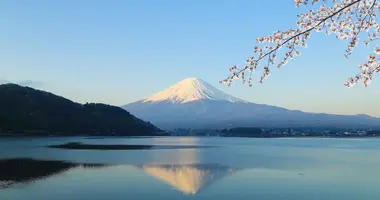
Tokyo, Mount Fuji & Kyoto Self-Guided Tours in Japan
- Duration : 10 days
- Locations : Tokyo, Hakone Mt Fuji, Kyoto
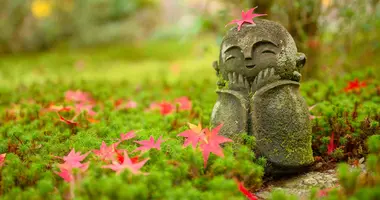
Japanese Immersion Self-Guided Tours in Japan
- Duration : 13 days
- Locations : Tokyo, Hakone Mt Fuji, Hiroshima, Osaka, Koyasan, Kyoto
- Included : Airport Transfers, 3* Hotels & Ryokan, Non-flight transportation, Guided activities, Travel diary, Pocket wifi, Assistance
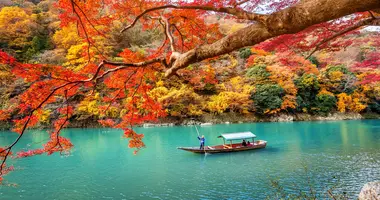
Classic Japan Self-Guided Tours in Japan
- Duration : 12 days
- Locations : Tokyo, Hakone Mt Fuji, Hiroshima, Kyoto
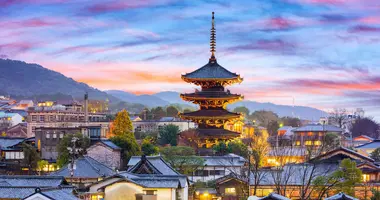
Capitals and Treasures of Japan Self-Guided Tours in Japan
- Locations : Tokyo, Hakone Mt Fuji, Kyoto, Hiroshima, Kanazawa, Tokyo
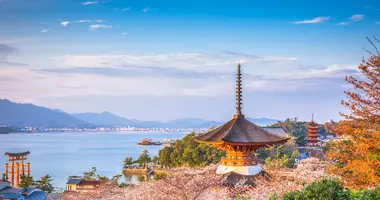
Towns and Islands of Japan Self-Guided Tours in Japan
- Locations : Tokyo, Hakone Mt Fuiji, Kyoto, Okayama, Miyajima, Fukuoka
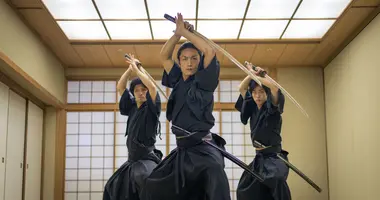
Path of the Samurai Self-Guided Tours in Japan
- Locations : Tokyo, Kawaguchiko, Matsumoto, Takayama, Kanazawa, Kyoto

Nature and Tradition of Japan Self-Guided Tours in Japan
- Locations : Tokyo, Nikko, Kyoto, Nara, Ise, Osaka
Special Interest Self-Guided Tours
If you have a particular interest or hobby, special interest tours in Japan are a fantastic way to indulge your passion while exploring this incredible country. From hiking in the Japanese Alps to skiing in the powder snow of Hokkaido, there's a tour to suit every taste. Other popular themes include manga and anime, architecture and design, and culinary adventures. For example, a food-themed tour might take you to the famous city of Uji to discover its famous tea fields where the best matcha in Japan is produced, or to Osaka, known as the "kitchen of Japan," to try the city's famous street food. Special interest tours allow you to connect with like-minded individuals and experts in your field, as well as providing unique insights and experiences that you may not get on a more traditional tour.
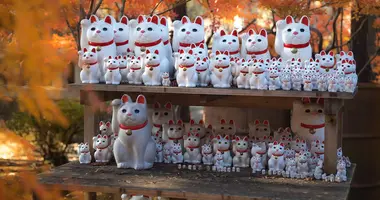
Between Manga and Tradition Self-Guided Tours in Japan
- Locations : Tokyo, Hakone Mt Fuji, Kyoto, Okayama, Miyajima, Osaka
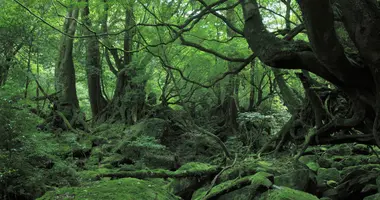
Hiking in Japan Self-Guided Tours in Japan
- Locations : Tokyo, Kyoto, Miyajima, Yakushima, Fukuoka
- Included : Airport Transfers, 3* Hotels & Ryokan, Guided activities, Travel diary, Pocket wifi, Assistance
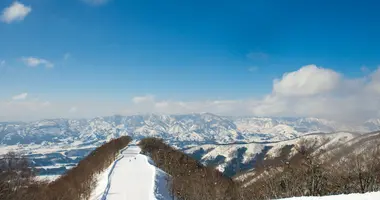
Skiing in Japan Self-Guided Tours in Japan
- Locations : Tokyo, Nikko, Nagano, Kanazawa, Kyoto
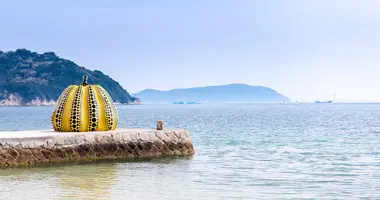
Japan art and architecture tour Self-Guided Tours in Japan
- Locations : Tokyo, Osaka, Awaji, Takamatsu, Kurashiki, Kyoto
- Included : Airport Transfers, 3* Hotels & Ryokan, Non-flight transportation, Car rental, Guided activities, Travel diary, Pocket wifi, Assistance
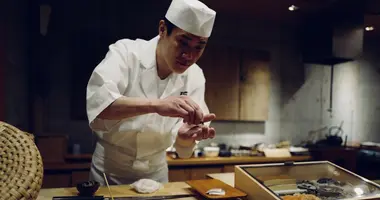
Japan Culinary Tour Self-Guided Tours in Japan
- Locations : Tokyo, Osaka, Miyajima, Kyoto
- Included : Airport Transfers, 3*/4* Hotels & Ryokan, Non-flight transportation, Guided activities, Travel diary, Pocket wifi, Assistance
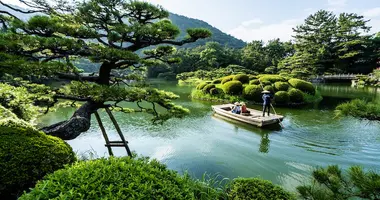
Unmissable Gardens in Japan Self-Guided Tours in Japan
- Locations : Tokyo, Kanazawa, Takamatsu, Okayama, Matsue, Kyoto
Extended Self-Guided Tours
For those revisiting Japan or looking to explore a particular region in depth, extended tours offer a comprehensive and immersive travel experience. Whether you're interested in the history and culture of Kyoto or the natural beauty of Hokkaido, there's an extended tour that caters to your interests. These tours typically last for several days and include visits to off-the-beaten-path destinations, as well as popular tourist spots. For example, an extended tour of Kyushu might take you to the hot springs of Beppu, the stunning waterfalls of Takachiho, and the historic castle town of Kumamoto. With extended tours, you'll have the opportunity to see Japan in a whole new light, gaining insights and experiences that you may have missed on previous visits.
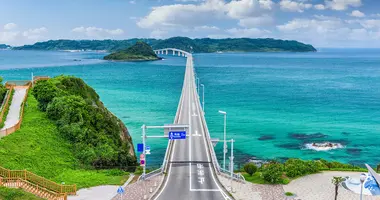
Japan itinerary North to South Self-Guided Tours in Japan
- Duration : 21 days
- Locations : Sapporo, Tokyo, Hakone Mt Fuji, Takayama, Kyoto, Okayama, Miyajima, Fukuoka, Ishigaki
- Included : 3* Hotels & Ryokan, Japan Experience house, Guided activity, Travel diary, Pocket wifi, Assistance
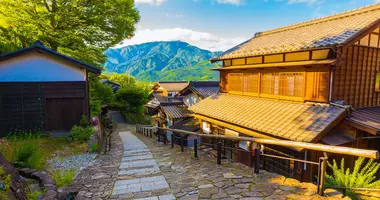
The Japan Alps Self-Guided Tours in Japan
- Locations : Tokyo, Kawaguchiko, Matsumoto,Tsumago,Takayama, Shirakawago, Kanazawa, Kaga Onsen, Kyoto
- Included : Airport Transfers, 3* Hotels & Ryokan, Japan Experience house, Hotel temple, Non-flight transportation, Guided activities, Travel diary, Pocket wifi, Assistance
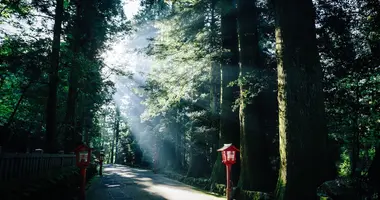
Chugoku: Japan's secret Self-Guided Tours in Japan
- Duration : 19 days
- Locations : Tokyo, Hakone Mt Fuji, Kyoto, Chugoku, Miyajima, Okayama, Osaka
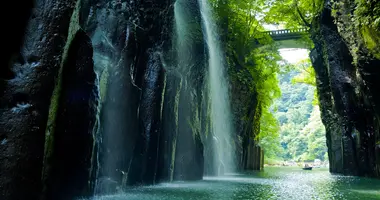
Kyushu: The Southern Route Self-Guided Tours in Japan
- Locations : Tokyo, Kyoto, Miyajima, Fukuoka, Nagasaki, Kumamoto, Takachiho, Yufuin, Beppu, Osaka
- Included : Airport Transfers, 3* Hotels & Ryokan, Japan Experience house, Hotel temple, Non-flight transportation, Ferry, Guided activities, Travel diary, Pocket wifi, Assistance
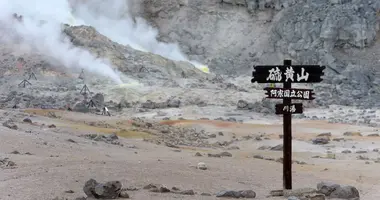
Hokkaido and the northern Japan Self-Guided Tours in Japan
- Locations : Osaka, Kyoto, Nara, Tokyo, Sapporo, Sounkyo Onsen, Akan-ko, Furano, Sapporo
- Included : Airport Transfers, 3* Hotels & Ryokan, Japan Experience house, Non-flight transportation, Car rental, Ferry, Guided activity, Travel diary, Pocket wifi, Assistance
Japan your way tours
Japan Your Way offers a variety of tours that cater to different travel preferences, whether you are traveling solo, as a couple or with family. Every tour has a unique proposition, whether you prefer a balance of educational and entertaining activities suitable for all ages, a tour that offers a unique and intimate experience, featuring scenic spots, sightseeing and cultural activities to enhance the romance, or a tour tailor made for solo travelers.
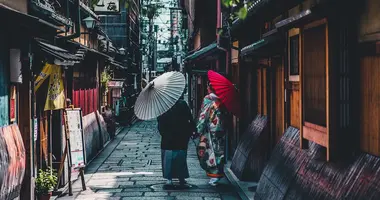
Romantic tour in Japan Self-Guided Tours in Japan
- Locations : Tokyo, Hakone Mt Fuji, Okayama, Miyajima, Kyoto
A City Break in Japan is an excellent option for travelers who want to explore one or two of Japan's most popular cities on a shorter tour. Whether you want to discover the bustling city of Tokyo or the serene beauty of Kyoto, a City Break offers a range of customizable activities that cater to your interests. You will be able to explore historic landmarks, experience local culture and cuisine, shop in trendy districts, or even enjoy the nightlife scene. Our experts of Japan can provide recommendations and insider tips to ensure you get the most out of your experience. With a City Break, you can make the most of your time in Japan, discovering the rich history and modern urban lifestyle of these iconic cities.
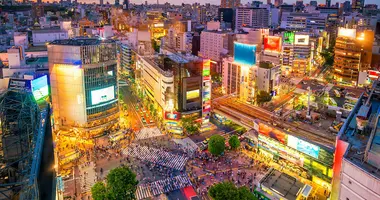
City break - Tokyo tour Self-Guided Tours in Japan
- Locations : Tokyo
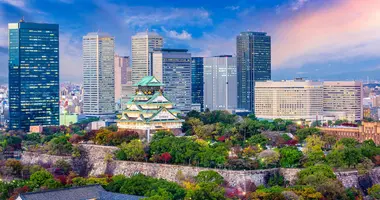
City break - Osaka tour Self-Guided Tours in Japan
- Locations : Osaka
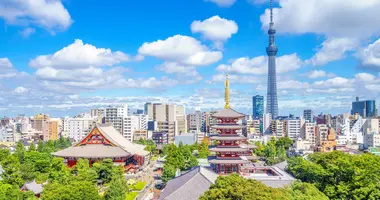
Tokyo & Kyoto Self-Guided Tours in Japan
- Locations : Tokyo,Kyoto
Want your own custom tour? Explore our Tailor-Made Tours options!
Didn't find the trip of your dreams in our selection of Self-Guided Tours? Get in touch with our expert team of Japan travel advisors, and customize your tour according to your needs! Build upon one of our existing tours, or start from scratch with your pre-planned itinerary. Our team will be able to help you craft the trip of your dreams!
Build your Tailor-Made Tour today!
Frequently Asked Questions
What is a self guided tour?
A self-guided tour in Japan is a pre-planned travel package that provides you with a detailed itinerary, accommodation, and transportation options for exploring the country at your own pace. Unlike guided tours, you will not be accompanied by a tour guide, allowing you more flexibility and independence during your trip. You will also be handed a travelogue that give you information about all the details you may need while traveling in Japan.
Can I customize my self-guided tour?
You can customize your tour in some way by choosing among the different options, which typically include pre-night and post-night extension, meaning you can add one day before and/or after your trip. However, if you want to create your own itinerary by going to Okinawa Island for example, you can contact our team to create and tailor the perfect itinerary for your Japan experience, that caters to your interests and preferences.
How do I navigate Japan during my self-guided tour?
Japan has an efficient and extensive public transportation system, including trains, buses, and subways. The train is usually the go-to means of transport across cities in Japan. Our self-guided tour packages come with detailed detailed itineraries and Japan Rail Passes to help you navigate your way through Japan with ease. Additionally, most major cities have English signage, making it even more convenient for you to explore the country.
Are meals included in the self-guided tour packages?
Our self-guided tour packages usually include breakfast at your accommodations. Lunch and dinner are often not included, giving you the flexibility to explore Japan's diverse and delicious cuisine at your own pace. Please check the details for each day to know if the meals are included or not. We can also provide recommendations for local restaurants and dining experiences to suit your taste.
Can I extend my self-guided tour?
Yes, you can extend your self-guided tour by adding one extra day to your itinerary by selecting the option. However, if you want to change further the details of your trip, by adding a new destination for example, please contact our team, and we will be happy to help you plan an extended stay in Japan.
Do I need a visa? Do I need vaccinations?
As of October 11, 2022, Japan will open its borders to all Europeans (including the European Union, the United Kingdom and Switzerland) and North Americans (Canada and the United States) without requiring a visa.
Only non-triply vaccinated travelers need a negative PCR test performed within 72 hours prior to departure.
Do I still need a visa to travel to Japan as a tourist?
No, no visa is required for blue countries including all European countries (European Union, United Kingdom and Switzerland included) and North American countries (Canada and United States). List of blue countries: https://www.mofa.go.jp/j_info/visit/visa/short/novisa.html . If you have another nationality, please contact the Japanese embassy in your country of residence to obtain this visa.
Do I still need a PCR or antigen test to go to Japan?
No, if you are triple vaccinated with the vaccines approved by Japan (Pfizer, Moderna, ...exhaustive list here : https://www.mofa.go.jp/ca/fna/page24e_000317.html ) there is no need for any test.
I do not have 3 doses of vaccine or I am not vaccinated against COVID, can I enter Japan?
Proof of Covid vaccines is no longer required for travelers from "blue" countries. Therefore, unvaccinated travelers can enter Japan if they live in blue countries. But a negative PCR test is required at embarkation for travelers who are not vaccinated 3 times.
Is there still a quarantine upon arrival in Japan?
Quarantine and testing on arrival have been eliminated for travelers from blue countries.
Is insurance mandatory?
No, but it is recommended. Japan Experience, as an option of its tours, provides appropriate travel insurance solutions.
What anti-covid measures are still in place in Japan?
The mask must be worn indoors (except in exceptional cases) and in transportation.
What applications should I download before entering Japan?
For tracking the evolution of the coronavirus epidemic, the Japanese government recommends downloading several applications:
MySOS, the health and location tracking app (it will be used to confirm your location, health status and accommodation).
COCOA, the COVID-19 contact confirmation app (this will be used to notify you of possible contact with a COVID-19 positive person).
For more information, please visit: https://www.hco.mhlw.go.jp/manual/pdf-en/summary.pdf
Guided or self-guided tour... what type of tour should you go for?
Whether you want to discover new things or discover yourself, stay in a fully organised tour or take a leisurely one: at Japan Experience, you will find a tour to suit your needs! Discover our 3 tour formulas now: guided, self-guided or personalised tour: Guided tours: Travelling with a specialist Would you like to travel with a small group of 8 to 12 people, accompanied by a private English-speaking guide? Classic destinations or off the beaten path, Japan Experience offers many guided tours, for all kinds of budget. Offering several departure dates throughout the year, these tours start at €2,890 per person. Self-guided tours: Independent travel These tours, with pre-planned itineraries, include accommodation, flights, transport, 24-hour assistance and optional guided activities. From €540 per person, plan your days as you wish, following the recommendations in your travel diary. Tailor-made tours: Travel according to your desires Design the trip you've always dreamed of! Our specialist advisors are available by email, telephone or directly in one of our agencies to answer all your questions and help you design your own customised tour.
When is the best time to see the cherry blossoms? And the autumn leaves?
Recommended dates for seeing the spring flowers: - plum blossoms: mid-February to mid-March - cherry blossoms (sakura): between 20 March and 15 April (dates vary from year to year) - wisteria, iris, azaleas: mid-April to end of May - hydrangeas: June - lotus flowers: August Recommended dates outside of spring : - Autumn leaves: mid-November - Observation of Zen gardens under the snow: mid-December to mid-February
What if I encounter any issues during my self-guided tour?
Our team at Japan Experience is dedicated to providing you with a smooth and enjoyable trip. We provide support throughout your self-guided tour, and our local experts are always ready to assist you with any questions, concerns, or emergencies that may arise during your journey.
Please select your country on the list below:
- Switzerland
- United Kingdom
- Other countries

Best Self-Guided Tours in Japan: 10 Amazing Tours For 2024
By: Author Sylvia
Posted on Last updated: January 23, 2024
Taking a self-guided tour in Japan can be a great way to compromise between staying independent in your travel and turning over some of the planning to someone else.
Planning your travel can be a difficult and time-consuming task but standard tours aren’t ideal for everyone.
In this case, a self-guided tour could be the solution to creating your perfect Japan trip.
There is a really good chance that this post contains affiliate links. If you click one of them, we may receive a small commission (for which we are deeply grateful) at no extra cost to you.
Table of Contents
Japan Essentials
We almost always find the best flights to Tokyo and Osaka on Momondo . It may be worthwhile to compare these with Skyscanner and a new but promising flight aggregator, WayAway .
Don’t lose time upon arrival at the airport and order your Japan travel SIM or portable WiFi device in advance so that it’s ready and waiting for you at the airport when you arrive.
Having a Japan Rail Pass is often the cheapest way to travel around Japan.
Check out our ultimate Japan travel blog where you can find many more interesting Japan articles to prepare for your trip.
Need help with your Japan trip planning? Check out this post on how to plan your trip to Japan.

Japan Self-Guided Tours
Here is an overview of the best self-guided tours in Japan.
Self Guided Tours in Japan
Why Choose a Self-Guided Tour?
There are many reasons why you might want to choose a traveling tour.
They can be a great middle ground between the standard tour format and a fully self-planned trip, it can be less stressful and there are so many different tours available that you’ll always be able to find something to suit you.
One of the main advantages of a self-guided tour is convenience.
Planning, researching, and scheduling international travel can be a time-consuming and stressful process.
With a self-guided tour, most of these issues are taken care of, freeing up your time and energy to go towards excitement for the travel rather than stress.
Price is another big benefit of self-guided tours.
A self-guided tour is of course cheaper than a standard tour with a guide but allows you to still take advantage of industry deals that a tour company can get.
This can lead to reduced prices for accommodation, day trips, and entrance fees.

Perfect for A Family or Small Group
Self-guided tours are also ideal for introverts or those traveling with their own family or small group.
Standard tours are usually a set size and so some social interaction with strangers is required.
While this can be a great way to make friends and meet new people, for some this can be tiring and an added burden on the travel.
With a self-guided tour, this aspect of a tour is removed and travelers are free to enjoy their trip on their own terms.
Following this, there is also more flexibility when it comes to scheduling.
If you need to take a break, it is easy to skip part of the planned schedule without affecting anyone else.
If there is somewhere you’d like to spend longer and explore further, the schedule can be easily adjusted.
Finally, the security of a self-guided tour can’t be ignored.
Taking a tour means there is always someone else in charge who can take over and help with any issues that come up. This is still true of self-guided tours with a contact person available.
If you should run into trouble while traveling, there is no need to panic or start stressing about how to solve the issue, as the tour company will be able to help find a solution.
These are just some of the reasons why a self-guided tour can be a great option when planning travel. When considering all the elements of your trip, it is easy to see how and why self-guided tours come up as an ideal option for many travelers.

What Are the Best Companies for Self-Guided Tours in Japan?
Japan has become extremely popular for travel over the last 5 -10 years, meaning almost all tour companies have a presence in the country.
This can make it difficult to choose a company to use for your self-guided tour.
Is it best to go with a large, well-known multinational company that has a good reputation, or a local, lesser-known, more niche company that may have more localized and specialized knowledge about the area?
It is impossible to give an over-arching answer, however, some of our top picks for finding the best self-guided tour for you include TourRadar and Japan Experience.

TourRadar
TourRadar is an international travel agency with a presence across multiple countries and continents.
They are able to show a range of tours available in your area of interest, operated by a range of tour operators.
The website is easy to navigate and makes comparing different tour options easy and accessible.
The various tour options shown include detailed descriptions of the tours as well as customer reviews, allowing you to get an overview of the tour as well as the real experience of others.
TourRadar also has a number of features that help to create peace of mind for potential travelers.
The company is well-established, having been in operation since 2010.
Around 20% of their bookings come from repeat travelers and their reviews are consistently positive.
TourRadar offers 24/7 customer support and immediate confirmation of bookings, meaning you can always address any concerns or questions.
There are no additional booking or credit card fees and you can even save on future bookings as each booking earns ‘travel credits’ to put towards future travel.
TourRadar is one of the best ways to compare and narrow down the best tour options for your and your interests.
Read reviews and check prices: TourRadar

Japan Experience
Japan Experience is a Japan-based travel agency with a broad range of offerings to make your Japan trip the best it can be.
The website offers a variety of tour options as well as information on various accommodations and recommendations while traveling in Japan.
The tour listings are very detailed with extensive information on every step of the tour.
Japan Experience was one of the first specialized tour operators in Japan, beginning in 1981 and now operating for over 40 years.
The company operates with a small team, allowing them to offer competitive rates to customers.
Their philosophy centers around making travel to Japan easier for the customer.
This includes handling the difficult aspects of travel and providing as much information as possible so travelers can make informed decisions.
While traveling in Japan, local travel advisors are available to help with any questions or inquiries, 7 days a week.
There is also a specialized team available throughout Japan, the UK, Europe, and the US.
The range of products, tours, and information available from Japan Experience makes them a great resource for both planning your Japan travel and finding a self-guided tour to suit you and your interests.
Read reviews and check prices: Japan Experience

Which Japan Tour Packages Exist?
Best japan tours.
Here are some of the best tours you can take on.
These will help you make the best of your stay, covering the best destinations for the number of days you choose.
5 days in Japan
If you have only 5 days in Japan, check out the below-mentioned tour.
Quick Japan Explorer 5 Days
This whirlwind 5-day tour of Japan takes you through some of the top destinations commonly recommended for visitors to Japan.
Overview Of The Tour
The tour starts in Tokyo with being met at the airport and traveling via shuttle bus to your accommodation.
After a long international flight, this can be a great relief as you are able to avoid the potential difficulties of public transport and carrying luggage through the city.
After a day in Tokyo, the tour then moves to Hakone, a small onsen area outside of Tokyo.
This area is popular as a weekend trip for Tokyo residents and is well-known for its beautiful onsens, stunning views and scenery (including Mt. Fuji), and relaxing atmosphere.
The next morning, the tour will utilize the fast and comfortable shinkansen (bullet train) to travel to the cultural capital of Kyoto.
The Hakone Day Trip Guide.
While in Kyoto there is no end to the number of temples, shrines, castles, and more you can visit and explore.
Some of the top recommendations include Fushimi Inari Shrine, with its striking pathway lined with thousands of red torii gates, Kinkakuji, the golden temple, and Arashiyama, the beautiful bamboo forest.
2 Days In Kyoto Itinerary.
On the second day in Kyoto, travelers can take an express train to the nearby city of Nara, popular for its large park in the center of the city populated by deer. These deer are wild but are accustomed to people.
It is possible to feed them using deer cookies purchased in the park, however, they can get very enthusiastic about food so you might want to just observe first.
Nara Park is surrounded by a number of culturally and historically significant temples and shrines as well.
Nara is an ancient capital of Japan and so there are historical locations all throughout the city. After this day trip, travelers can return to Tokyo to finish the tour.
One of the best aspects of this tour is the inclusion of multiple transport passes to cover local travel around Hakone and Kyoto.
Local buses and trains can add up in price, so using day passes can be a great saving.
This also covers many of the top destinations for a first-time Japan trip.
Places You Will Visit
- Tokyo
- Hakone
- Kyoto

Some highlights of this tour include exploring the modern capital of Japan, Tokyo, and the traditional and cultural capital, Kyoto.
There is also a day trip to Nara which is often considered a must-see for first-time visitors to Japan.
Pros And Cons
- Being met by a travel assistant at the airport with a shuttle bus to your accommodation is a great help after a long flight.
- Included transport passes for local travel are extremely useful for both convenience and price.
- The tour covers some of the top locations in Japan
- Only airport pickup is included, not drop-off. This means you have to navigate Tokyo to airport transport on your last day.
- The fast nature of this tour means it is easy to miss a number of unique and exciting destinations in Japan.
Included in The Tour
- Hostels, 3-star, and 4-star hotels
- 4 breakfasts
- 2 Days Hakone Free Pass and 7 Days Japan Rail Pass
- Transport to Nara
Important Information
- Flights are not included. Travelers have to organize their own flights independent of the tour. Searching for cheap flights, check out this post.
- Insurance isn’t included. Travel insurance can be an essential aspect of international travel and is a necessary step. If you haven’t yet taken out travel insurance have a look at SafetyWing and HeyMondo. Click here to see how they compare .
This tour is a great option for getting a first impression of Japan and an initial exploration of the country.
While it is short at only 5 days, it covers a large amount of distance and cultural significance in the time. This tour would be ideal for first-time visitors to Japan.
Prices for this tour start at $ 984 USD.
Check prices and availability: TourRadar

One Week in Japan
If you have 7 days in Japan, take a look at the tours we mention below.
Japan Highlights (8 Days/7 Nights)
This tour starts with pick-up at Narita Airport with a shared shuttle to your accommodation.
Tokyo And Hakone
After the first day in Tokyo, the tour travels to Hakone where you can explore the onsens, the Hakone Ropeway, and many other sightseeing destinations.
Transport in Hakone is covered by the two-day Hakone FreePass, which also offers discounted admission to some attractions.
From here you are able to travel via shinkansen to the traditional capital of Kyoto.
During their time in Kyoto, travelers can participate in optional tour activities, including a tea ceremony experience, a bento box cooking class, and a bus tour.
These activities are completely optional, meaning you are also welcome to use this time to explore on your own.
From here the tour moves to Hiroshima where you can explore the expansive Peace Park and Peace Museum.
This is dedicated to memorializing the tragic event and victims of the atomic bombing at the end of World War II.
There is also an optional tour of Hiroshima and Miyajima Island available while in Hiroshima.
The final city to explore is Osaka, vibrant and exciting. Osaka has a great range of places to visit, including Osaka Castle, Shi-Tennoji temple, and Tsutenkaku Tower.
- 1 Day In Osaka Itinerary.
- 2 Days in Osaka Itinerary.
Finally, the tour returns to Tokyo.
- Hiroshima

This trip includes a number of highlights, such as the beautiful onsen town of Hakone, multiple days in the beautiful city of Kyoto, and time to explore Hiroshima and its varied past.
- There are multiple optional tours available as added extras.
- Great way to experience top sights of Japan
- Not much help is provided with arranging airport drop-off.
- 7 nights accommodation in hostels, 3-star or 4-star hotels.
- 7 breakfasts
- Transport is covered with the Japan Rail Pass and Hakone FreePass.
- English Speaking Guide on half day Kyoto excursion
Important Information
- Flights are not included.
- Insurance is not included. If you still need travel insurance, check out Heymondo or SafetyWing. Both are reliable companies that offer travel insurance for a fair price.
This 7-day tour largely follows the ‘Golden Route’ itinerary of Japan with some well-planned additions.
This makes it ideal for first-time visitors to Japan looking to see some of the most recommended and popular destinations in the country.
This tour starts at $1536 USD.

Independent Tokyo, Kyoto, and Osaka City Stays (9 Days)
This 9-day tou r has a unique combination of independent traveling and guided sightseeing to create the ideal travel itinerary with both independence and assistance.
The tour starts in Tokyo with a guided sightseeing tour of Meiji Shrine, one of the newest but most impressive shrines in Tokyo.
You will also visit the following attractions.
- The Samurai Museum
- Tokyo Skytree
- Asakusa Temple
Following this is a full day of free time in Tokyo to explore your own way.
This exemplifies the mixed nature of this tour.
- Tokyo 4 Day Itinerary
- Tokyo 5 Day Itinerary
- Tokyo 7 Day Itinerary
After Tokyo, the tour moves to Kyoto.
The first day in Kyoto has a guided sightseeing tour of Kinkakuji, the Gion district, well-known for its geishas and teahouses, Sanjusangendo Temple, the temple with 1001 Kannon statues, and Fushimi Inari Shrine.
There is then another full day of self-guided exploration time in Kyoto.
From here, the tour goes to Osaka.
The guided tour covers Osaka Castle and Osaka Castle Park, the nearby district of Minami, encompassing Namba and Dotonbori, some of the city’s most popular entertainment areas, and Osaka food culture.
There is another full day of exploration in Osaka and then the final day of the tour.
The tour alternates between guided tour days and self-guided days.
Guides are also able to make recommendations and assist with the self-guided days.
Places You Will Visit
- Osaka

Some of the highlights of this tour include both old and new shrines of Tokyo – Meiji and Asakusa, some of the most striking and distinctive locations in Kyoto, and a unique look at Osaka’s food culture.
- The blend of guided and self-guided days can be a good step for those who are unsure about fully self-guided tours or would prefer some additional assistance.
- Multiple days in each location allows for further exploration in each city and less rushing.
- Multiple meals are provided.
- By spending more time in each location, it isn’t possible to visit as many cities or regions of Japan.
- For those looking for more independence, the guided aspects of this tour may seem restrictive.
- 8 nights of hotel accommodation ( Hilton Tokyo, Kyoto Century Hotel, Imperial Hotel Osaka ).
- Daily breakfast is included, as are 3 lunches.
- All sightseeing and activities that are stated are included.
- Tokyo Metro Pass is included.
- Several private guided sightseeing tours are included.
- Bullet train from Tokyo to Kyoto and transfer from Kyoto to Osaka is included.
Important Information
- There are also other versions of the tour available. Check the site for more information.
- Flights are not included in the tour price.
- Travel insurance is not included. Check out Heymondo or SafetyWing if you still need to take out travel insurance.
This tour is ideal for travelers who want to take their time in each location rather than hurrying to the next city.
It is great for those looking for the knowledge and insight of a guide while still maintaining the flexibility and independence of self-guided days.
Note that there are also other versions of the tour available. Check the site for more information.
Prices start at around $4689 USD.
Read reviews and check prices TourRadar

2 weeks in Japan
Between manga and tradition (15 days) .
This tour has been carefully designed to cater to lovers of Japanese culture, both old and new.
With a focus on both manga and the surrounding culture as well as tradition, the tour aims to capture the interest of travelers in a unique and exciting way.
The tour starts in Tokyo, with a travel assistant meeting travelers at Narita Airport to provide them with pocket Wi-Fi and necessary travel documents. This is a helpful step as pocket Wi-Fi is extremely useful in Japan.
The first day in Tokyo has a number of recommendations including the fashionable pop culture district of Harajuku, Meiji Shrine, the recognizable Shibuya Scramble Crossing, and more.
In the evening, there is a guided walking tour around the popular anime and manga district of Akihabara.
In the next few days, recommendations are largely focused on traditional locations, such as Tsukiji Fish Market, Asakusa, and Ueno.
On day 5, a manga drawing lesson with a professional manga artist is included.
The lesson can be adapted to different skill levels and is an amazing opportunity for those interested in manga.

Hakone & Kyoto
Next, the tour heads to Hakone to visit Mt. Fuji and a traditional ryokan inn.
After this, the tour travels to Kyoto for three days. During this time travelers are encouraged to visit many of Kyoto’s cultural icons, such as Kinkakuji, Kiyomizudera, the Philosopher’s Path, and more.
There is also a manga museum in Kyoto which may be a must-see for the manga lovers on this tour. The tour also includes a day trip to Nara and its deer park.
The tour then heads to the city of Okayama, often missed on Japan tours. This city includes one of Japan’s top 3 gardens, Korakuen, and a unique black castle.
It is also close to the canal town of Kurashiki. The tour also covers a night at Miyajima, the deer island near Hiroshima which is home to the iconic Itsukushima Shrine and ‘floating’ torii gate.
Finally, the tour finishes in the vibrant city of Osaka.
Here, travelers can visit Universal Studios Japan, Osaka Castle, and the Umeda Sky Building.
This tour includes some meals as well as a 7-day Japan Rail Pass, 2-day Hakone FreePass, and a local prepaid transport card.
- Okayama
- Tomonoura
- Miyajima Island

This tour is full of highlights, including the manga drawing lesson from a professional artist, the inclusion of some lesser-visited areas like Okayama and Kurashiki, as well as a stay on the beautiful island of Miyajima.
- The tour has been well designed to combine modern pop culture and traditional culture.
- There are curated activities such as drawing lessons.
- The flexibility to choose your own way while still receiving recommendation strikes a good balance.
- Some travelers might want more manga-focused activities.
- Hotel accommodation in 3-star hotels.
- Some meals.
- Private guided tour of Akihabara.
- Manga drawing lesson.
- Pocket Wi-Fi is included.
- Japan Rail Pass for 7 days and Hakone Free Pass for 2 days.
- Insurance is not included. If you still need to take out travel insurance, check out HeyMondo or SafetyWing.
This tour has clearly been carefully crafted with a particular traveler in mind.
It would be perfect for a traveler to Japan who is interested and engaged in Japan’s pop culture, especially manga, and anime.
The inclusion of traditional culture allows for an expanded view of Japan and its culture.
This tour starts at $1610 USD.

Specialty Tours in Japan
Hiking in japan (14 days).
This 14-day hiking tour covers both urban and rural landscapes to create a varied and unique hiking-based tour for hiking enthusiasts.
The tour has been designed to visit some of Japan’s most famous destinations while also visiting some of the lesser-known islands and locations for more isolated hiking experiences.
The tour starts in Tokyo with a travel assistant providing pocket Wi-Fi and travel documents at Narita Airport.
The first day in Tokyo is open to exploring some of the top sights, such as the Meiji Shrine and Asakusa.
There is also an optional day tour available.
On the second day, there are two main recommendations made by the guides.
Firstly, to explore more of the city by taking an ‘urban hike’ and visiting Ginza, Asakusa, and more.
And secondly, to take a day trip outside of Tokyo to hike Mt. Mitake or Hatanosu Canyon, some of the more popular hikes within close proximity to Tokyo.
From here, the tour moves to Kyoto for three days.
On the first day, many popular sights are recommended, such as Kiyomizudera and Kodai-ji.
In the evening, there is a guided tour of Gion, the traditional entertainment district of Kyoto. The next day in Kyoto involves more exploring of top sights, such as Kinkakuji and Ginkakuji (the Gold and Silver pavilions).
On the following day, a guide can provide transport to Takao Mountain, a mountain just outside of Kyoto, with charming Buddhist temples, the small village of Takao, and stunning forest scenery.
Finally, the tour recommends a day trip to Nara and the deer park surrounded by historical sites.

From Kyoto, the tour moves to Miyajima, an island just off the coast of Hiroshima. The island has a traditional town with many deer roaming and the iconic Itsukushima Shrine.
At this mountain, travelers are able to take the cable car up Mt. Misen to see beautiful views over Hiroshima Bay and hike the descent through amazing forests and nature.
While staying on Miyajima, traditional ryokan accommodation will be used. From here there will be a short stop in Hiroshima before moving on to Fukuoka.
Hiroshima & Fukuoka
Fukuoka is used as the departure point to reach Yakushima Airport. The island of Yakushima is full of tropical wilderness, with many of the trees reputed to the be oldest in the country.
Many sections of the forest are protected by UNESCO due to its heritage.
The days on the island can be spent hiking through beautiful forests, mountains, mangroves, waterfalls, and more, depending on your preferences and fitness level.
Guides can provide recommendations on the best trails or locations for you to utilize. Finally, the tour ends in the southern city of Fukuoka.
Here, you can see the oldest Zen temple in Japan, the popular Hakata district, and the futuristic Fukuoka Tower.
- Yakushima Island
- Fukuoka

This tour covers not only popular destinations like Tokyo and Kyoto but also a number of rarely-visited beauties, such as the wilderness of Yakushima Island and the beautiful mountain of Takao Gorge.
- There is a great range of places to explore, both in the main cities and outside.
- The tour is ideal for hiking enthusiasts and includes top hiking locations.
- For travelers who only want to do hiking in Japan, the city-based days may seem unnecessary.
- A 7-day Japan Rail Pass is included, along with a prepaid local transport card.
- Flights to and from Yakushima Island are also included.
- Unlimited pocket Wi-Fi.
- Flights are not included in this tour (the exception is the domestic flight to Yakushima Island)
- Travel insurance is not included. If you still need to take out travel insurance, check out HeyMondo or SafetyWing.
This tour is well-suited for travelers who enjoy hiking and nature and wish to explore some of Japan’s more natural areas.
This tour starts at $1826 USD.

Unmissable Gardens in Japan (14 Days)
Japan is famous for its beautiful gardens and landscape design. Many of the gardens are designed around Zen philosophy and involve a number of specific elements.
There are countless blogs, guidebooks, and magazines which document the top gardens of Japan, which can make it difficult for an international traveler to narrow down which ones to visit.
This gardens in Japan tour makes the planning stage easier by selecting some of the top gardens to visit and experience.
The tour starts in Tokyo with standard airport pocket Wi-Fi and travel documents handover.
The first day in Tokyo also continues with standard recommendations of Meiji Shrine, Shibuya Scramble Crossing, and similar locations.
The next day has a number of options, including exploring some of Tokyo’s top Edo Period gardens. These are steps back in time to a historical period in time in Tokyo’s history.
Another option is to take a trip outside of Tokyo to Kairakuen garden in Mito. This is one of Japan’s top 3 most famous gardens.
The other two gardens in this category are included later in the tour.
From Tokyo, the tour then heads to Kanazawa, sometimes known as ‘Little Kyoto’ due to its similarity in traditional buildings and districts.
However, Kanazawa is also known as the location for the second of Japan’s top 3 gardens – Kenrokuen.
Kenrokuen is known to be beautiful year-round with seasonal displays surrounding the beautiful pond, strolling paths, and statues.
2 days in Kanazawa

After Kanazawa, the tour travels to Takamatsu, on the island of Shikoku.
In Takamatsu, you can find the beautiful Ritsurin Koen garden, an enormous 16-hectare garden.
It is well-known for its red pines and unique design. There is also a bonsai village south of the city which is an ideal spot for garden lovers to visit.
Near Takamatsu is the small art island of Naoshima.
Naoshima is covered with a number of art exhibits, some located in small, once-residential houses, some open-air, and some in more traditional museums and galleries.
Exploring Naoshima is a walk through modern and traditional art and a unique experience. While there is no specific garden on Naoshima, it is still a great addition to the tour.
Next is the third of the top 3 gardens, Korakuen in Okayama.
Okayama & Matsue
Korakuen is also located next to the black Okayama castle, which you can see illuminated in the evening.
After Okayama is the water city of Matsue. Matsue is known as home to some of the most impressive gardens in Japan.
These include the Adachi Garden Museum, an art gallery where some of the ‘art’ is the landscape gardens viewed through huge floor-to-ceiling windows.
The concept was to create living landscape paintings, able to be viewed as in a normal gallery.
Matsue is also home to Yushien Garden, which has 100s of peony varieties and a regular Peony Pond display.
Finally, the tour ends with 4 days in Kyoto.
As home to some of Japan’s top temples, shrines, and castles, Kyoto has a number of imperial gardens and parks. Guided tours of some of these gardens are available, or recommendations can be made.
- Kanazawa
- Takamatsu
- Naoshima
- Matsue

Highlights of this tour include visiting the top 3 gardens of Japan – Kairakuen, Kenrokuen, and Korakuen, the unique art island of Naoshima, and the beautiful concept gardens of Matsue.
- There is a great range of gardens to visit and explore
- This tour takes travelers through a number of cities that are less commonly visited, leading to a more unique experience
- 7-day Japan Rail Pass and prepaid transport card are included.
- Due to some of the cities being less popular as tourist destinations, they can sometimes be harder to get around as a tourist.
- Airport transfers
- Unlimited Pocket Wi-Fi
This tour is perfect for travelers who enjoy Japanese design and gardens.
For those who are engaged in the philosophy behind the garden design or just those who enjoy the natural aspects of the gardens, this tour is ideal.
Prices for this tour start at around $1394 USD per person.

Skiing in Japan (14 Days)
Japan is very popular for winter sports, especially skiing, and has a wide range of locations to visit to best enjoy the snow.
This tour brings together a number of these locations to create the ideal skiing holiday.
The tour starts in Tokyo with an airport handover of pocket Wi-Fi and travel documents.
The first two days can be spent exploring some of the sights of Tokyo, such as Tokyo Skytree, Asakusa, Ginza, and more.
After this, travelers will take the shinkansen to Nikko, a famous skiing spot in the prefecture of Tochigi. This area is also a popular onsen area and so the accommodation will be a traditional ryokan inn.
There are many UNESCO World Heritage Sites in Nikko to explore, such as Rinno-ji Temple, located in a beautiful forest, and the Toshogu and Futarasan-jinja shrines.
The next day will take travelers to a more remote mountain onsen town. There are 13 different onsens to explore in this town.
Next, there is a full day of open winter sports. Skiing, snowboarding, whatever takes your fancy is open.

On the next day, you can either continue skiing or take a tour to see the famous onsen monkeys in Jigokudani Natural Park.
On the 8 th day, there will be another open day of winter sports.
Next, you can travel to Kanazawa to explore some of Japan’s history and culture in a unique half-day tour. From here, a day trip to Shirakawa-go, Japan’s traditional village is highly recommended.
Shirakawa-go contains a number of traditional houses and is a UNESCO World Heritage Site.
The last few days of the tour are spent in the traditional capital of Kyoto, where travelers can explore a number of historically and culturally significant sites.
These can include Kinkakuji, Gion, Kiyomizudera, and more. A day trip to the nearby deer city of Nara is also available.
This tour includes a 7-day Japan Rail Pass and prepaid local transport card.
- Nikko
- Nagano

Some of the highlights of this tour include an exploration of traditional mountain and alpine culture in Japan, such as Shirakawa-go and onsen towns.
There are also multiple days of winter sports for travelers to enjoy themselves as well as cultural exploration in Kanazawa and Kyoto.
- The tour includes plenty of time for winter sports and skiing.
- Half-day guided tour of Kanazawa is included.
- There is a good mix of time between skiing and popular tourist destinations.
- More dedicated skiers may want more time for winter sports or to visit more winter sport-focused locations.
- Private half-day guided tour of Kanazawa
Important Information
- Flights are not included in the tour price
This tour is ideal for travelers looking to experience winter sports in Japan while also learning about Japanese culture and visiting some of the best sights in Japan.
This tour starts at $1394 USD per person.

Solo Travel in Japan (14 days)
This tour is specifically designed for solo travelers in Japan. While many people travel in couples, with family or friends, sometimes solo travel is a fun and exciting experience.
This tour is designed to maximize the nature of solo travel while providing the security of a tour. The tour also has adapted accommodations to better suit solo travelers.
The tour starts in Tokyo and includes a provided pocket Wi-Fi and travel documents. The first two days in Tokyo involve recommended sightseeing of some of Tokyo’s most popular and most famous locations.
These include Asakusa, Tokyo Skytree, Meiji Shrine, and more. The first evening includes a guided dinner tour, visiting multiple izakaya restaurants, or the equivalent of a Japanese pub.
The Perfect 14-Day Japan Travel Itinerary for First Timers
These restaurants provide casual food with a friendly atmosphere.
After Tokyo, the tour heads to the beautiful area of Hakone.
In Hakone, the accommodation will be a traditional ryokan.
While in the area you can experience beautiful views of Mt Fuji and Lake Ashi. Next is a few days in the traditional capital, Kyoto.
While in Kyoto you can explore Kiyomizudera, Kinkakuji, the Philosophers Path, and more. On the first evening, there is a guided stroll around the historic district of Gion.
More recommendations include Kyoto’s historic market, Nishiki, the beautiful bamboo forest, Arashiyama, and Nijo Castle.
Next is an overnight trip to the sacred mountain of Koyasan.
This mountain is home to many Buddhist temples, including the birthplace of one of Japan’s sects of Buddhism. It is the location of many Buddhist pilgrimages.
At Koyasan, you will be able to experience a traditional temple stay.

Osaka & Hiroshima
After Koyasan and the temple stay will be a day in the lively city of Osaka.
There are many recommended restaurants to experience in Osaka to better understand the local food culture.
After Osaka is a day in Hiroshima, and the opportunity to visit the Peace Park and Peace Museum.
The next day, visit Miyajima Island and the beautiful Itsukushima Shrine, Mt. Misen, and the traditional town on the island.
The next day, you can transfer to Kanazawa, one of Japan’s most traditional cities and home to one of the most beautiful gardens in Japan.
It is also home to a unique and much-acclaimed contemporary art museum. For something a bit different, explore the teahouse district or traditional samurai district.
Finally, there is the return to Tokyo and the end of the tour. This tour includes a 14-day Japan Rail Pass, a 2-day Hakone FreePass, and a 2-day Koyasan Pass.
- Koyasan

This tour features some amazing experiences such as the temple stay at Koyasan, and visiting a number of cities in a short time.
- There is a wide variety of locations visited
- There are many unique experiences to be had.
- The tour may feel rushed for some travelers as many cities only have 1 day.
- Hakone Free Pass for 2 days
- Koyasan Pass for 2 days
- Culinary evening in Tokyo with a guide
- Guided night tour of Gion (1h30)
- International flights are not included in the tour price.
This tour has been well-adapted to suit adventurous solo travelers and so is ideal for those looking for something a little different and unique.
This tour starts at $2260 USD.

Romantic Tour in Japan (13 Days)
This romantic tour is a unique experience, carefully curated to be ideal for couples.
With a number of romantic locations, adapted accommodations, and unique couple-focused activities, this tour is a great couple’s holiday experience.
The first two days in Tokyo follow a fairly standard procedure of receiving pocket Wi-Fi and travel documents, then exploring some of the top sights of Tokyo.
However, on the third day, some more niche recommendations are made.
These include destinations like the Studio Ghibli Museum or a sumo tournament, or if you’re interested in a day trip, you can take a short trip to the coastal town of Kamakura.
After a few days in Tokyo, the tour heads to the beautiful onsen town of Hakone. The scenery of Lake Ashi, the volcanic sites of Owakudani, and of course, Mt Fuji make for amazing sights.
After staying in a traditional ryokan, you can head to Okayama by Shinkansen.
Okayama & Kurashiki
Okayama is home to the beautiful Korakuen garden and striking Okayama castle, but more importantly, it is just 20 minutes from the nearby romantic town of Kurashiki.
Kurashiki is sometimes known as the ‘Venice of Japan’ for its many canals through the town.
The beautiful paths beside the canals along with the museums and art galleries of the town make for a romantic afternoon out.
On the next day, you can head to Naoshima, the unique Art Island located near Okayama.
Exploring the various exhibits and museums is a fantastic day-long activity and a great way to engage with both modern and traditional art.
After Naoshima, there is another ryokan stay on the island of Miyajima, off the coast of Hiroshima.
This charming island has many deer roaming the traditional town, amazing scenery through the forest of Mt. Misen, and the iconic Itsukushima Shrine.

Finally, there are 4 days in Kyoto to make the best of your tour.
During this time, you can stay in a traditional house, take a guided evening tour around Gion, and explore some of the sights of Kyoto.
These can include Kiyomizudera, Kinkakuji, the Philosopher’s Path, and more. A traditional Shiatsu massage is also included in the tour, as is a kimono dressing and walking experience.
This is a common activity for Japanese couples and you can have the chance to experience it too.
There is also a recommendation to take a day trip to Nara to see the deer and the beautiful shrines and temples surrounding Nara.
- Kurashiki
- Miyajima

Some highlights of this tour include the ryokan stays, visits to Naoshima and Miyajima Island, and the unique activities included.
- The tour covers a number of different places with different atmospheres and appeals, allowing for a varied trip.
- Couple activities are included.
- The activities and destinations included won’t suit all couples.
- Discounts at many Hakone tourist sites
- Shiatsu massage in Kyoto
- Kimono rental in Kyoto
- Guided night tour of Gion
This tour is ideal for couples with its carefully put-together itinerary, adapted accommodations, romantic destinations, and activities.
Prices start at $1395 USD per person.

Honeymoon in Japan (15 Days)
Japan is a very popular travel destination for couples and this tour is designed to create a romantic and enjoyable experience for a couples holiday.
It is ideal for honeymoons or just general couple vacations.
The tour starts in Tokyo where you can receive your pocket Wi-Fi and travel documents for the trip, and you can explore at your own pace on the first day.
On the second day, a guide can provide a unique tour through some of Tokyo’s romantic spots, including temples dedicated to love, popular restaurants for dates, and other romantic-themed locations.
On the next day, you can do any further exploring of Tokyo you wish to do, along with a helicopter tour over Tokyo.
The beautiful views of Tokyo from the sky will make for an unforgettable experience.
After Tokyo, the tour moves to Hakone.
Hakone & Osaka
However, this tour takes a slightly different journey than previous tours, utilizing the “Romance Car” express train, a panoramic train made to be comfortable and ideal for couples.
After staying in a traditional ryokan at Hakone and enjoying the stunning views of Mt Fuji, travelers can move on to the popular city of Osaka.

While in Osaka, recommendations include Osaka Castle, Nakanoshima Park and the accompanying rose garden, and the Umeda Sky Building.
There is also the opportunity to try Kobe beef while in this area.
After Osaka, the tour leaves for Miyajima Island.
While on Miyajima Island, travelers can enjoy a second ryokan stay and experience the charming traditional town and striking Itsukushima shrine with its ‘floating’ torii gate.
On the next day, there is time for a short stop in Hiroshima before moving on to Okayama and the romantic town of Kurashiki.
After exploring the romantic canals and local art galleries, you can transfer to the nearby Naoshima, sometimes known as ‘art island’. This island is home to a wide range of art exhibits and galleries.
Exploring the various art pieces can be a unique and engaging experience, especially as it is interspersed with beautiful scenery. After this is Kinosaki Onsen, a small onsen town near Himeji.
This will be another ryokan stay, with amazing onsen baths in the ryokan. There are also 7 onsens in the town which you can explore.
Finally, there are four days in Kyoto to explore the cultural capital of Japan.
During this time you can stay in a traditional house, explore some of the top sights and locations of Kyoto, experience a traditional Shiatsu massage, and take a guided evening stroll around Gion.
You can also try dressing in traditional kimono and having a session with a private photographer at some of the beautiful gardens and temples of Kyoto. A day trip to Nara is also recommended.
- Kinosaki Onsen

This tour features a number of interesting experiences, such as the helicopter ride over Tokyo, travel in the Romance Car to Hakone, a kimono photography session, and more.
Visiting Kinosaki Onsen, Kurashiki, and Naoshima will all make for trip highlights for any traveler.
- There is a wide range of experiences available.
- Various guided tours are available.
- A number of different transport passes are included.
- The number of different activities and things to do may be tiring or overwhelming for some travelers.
- Tokyo Metro Pass for 3 days
- Romancecar Tokyo Shinjuku -> Hakone
- Kansai Thru Pass for 3 days
- Private guided day tour in Tokyo
- Helicopter flight over Tokyo
- Welcome to Kyoto by a travel angel
- Kimono rental in Kyoto and photoshoot
This tour is extravagant, luxurious, and romantic, making it perfect for a couple’s holiday. A honeymoon, proposal, anniversary, or other celebration would be well-suited to this two-week tour.
This tour starts at $2264 USD per person.

Conclusion
A great way to simplify your planning while keeping an independent and flexible aspect of your Japan trip is to take a self-guided tour.
If you are considering this option, why not try one of the best self-guided tours in Japan we have collated?

- Self Guided Japan Tours
- Group Tours
- Frequently Asked Questions
- Terms and Conditions
- Travel Insurance
- Discover Japan
- About The Company
Experience Ancient Japan On Your Pace.
Over 7282 travelers considered this self guided option. safe, convenient, with online support whenever you need help., why a self-guided tour of japan.
For seasoned travelers that want to be in control but still have a safe and memorable journey, our self-guided tours will fit like a glove. You get to travel with your friends/family, (or alone), without tour guides to pull you this way and that way. We help you put together a journey tailored to your desires. Travel Aids and resources are on us, so you can enjoy soaking in Japan, in full safety, on your schedule.
Spend 11 days visiting Tokyo, Osaka, Kyoto, Hiroshima, Miyajima, Fushimi Inari, Gion (Geisha District), Hakone, View of Fuji (Weather Permitting)
Starts from $2,899, for one person, in low-season. Pricing also varies on your itinerary and season.
Japan is in the Top 10 safest countries in the world. It’s safer than Switzerland and Canada.
How does a self-guided tour of Japan look like
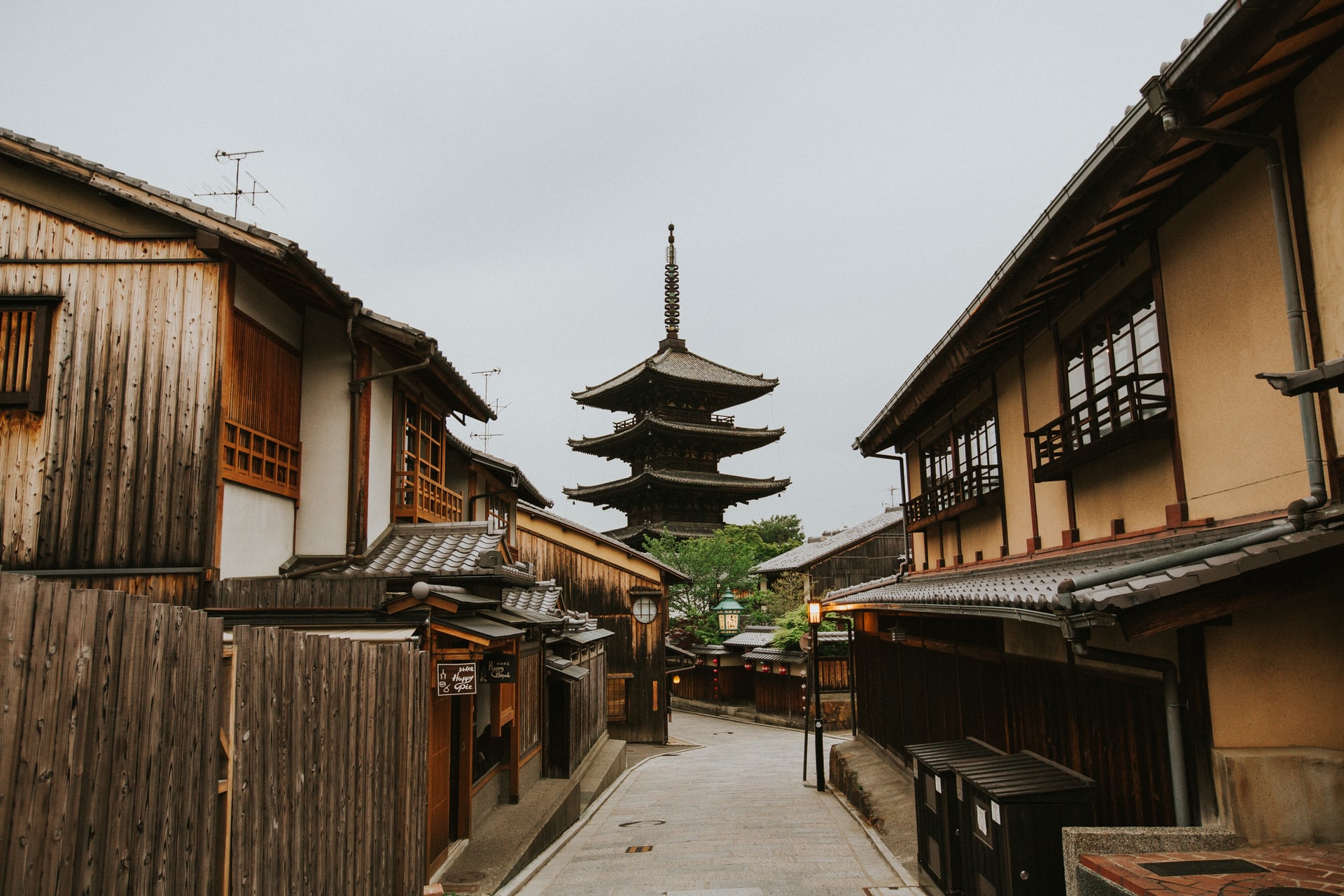
The Classic Japan Tour follows the historic Tokaido road from Tokyo to Kyoto. It is a great opportunity for first time travelers to experience some of the iconic features that the country has to offer. Stay in a traditional Ryokan on the mountainside of Hakone, ride the extensive ropeway across the mountains for a great view of Mt. Fuji (weather permitting), and walk the ancient streets of Kyoto and try to spot a Geisha!
Depending on when you take this self guided tour you may see the beautiful blooming cherry blossoms (typically the first week of April) or the luscious and bright colors of fall (October through December). Please keep in mind that trees do not always bloom as predicted. It is possible that due to an exceptionally warm or cold season that the cherry blossoms will not be in bloom during your visit in Spring.
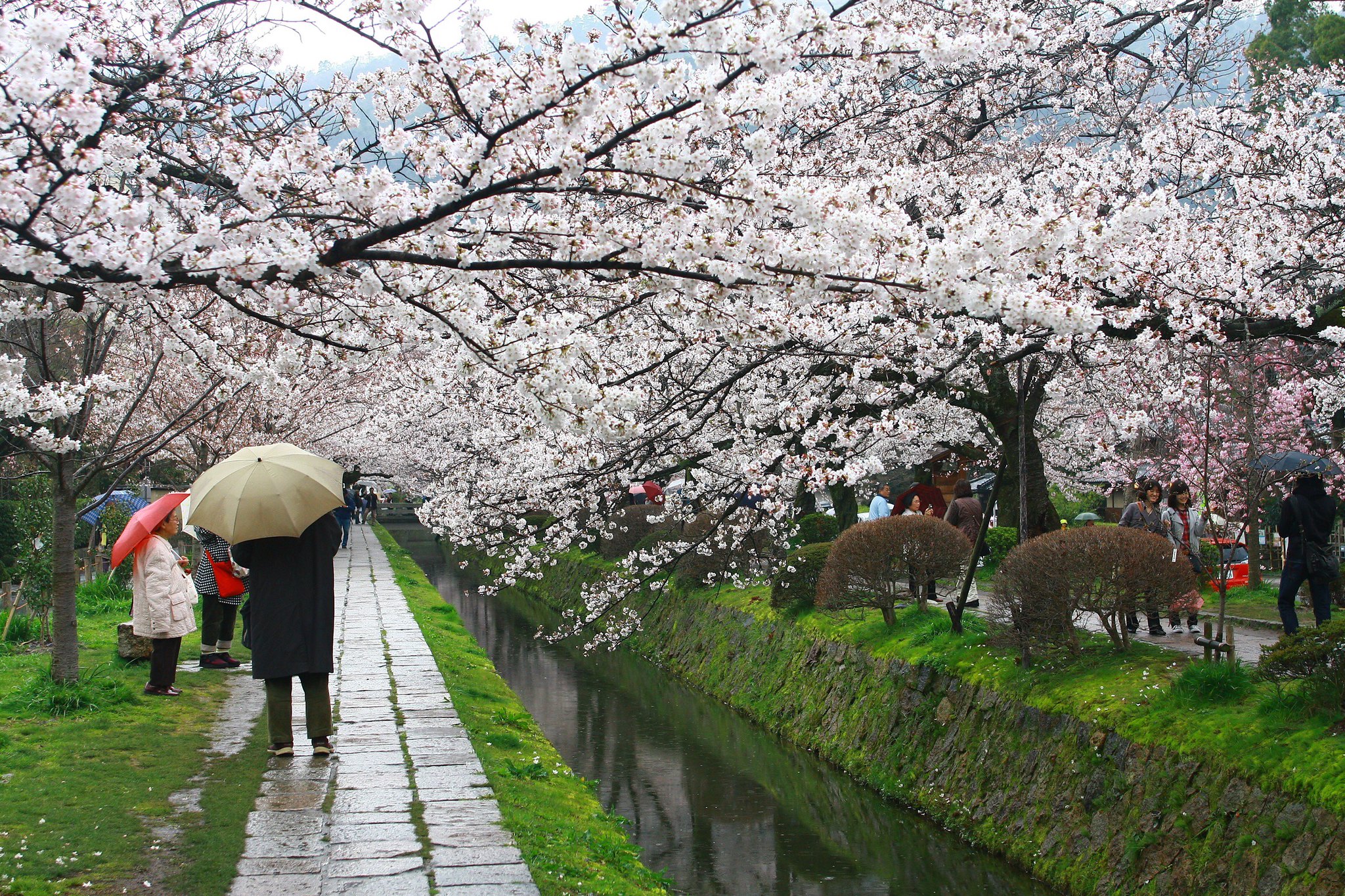
Experiences to Choose From
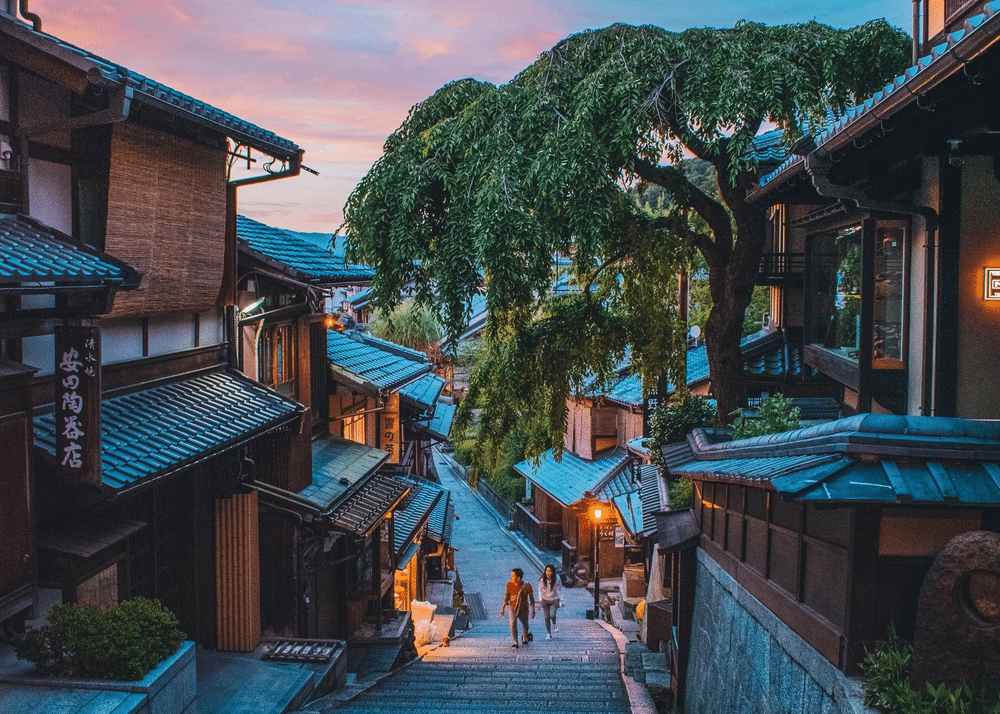
- Ride a Bullet Train
- Stay the Night in a Japanese Guest House
- Relax in a Onsen (Hot Spring)
- View the Majestic Mt. Fuji(Weather permitting)
- Sail a Pirate Ship Across Lake Ashi
- Fushimi Inari Taisha Shrine visit
- Visit with a local family and enjoy a meal in their home(Based on availability)
- Peace Park Atomic Bomb Site in Hiroshima
- Great Torii visit on the Sacred Island of Miyajima
- Gion, Kyoto Geisha District visit
- Old Preserved Shopping Districts
- Shibuya visitThe Time Square of Tokyo
- SkyTree visitSee all of Tokyo laid out before you!
Day 1 Arrive in Tokyo - Introductions
Finally! You have arrived in Japan! Check into your hotel and get settled, then follow the provided Self-guided Introduction Tour of Japan. This will allow you to get your first taste of adventure by walking the streets of Tokyo. You can use this time to help familiarize you with the customs, the transportation system, and maybe teach you a few useful phrases!
Walking: Light // Included Meals: None
Day 2 Riding Trains and Relaxing in Onsen
Shinjuku Station is the busiest train station in the world, servicing 3.5 million passengers a day! Use your time in the morning to explore the maze of shops that stretch through the station (we’ll probably even find some good breakfast!).
Then, riding the fabled Odakyu Romancar, enjoy a scenic ride into the Hakone mountains. Enjoy lunch on the mountainside before continuing on to the delightful Ryokan where we will be staying. This guest house has Onsen, hot spring baths where you can soak and relax from the long travels that started off this trip.
Finish off the day with a traditional Kaiseki meal in your room!
Walking: Medium // Included Meals: Dinner
Day 3 Visit Hakone Lake and See Mt. FujI!
Enjoy a delicious breakfast served at the Ryokan and check your bags at the front desk for the “Hakone Carry Service”; they will take your bags to the train station for you so you can explore Hakone bag free!
Travel along the ropeway across the mountain peaks and catch a magnificent view of Fuji (weather permitting). Stop to try the black eggs cooked in the naturally boiling hotsprings. Sail across Lake Hakone in a pirate ship and walk the ancient Tokaido trade route through a path lined with giant cedar trees.
Discover the beautiful Hakone Shrine and enjoy lunch before heading back to the train station by bus!
Then ride the famous shinkansen (bullet train) to Osaka!
Walking: Heavy // Included Meals: Breakfast
Day 4 The Ancient Streets of Kyoto & Geisha
Start your day with a walk through the streets of Kyoto to the famous Kiyomizu-dera temple. Walk the temple grounds, see the great stage that towers above the trees, and make a wish at the Otowa Waterfall.
Continue down the hill through the incredibly well-preserved streets of Higashiyama, Ninenzaka and Sannenzaka. These streets are known for the shops, cafes, restaurants, and preserved homes! You can just feel the history oozing from every wall and stone around you.
Finish the walking tour at Maruyama Park and/or Nishiki Market!
As the sun begins to set, explore the nearby streets of Gion! Full of ancient history and traditions, Gion is at the center of the modern day Geisha. Maybe you’ll even spot one!
Walking: Heavy // Included Meals: None
Day 5 Kyoto Shrines and Bamboo Forests
Back in Kyoto again, find yourself at the infamous Fushimi Inari Taisha shrine. Reflect as you walk through the seemingly endless torii gates that carve a path through the forest. Enjoy the street food that is regularly available near the entrance of the shrine, tasting the rich culture of Japan.
If available for your tour, enjoy a tour of the Fushimi sake breweries and taste various local sakes from the area!
Continue your day by choosing your path, Tofukuji temple or Arashiyama bamboo forest! Both are beautiful and worth visiting. Tofukuji is a large temple with beautiful scenery and a sense of serenity. The bamboo forest is amazing to walk through and the local town usually has street food available during the cherry blossom season.
Day 6 Day Trip to Hiroshima & the Sacred Island of Miyajima
Take an early morning bullet train to the sacred island of Miyajima. Explore the shrine and walk out to the Great Torii if the tide is out. The island also has many deer who are eager to meet you! Walk the forest trails and visit the 5 story pagoda towering above the town.
From there, head into the heart of Hiroshima and enjoy a lunch of the city’s famous (and award-winning) okonomiyaki! Visit Peace Park, see the dome still standing after the atomic blast, ring the Peace Bell, and even leave an origami paper crane. This is a time to reflect on a sobering history and appreciate our newfound friendship with Japan.
Walking: Medium // Included Meals: None
Day 7 Travel to Tokyo!
Say goodbye to Osaka and Kyoto, your morning train to Tokyo awaits! During this ride you may catch another view of Fuji! Take this time to get settled in Tokyo and do some exploring of your own! Visit Senso-ji templ when it isn’t crowded and eat with the locals in a traditional izakaya on Hoppy Street!
For those into anime, we recommend venturing to Akihabara (Electric Town). This part of Tokyo is every anime fan’s dream. Stores and arcades on every corner!
Walking: Light // Included Meals: None
Day 8 Yoyogi Park and Tokyo Night Life
Take the day to explore Yoyogi Park and the Meiji Shrine! This large park and shrine are a central part of Tokyo life for locals.
Enjoy the latest crazy fashion by exploring Harajuku, crazy outfits, socks, and good food can be found there. Sometimes you’ll even see locals dressed in these marvelous fashions!
Finish the day with Shibuya, the Time Square of Tokyo. Light up brightly and never asleep, Shibuya boasts of many shops and eateries worth your time! Cross the scramble crosswalk and take a photo with Hachiko, or shop at one of the many stores (Tokyu Hands, Mega Donki, Disney Store, Marui and more!)
Day 9 Japan's Ancient History
Ueno Park is a beautiful park (full of cherry blossoms in the spring) and is a popular spot for locals to visit!
It can be a bit crowded at Ueno park because it is so popular, so start early! The park is surrounded by a zoo, and several museums so pick what you like! We’ll probably grab a snack or early lunch before heading out!
From the park we will walk through a large, picturesque cemetery with traditional headstones and beautiful cherry blossom lining the roads in spring or great orange and reds in the fall. This large cemetery houses famous artists, actors, and politicians from many eras!
From the cemetery we’ll venture into Yanaka Ginza, a traditional 1950s shopping street with original architecture and stores! There we can shop, snack and explore until dinner!
Walking: Moderate // Included Meals: None
Day 10 Asakusa and Sky Tree
Time to really explore Asakusa. Start at Sensoji temple before the shops open and immerse yourself in Japanese religion and culture. Once it hits 10 am, hit up Nakamise and let the shopping begin! This is a great time to find souvenirs for those at home or a great hat or fan for yourself!
After lunch, check out a lesser known area great for cherry blossoms in the spring too!. A thin strip of a park, nestled between residential areas with areas for kids to play. Walk and enjoy the quiet atmosphere of everyday life in Japan!
Before it gets too dark, climb to the top of Sky Tree, one of the tallest towers in the world! See Tokyo stretch endlessly before you, the cars looking like toys because you are so high up!
Day 11 Final Day!
This is your final day and it is yours! This is an open day so you can visit any remaining sites, shrines, stores, or just walk aimlessly through the streets of Tokyo.
If you are leaving Japan on this day, ensure that you arrive early at the airport so that you don’t miss your flight!
What is a self-guided tour?
A self-guided tour in Japan is a pre-planned travel package that provides you with a detailed itinerary, accommodation, and transportation options for exploring the country at your own pace. Unlike guided tours, you will not be accompanied by a tour guide, allowing you more flexibility and independence during your trip. You will also be handed Tour Aids that give you information about all the details you may need while traveling in Japan. Plus, you will have WhatsApp contact with us for any questions or concerns during your trip.
Can I customize my self guided tour?
You can customize your tour in some way by choosing among the different options, which typically include pre-night and post-night extension, meaning you can add one day before and/or after your trip. As there are plenty of options to choose from, it is best to do this with our help. That way we can understand your ideas and help you build a suitable itinerary.
How do I navigate Japan during my self-guided tour?
Japan has one of the most efficient public transportation systems in the world. Their trains are never (like, NEVER) late. But there are also plenty of travel options with busses and subways. You will get all this information on public transport passes as part of your Travel Aid package. Plus, most of the urban centers have English signage, so you’ll find it easy to get around.
Are meals included in self-guided tours in Japan?
Yes. Our self-guided tour packages usually include breakfast at your accommodations. Most travelers choose to have lunch and dinner by their own choosing because different places will offer different cuisine. Please check the details for each day to know if the meals are included or not. We can also provide recommendations for local restaurants and dining experiences to suit your taste.
Can I extend my self-guided tour in Japan?
Yes, you can add more days to your itinerary. You’ll need to get in touch with our support staff, and provide more information about your plans, so we can help you with the details.
Do I need a visa to travel to Japan?
No visa is required for blue countries including North American countries (Canada and United States) and all European countries (European Union, United Kingdom and Switzerland included). List of blue countries: https://www.mofa.go.jp/j_info/visit/visa/short/novisa.html . If you have another nationality, please contact the Japanese embassy in your country of residence to obtain this visa.
What do I do if I need help during my self-guided tour?
Most of the questions we could anticipate, are already answered in your Traveling Aid package. But in case you have something specific, you can always reach out to us via WatsApp. Our support staff is quick to respond to any questions or concerns you may have.

- Escorted Tours by Itinerary
- Escorted Tours by Date
Add-On Tours
- Escorted Tours FAQs
- Escorted Tours Terms and Conditions
- Self Guided Packages
- Self Guided FAQs
- Self Guided Tours Terms and Conditions
- Specialty Tours
- Private Tour Groups
- Pre and Post Cruise Tours
- How to Register and Booking Process
- Tour Discounts
- Staying In Ryokans
- Japanese Etiquette
- Food in Japan
- Preparing For Your Trip
- Baggage Transfers
- Smart Traveler Enrollment Program
- Weather in Japan
- Pocket WiFi Rental
- SUICA and ICOCA Cards
- Why Choose Samurai Tours?
- Meet Our Staff
- Frequently Asked Questions
- DIY vs Samurai Tours
- Ten Tour Commitments
- Gaijin on Getas Blog
- Travel Agents
Best of Japan Self Guided
More than any other country, the Japanese have managed to integrate ancient traditions and bleeding-edge technology harmoniously into their daily lives. With the perfect mix of new and old, and our most popular itinerary, the well-rounded Best of Japan Self Guided tour has something for everyone.
Proceed Booking
Already a member.
Forget Password?
Don't have an account? Create one.
Or continue as guest, adding item to wishlist requires an account, got a question.
Don’t hesitate to contact us. We are an expert team and we are happy to talk to you.
1.866.316.7268
[email protected]
Tour Details
In the best that Japan has to offer, you’ll enjoy a colorful mix of large cities like Tokyo and Osaka, quaint and traditional Takayama, the religious center of Koya-san, the ancient shrines and temples of Kyoto, the testament to peace of Hiroshima, and more.
You’ll stay overnight at a mountain-top Buddhist temple where Buddhist monks will serve you meals of Shojin Ryori (the traditional Buddhist vegetarian cuisine), attend prayer services at the temple early the next morning, and much, much more. You’ll visit Tokyo where the sheer energy will carry you away. From the Hakone area, you will get a view of the iconic Mt. Fuji (weather permitting).
You’ll explore Takayama where the locals have managed to maintain its traditional charm and where time seems to stand still. Finally, you’ll tour Kyoto. Kyoto with its Geishas dressed in their colorful kimonos and its narrow, cobblestone-paved alleys evokes the very image of Japan. A walk through Kyoto is a walk through over 1,000 years of Japanese history.
Tour Highlights
- Overnight at a Buddhist temple and attend morning prayer service
- Seven separate rides on a Shinkansen (bullet train)
Tour Inclusions
- 14 Day JR Rail Pass
- Meeting service at the arrival airport
- Baggage transfer from city to city
- Electronic version of Tour Handbook and Japanese History
- Detailed, easy-to-follow directions on how to travel between cities
- Bi-lingual maps, addresses and phone numbers for all your lodging
- English-speaking emergency contact number in Japan
- SUICA card pre-loaded with 2,500 Yen to be used on the subways in Tokyo, Kyoto and Osaka and the streetcars in Hiroshima
- Nankai Koya-san World Heritage Tickets (includes round-trip reserved seats on the express trains to and from Koya-san, round trip cable car tickets and bus passes on Koya-san
- Hakone Free Passes for travel in and around Hakone Yumoto Onsen
Tour Exclusions
- Airfare is NOT included.
- A printed itinerary is not included
- Alcoholic beverages, soft drinks and desserts are NOT included
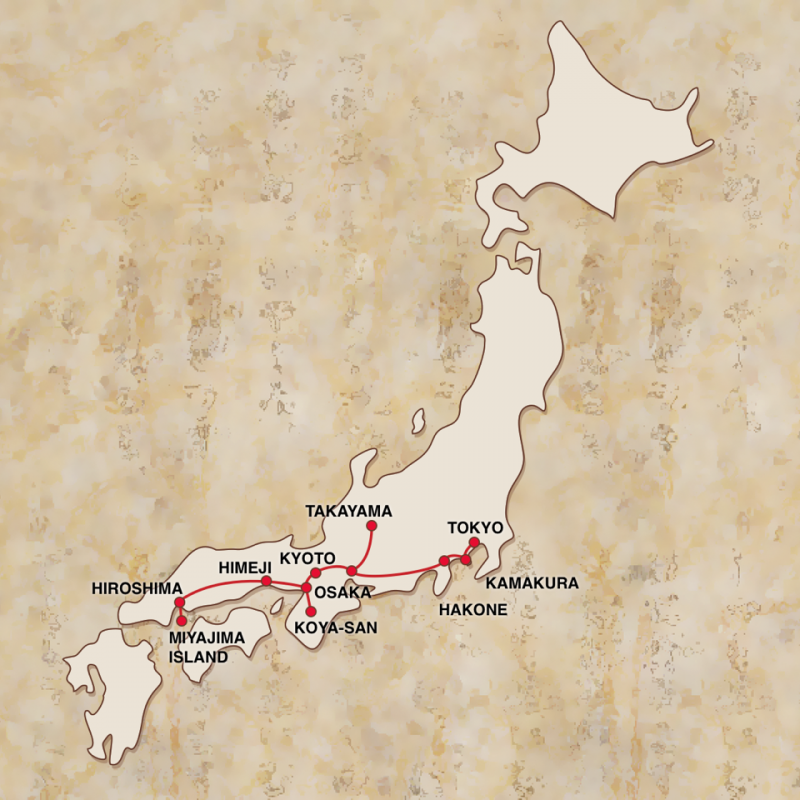
Tour Destinations
- Miyajima Island
Day 1 Arrive in Tokyo
You will be welcomed at Tokyo’s Narita Airport by a Samurai Tours representative who will help you with your rail pass exchange, obtain your limousine bus ticket into Tokyo, and assist with boarding the bus to your hotel in Tokyo. No meals included.
Travel: 1-1/2 Hours; Walking: Light
Day 2 Tokyo – Tokyo Tower, Ginza, Asakusa
After breakfast, the licensed, English-speaking guide will meet you in the lobby of your hotel/ryokan. The guided tour will start with traveling to Tokyo Tower. The Tokyo Tower is a communications and observation tower in the center of Tokyo. At 332.9 metres (1,092 ft), it is the second-tallest structure in Japan. The structure is an Eiffel Tower-inspired lattice tower with a main observatory at 150 meters that is reached via elevator or a 600-step staircase. Thanks to the tower’s central location, the observatory offers an interesting view of the city despite being only at a relatively moderate height. Afterwards we will travel to the famous Ginza district. Ginza is recognized by many as one of the most luxurious shopping districts in the world, attracting visitors and regulars alike from across the globe. Before continuing we will stop for a Kushiage lunch (fried meat and vegetables on bamboo skewers). Next we will travel to the nearby Asakusa area. Here we will tour the Nakamise-dori, Senso-ji Buddhist Temple and the Asakusa Shrine where you will learn about Buddhist and Shinto Japanese religious practices. Breakfast at the hotel and lunch at a local restaurant include
Travel: 1 1/2 Hours; Walking: Medium
Day 3 Tokyo
Today is free to explore Tokyo. We recommend starting the day by traveling to Tsukiji Market, the world’s largest fish market. It is estimated that 20% of all the fish caught in the world pass through this market. There are two parts to the Tsukiji Market- the inner market and the outer market. The inner market is for wholesale business and the outer market is for retail. There are so many more exciting places to visit in Tokyo. You may want to go shopping for that perfect souvenir, visit the Meiji Shrine dedicated to the Japanese emperor of the 19th century, or wander through the trendy Shibuya or Harajuku districts where you will more than likely see interesting and far-out fashions. Breakfast at the hotel is included.
Travel: TBD
Day 4 Travel to Kamakura; Tour Kamakura; Travel to Hakone
Before checking out, you will transfer your main luggage to Takayama, and will be traveling to Hakone and Takayama with overnight bags only. You will travel by local trains to the ancient city of Kamakura, the former capital of Japan in the 13th century. You can visit Hase-dera temple, originally established in the 8th century which houses a famous Kannon statue made from wood and gold leaf, and also has a commanding view of the nearby ocean. Next you can visit Kotokuin, the home of the famous Kamakura Great Buddha. This 40-foot tall bronze statue of Buddha, built in the 13th century is an icon of Japan. Later in the afternoon, you will travel by local trains to Hakone Yumoto onsen. Here you can rest and relax the in thermally-heated mineral waters of the bath at the ryokan. Breakfast at the hotel is included.
Travel: 2 1/2 Hours
Day 5 Tour Hakone; Travel to Takayama
After checking out, you will tour the Hakone area. Hakone is famous for its natural beauty and the view of nearby Mt. Fuji (weather permitting). Be sure to stop at the Owakudani. Owakudani offers magnificent views of Mount Fuji in what is still an active volcanic region. Here at Owakudani, you will have free time to explore the thermally-heated pools and mud pots. You can try one of the “black eggs” which are eggs hard-boiled in the thermally-heated mineral waters. It is said that if you eat one of these eggs it will add seven years to your life (it is probably said by the people who sell the eggs). Late in the afternoon, you will travel by local train, bullet train and express train to Takayama. Takayama, in the middle of the Japan Alps, with its traditional inns, shops, and sake breweries, has managed to retain its traditional charm. After checking in you can enjoy dinner at one of the many restaurants specializing in Hida Beef. Hida Beef is the same thing as the more famous Kobe Beef. You will retrieve your main luggage from your hotel in Takayama. Breakfast at the ryokan is included.
Travel: 5 Hours
Day 6 Tour Takayama
We recommend starting the morning at the farmers market strolling past the vegetable stands and stalls selling herbs, pickles, and souvenirs, sampling the numerous options as you go. In the afternoon, the choices for what to do are abundant. You can explore the Takayama Jinya, visit the many temples, see numerous shrines and museums, rummage through antique shops, or relax at one of sake breweries. You may also take the bus to the Hida-no-Sato Open Air Museum with its traditional, thatched-roof homes from the surrounding area, or visit the Yatai Kaikan, a museum chronicling the famous festival held every April and October in Takayama. Breakfast at the hotel is included.
Travel: N/A
Day 7 Travel to Koya-san; Overnight at a Buddhist Temple
Before checking out, you will transfer your main luggage to Osaka. You will board an express train and Shinkansen bound for Osaka, and continue on to Koya-san by train and funicular. Koya-san is the world headquarters of the Shingon school of Esoteric Buddhism. Kobo Daishi, considered by many to be the most influential religious person in Japanese history, established a religious community here in the year 816. After checking into your shukubo (Buddhist temple lodging), you are free to roam and visit one of the 110 temples in the area, wander through the nearby ghostly cemetery at the famous Okuno-in temple, or just rest in the garden at the shukubo. Your dinner of shojin-ryori (traditional Buddhist vegetarian cuisine – no meat, fish, onions or garlic) will be served. Breakfast at the hotel and dinner at the temple included.
Travel: 7 Hours
Day 8 Tour Koya-san; Travel to Osaka
Very early in the morning, you can attend o-inori (Buddhist prayer service). After the prayer service, a shojin-ryori breakfast is served. Following breakfast you can tour the Garan and Kongobu-ji Temples, or wander through the huge cemetery leading up to the Okuno-in Temple, where Kobo Daishi is buried. Many Japanese still believe that Kobo Daishi is not dead, but merely in a very advanced state of meditation, waiting to awaken at the appropriate time. In the afternoon, you will travel by funicular and train back to the city of Osaka. In the evening, you can enjoy the famous South Osaka entertainment districts of Dotombori, Shin-Sekai and Namba. You will retrieve your main luggage from your hotel in Osaka. Breakfast at the temple is included.
Travel: 3 Hours
Day 9 Travel to Himeji; Tour Himeji; Travel to Hiroshima (optional Miyajima Island upgrade available)
Before leaving in the morning, you will transfer your main luggage to Kyoto. On your way from Osaka to Hiroshima you can tour the Himeji Castle, a significant piece of architecture from the Feudal Period. Built about 400 years ago, Himeji Castle is one of the largest and oldest original castles, and is one of only four castles designated as a national treasure and is also designated as a UNESCO World Heritage Site. In the afternoon, you will travel by Shinkansen to Hiroshima, or you can choose to upgrade to the Miyajima Island option and travel by ferry across the bay where you will stay on the island. Breakfast at the hotel is included (dinner at the ryokan included for the upgrade option).
Day 10 Tour Miyajima Island
Today you will visit Miyajima Island, considered by the Japanese to be one of the three most beautiful spots in Japan. You can ride the cable car to the top of the mountain on Miyajima Island, visit the Itsukushima-jinja shrine which was built in its present form in 1168, or just take in the beauty and ambiance of Miyajima Island while enjoying grilled oysters, the island’s specialty. Breakfast at the hotel/ryokan included.
Day 11 Tour Hiroshima; Travel to Kyoto
In the morning you can tour the Peace Memorial Museum and the Peace Memorial Park, both sobering testaments to the dropping of the A-bomb on August 6, 1945. In the afternoon, you will travel by Shinkansen (bullet train) to the city of Kyoto. For many, just the name of Kyoto conjures up the classic images of Japan: streets of traditional wooden houses, the click-clack of geta (wooden sandals) on the paving stones, geisha in a flourish of brightly colored silks, and a tea master warming water and making tea. You will retrieve your main luggage from the hotel in Kyoto. Breakfast at the hotel is included.
Day 12 Tour Kyoto
Today is free to explore Kyoto on your own. Steeped in history and tradition, Kyoto has in many ways been the cradle of Japanese culture. A stroll through Kyoto today is a walk through 11 centuries of Japanese history. Here you can visit Kinkaku-ji. Kinkaku-ji, also known as the Golden Pavilion, is one of Kyoto’s, as well as Japan’s, most recognizable attractions. The gleaming building covered in gold leaf seems to float on the aptly named Mirror Pond, especially on a sunny day. If you would like, visit Nijo Castle next. Built in 1603, it was the Kyoto home of Tokugawa Ieayasu, the first Tokugawa Shogun. The ostentatious style of construction was intended as a demonstration of Ieyasu’s prestige, and to signal the demise of the emperor’s power. The finest artists of the day filled the castle with delicate transom woodcarvings and paintings by the Kano School on sliding doors. One of the castle’s most intriguing features is the so-called “nightingale” floors. To protect the Shogun from real or imagined enemies, these floorboards creak when stepped on. Breakfast at the hotel is included.
Day 13 Tour Kyoto
Today we suggest you travel by train to the nearby city of Fushimi, one of the largest sake producing regions of Japan. Here you can visit the Fushimi Inari shrine. This Shinto Shrine, established in the 8th century, is famous for the long tunnels of vermilion torii gates straddling a network of trails leading to the top of the heavily forested Mt. Inari. Next, you can visit the famous Kiyomizu-dera temple. Kiyomizu-dera literally translates to “Pure Water Temple”. For centuries, visitors and pilgrims have climbed the hill to the temple standing on a steep hillside with fine views of the city of Kyoto. Supported by 139 pillars, the temple juts out over the valley. Finding the courage to set out on a daring, new adventure is likened to “taking a leap from the veranda of Kiyomizu”. From Kiyomizu, you can walk through the Higashiyama District of Kyoto. This area of narrow, cobblestone alleys with its numerous shops and restaurants is truly enjoyable and relaxing. Next, walk to the famous Gion Geisha District. Here, you will see where the Geisha live and work. You may even see one on their way to one of their appointments. Breakfast at the hotel is included.
Day 14 Return Home
It’s time to say “sayonara” (goodbye) to Japan. You will take the express train to the Kansai International Airport (Osaka), or return to Narita Airport (Tokyo) by Shinkansen and express train for your flight back home (if you are flying out of Narita Airport, be sure to schedule a flight after 15:00) If you sent your luggage ahead, you will need to retrieve the luggage in the Departure lobby of the airport. Breakfast at the ryokan included.
Travel: 4 Hours
Dates & Pricing
Low Season- $ 3,154.00 (per person, based on double occupancy) January 6 – February 28 June 16 – August 10 August 19 – August 31 November 16 – December 24
Regular Season- $ 3,544.00 (per person, based on double occupancy) March 1 – March 16 May 7 – June 15 September 1 – October 14
Peak Season- $ 3,799.00 (per person, based on double occupancy) March 17 – May 6 (Cherry Blossom & Golden Week) August 11 – August 18 (Obon Holiday) October 15 – November 15 (Fall Foliage) December 25 – January 5 (New Years)
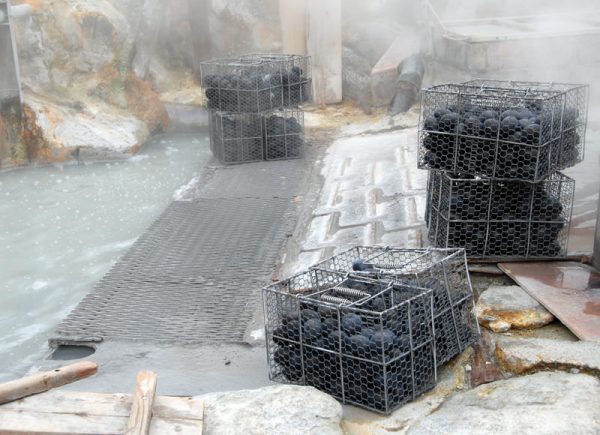
Our tours and tour itineraries are the best, but as the saying goes, “you can’t make everyone happy all of the time”. There may a specific destination or a specific experience you may want to include in your visit to Japan that may not be included your tour. Choose from our Add On tours to include your interests and make your Japan tour even better.
Click HERE to view all of the Add-On Tours.
Or, use the arrows to scroll though the recommended list of Add-On Tours for this tour.
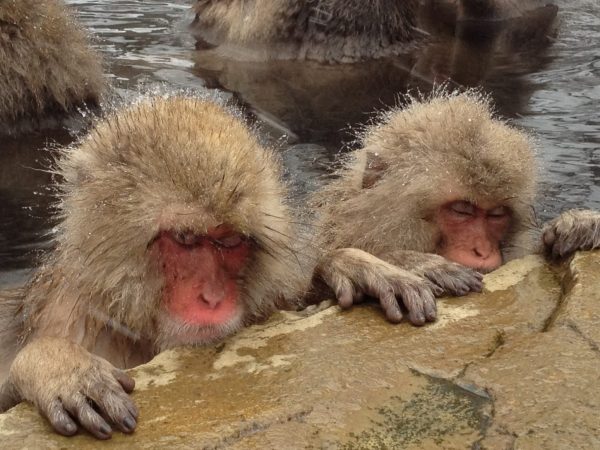
- Accommodations in 3 Star hotels or ryokans including all taxes, fees and breakfast every morning (contact us about accommodation upgrades)
- Tokyo: Western-style hotel such as Shinagawa Prince Hotel
- Hakone Yumoto: Japanese-style ryokan such as Hakone Tenseien
- Takayama: Modern Japanese-style hotel such as Takayama Ouan
- Koya-san: Japanese-style Buddhist Temple such as Shojoshinin Temple
- Osaka: Western-style hotel such as Cross Hotel Osaka
- Hiroshima: Western-style hotel such as Hotel New Hiroden
- Kyoto: Western-style hotel such as Kyoto Hatoya Hotel
- 14 Day Ordinary Car JR Rail Pass
- Meeting service at the airport (for Narita Airport arrivals only)
- Airport transfers
- 8 Hours of guiding service from a licensed, English-speaking guide
- Suggested train schedules including train schedules for 2 hours prior and 2 hours after the suggested time to allow you to choose your own times
- SUICA card pre-loaded with 2,500 Yen to be used on the subways in Tokyo, Kyoto and Osaka and the streetcars in Hiroshima (2,500 Yen will allow as many as 7 or 8 trips depending on the length of the trips)
- Breakfast every day
- Electronic version of itinerary
- A copy of our “Gaijin on Getas” tour handbook (this is the same popular handbook our escorted tour members receive) which contains 180 pages of Japan travel tips, Japanese language tips, Japanese customs and etiquette and Japanese history to prepare you properly for your trip and allow you to enjoy Japan even more once you arrive
- Baggage transfer forms (we will provide the necessary forms in Japanese to transfer your main baggage ahead, allowing you the freedom of traveling light. Baggage transfers take one full day and night, so you will travel with an overnight bag. The actual transfer fees are not included and will be paid by you at the time of transfer. These fees normally run between 1,250 Yen and 2,500 Yen)
What’s Not Included
- Airfare is not included
- Local transportation (subways, buses, taxis, etc.)
- All admission fees
- Lunches and dinners (except where noted)
- Desserts at any included meals (except where noted)
- Drinks other than water and tea at any included meals (except where noted)
Judy Fantham and David Hillock
This was a real adventure for us and it put to the test our cognitive abilities to navigate the transit system. But a self-guided tour allowed us to set our own agenda (to a degree) and visit restaurants and sites that may have been otherwise inaccessible by a large group.
Well organised
Karla Hicks
Wonderful trip of a lifetime! It was wonderful to explore on our own but still have the support and scaffolding of Samurai Tours
Diane Dayton
Great trip!
Related Tours
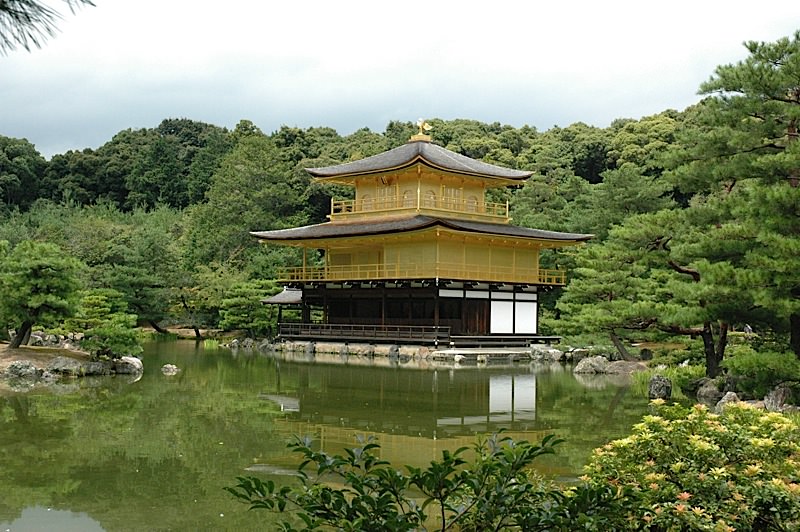
Tokaido Highway Self Guided
Best of kyoto and beyond self guided.
- Japan Tours
- Self-guided Tours
Self-Guided Tours of Japan 2024/2025
With a world-class public transport network and popular tourist routes to follow, Japan is easy to explore without the assistance of a guide. Whether you want to explore the incredible street food scene in Tokyo, head out to the hot springs and onsens of Hakone, or carve up the slopes in Niseko, there are plenty of amazing self-guided tours of Japan that you can take advantage of. Independent tours of Japan allow you to see the best parts of the country in an affordable way and without having to worry about logistics.
- Things to do in Japan
- Best Time to Visit Japan
2 self-guided tours in Japan

- Starts Osaka, Japan
- Ends Osaka, Japan
Hiroshima Peace And Prayers By Bullet Train from Osaka
- Trip customizable
- Best price guaranteed
- Tour Type Group Tour
- Activities City sightseeing & Cultural, religious and historic sites City sightseeing , Cultural, religious and historic sites & War sites 'data-more-tripid='27987'>+1 more
- Accommodation Hotel
- Transport Train & Bullet Train
- Age Range 18-99 yrs
- Operated in English
- View More Jan 1, 2019 Jan 2, 2019 Jan 3, 2019

- Starts Tokyo, Japan
- Ends Tokyo, Japan
Best of Japan
- Tour Type Independent Tour
- Activities Explorer
- Accommodation Hotel & Guest House
- Transport Boat, Bullet Train, Ferry, Private Vehicle, Coach & Bus
- Age Range 8-95 yrs
- May 04 10+ seats left
- May 11 10+ seats left
Going to Japan? Chat with a local travel expert in Japan who can help design a self-guided trip to Japan.

Self-Guided Tours of Japan
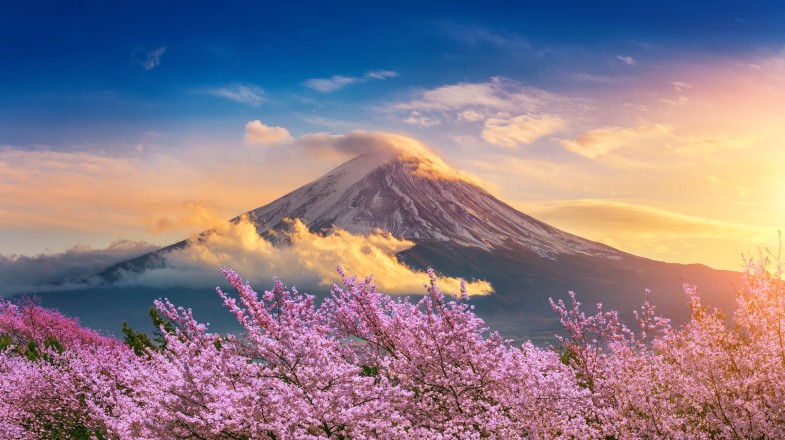
Here are our favorite self-guided tours of Japan:
- A quick independent tour of Japan: Explore bustling Tokyo, where you can eat at ramen shops and enjoy the Harajuku district in your own time. Visit the cultural and historic city of Kyoto, interact with geishas and take the time to learn the ancient art of Japanese tea ceremonies. Jump on the legendary bullet train and glide through Japan like a local. Hike in Mount Fuji , the Kinkaku-ji golden pavilion, and more, all on a pre-organized Japan itinerary. Give yourself all the time you need in each place without being rushed around as in guided tours.
- A self-guided tour of Hakone : This gateway to Mount Fuji is known worldwide for its natural springs and stunning surroundings. Spend a few days in the area as you explore Fuji Hakone National Park, wandering solo or with a small group and taking in the history and beauty all around you. Once you are done exploring the area, head to the famous hot springs and have some much needed “me time” soaking up and revitalizing your body in the onsen. Take advantage of the pre-organized bullet train transfers and Hakone area passes that make exploring the area a breeze.
Independent Japan tours based on popular travel theme

Travel experience and benefits of self-guided tours of Japan
- Self-guided itineraries mean that some excursions, such as cooking courses in Kyoto, are pre-booked for you from reputable sources.
- Get the freedom of getting lost and discovering different paths in Fuji Hakone National Park. Uncovering new routes and getting off-the-beaten paths can only happen on a holiday without a designated guide.
- Self-guided tours of Japan allow you to have a lie-in or a chilled day afterward if you need it.
- Self-guided tours often come with either travel or city passes to help you get the most out of your time in a city without forcing you into rigid tour structure.
Tips when doing self-guided tours of Japan
- Not many people in Japan speak English, so learn some basic Japanese if you are on a self-guided tour.
- Japanese public transport is famously punctual, so try and get there 5-10 minutes early.
- Without a guide, it is your responsibility to adhere to cultural guidance. For example, some onsens do not allow individuals with tattoos.
Self-guided and independent tours
- Asia self-guided tours
- Mediterranean self-guided tours
- Middle East self-guided tours
- South East Asia self-guided tours
- Vietnam self-guided tours
- India self-guided tours
- Thailand self-guided tours
- Jordan self-guided tours
- Japan trips
- Japan budget tours
- Eco tours in Japan
- Japan guided tours
- Japan family tour packages
- Japan luxury tours
- Japan private tours
- Japan small group tours
- Japan solo trips
- Japan tailor-made vacation packages
- Japan tours for senior citizens
- Japan tours for young adults
- Japan group tours
- Japan last minute deals
- Japan travel deals
Japan upcoming departures
- Spring 2024/2025
- Summer 2024/2025
- Winter 2024/2025
- August 2024
- September 2024
- October 2024
- November 2024
Sign-in to unlock instant trip discounts. Create wish lists and save up to USD 1,500.
Other Information
- Travel Trade
- Join Our Team
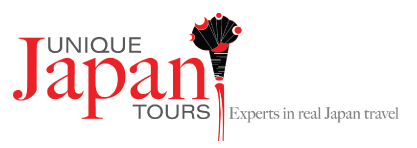
Find my trip
- All Tour Types Self-Guided Adventures Escorted Groups Summer Games 2021 Tailor-made Tours Self Guided Tours Small Group Tours Ski Japan
- All Durations 11-14 Days 15-19 Days 4-6 Days 7-10 Days All Duration
- All Preferred Dates Any Month January February March April May June July August September October November December
Self Guided Tours
All self-guided tours of Japan listed are designed for the first time visitor as well as for repeat visitors. Some tours will offer more adventure and off-the-beaten-track locations, but don’t worry about this – we will plan it for you – giving you ample information before travelling, hence making it a memorable and exciting trip.
Our self-guided tours of Japan are designed for the independent traveller who enjoys finding their own way around and is up for the challenge of using our access maps to find your way from one place to the next. Part of this experience is travelling around Japan like a local, using public transport and taxis.
Showing 1–12 of 13 results
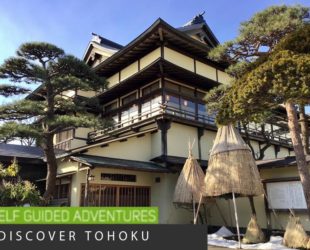
- Discover Tohoku
From the neon metropolis of Tokyo city, you will voyage north on a path less trodden to discover the wonderful wonders of Tohoku. Ride on the Granclass luxury bullet train to the northern prefecture of Aomori before exploring the sublime nature and spectacular scenery of Akita prefecture. Forage for wild ingredients in native forests. Stay overnight in a temple, visit authentic samurai villages and dip in 300 year old onsen close by stunning lakes, mountains and forests. Visit multiple UNESCO world heritage sites, and the occaisonal large city to contrast modern Japan with it ancient samurai past. Relax and eat like an emperor in luxurious Japanese style ryokan and stay in some historic inns before spending a night in the incredible 5 star Ritz Carlton Nikko for a final rest before returning to Tokyo city.
Route: Tokyo - Owani Onsen - Noshiro - Oga Peninsula - Kakunodate - Lake Tazawa - Sendai - Aizuwakamatsu - Ochijuku - Nikko - Tokyo Duration: 15 Nights/16 Days (Pre or Post Nights available on request) Starts: Tokyo Ends: Tokyo Tour Size(Min/Max): Minimum 1 person / Maximum 6 people (if your group is more than 6 people, contact us to receive group quote ([email protected])
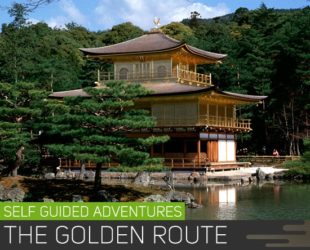
- The Golden Route
A popular course for first time visitors to Japan, The Golden Route will give you a well balanced understanding of Japanese history and culture by covering the ancient capital Kyoto, the historic Hiroshima, the World Heritage Miyajima Island, and the metropolitan Tokyo. Experiencing many first time cultural differences that will wet the appetite for a return visit! Rural ryokan retreat in the heart of the Fuji National Park and on the Unesco World Heritage Miyajima Island, both nights will give open your eyes to the real Japanese way of travel & living. If you feel like staying for longer, Matsumoto and Takayama can be added on before you return to Tokyo.
Route: Tokyo - Kawaguchiko or Hakone (Mt Fuji) - Kyoto - Hiroshima & Miyajima Island - Tokyo Duration: 9 Nights/10 Days (Pre or Post Nights available on request) Starts: Tokyo Ends: Tokyo Tour Size(Min/Max): Minimum 1 person / Maximum 6 people (if your group is more than 6 people, contact us to receive group quote ([email protected])
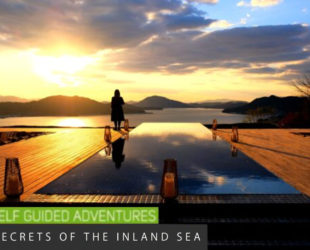
- Secrets of the Inland Sea
“Secrets of the Inland Sea” is a wellness tour with escapism and inner soul searching at the heart of its foundation. You will be guided through cities and villages that are rich with culture and serenity. Experience a blend of Japanese and western luxury’s along a coastal scenic journey through the south west of Japan, witnessing incredible nature, seaviews, landscapes and of course tasting delectable food along the way. Enjoy romantic strolls on sandbars, through rice paddies and olive gardens. Soak in some of Japan’s oldest onsen (hot springs) and recharge your mental health during forest bathing in serene forests and gorges.
Route: Kyoto – Arima Onsen – Hiroshima – Nagato – Onomichi – Dogo Onsen – Takamatsu – Shodoshima – Tokushima - Osaka Duration: 15 Nights/16 Days Starts: Kyoto Ends: Osaka
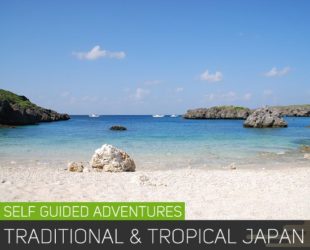
Traditional & Tropical (No. 1 Japan Honeymoon)
This tour of Japan is a particular favourite with couples, especially honeymooners, or those looking for somewhere to relax at the start or end of a whirlwind trip through Japan! Experience the traditional Japan, the bright lights of Tokyo and Osaka, the quaint back streets of Kyoto, and the subtropical islands in the south pacific region. Many of us forget that Japan is home to hundreds of tiny islands that offer a uniquely contrasting experience to that of the mainland. Just a short flight from the mainland you can suddenly be a tropical paradise! Pure bliss to those looking for somewhere to unwind.
Route: Tokyo - Yudanaka Onsen - Snow Monkey Park - Matsumoto - Takayama - Kyoto (Hiroshima & Miyajima Island day trips) - Amami Ooshima OR Ishigaki Islands - Tokyo Duration: 14 Nights / 15 Days Starts: Tokyo Ends: Tokyo Tour Size(Min/Max): Minimum 1 person / Maximum 6 people (if your group is more than 6 people, contact us to receive group quote ([email protected])
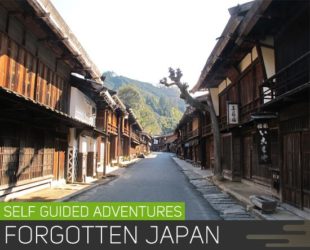
- Forgotten Japan
Upon arrival into the metropolitan city of Tokyo, you may find it difficult to imagine the old Japan, once associated with samurai and geisha . A Forgotten Japan tour captures the Japan everybody wants to see; the ancient postal routes linking villages to towns from Tsumago to Magome; the four-hundred year old thatched-roof farm houses in the UNESCO Gokayama in Toyama prefecture; the tea houses and geisha streets in Kanazawa and Kyoto; the castle towns and samurai houses of Matsumoto; and not neglecting the city that never sleeps: Tokyo. This tour of Japan is sure to remind you of the Japan that once was.
Route: Tokyo - Nagano/Jigokudani - Matsumoto - Takayama - Kyoto - (Optional day trips to Hiroshima/Nara) - Tsumago & Magome - Tokyo Duration: 14 Nights / 15 Days Starts: Tokyo Ends: Tokyo Tour Size(Min/Max): Minimum 1 person (Single Supplement will apply) / No Maximum

Young & Fun Japan
Young & Fun is the trip of a lifetime for the young sushi-loving manga maniac in your life! Cruise around Tokyo in a real life Mario Kart and post it on your Instagram story while sipping coffee in a Cat cafe. Climb to the top of Mt. Fuji and eat the world’s best street food in Osaka. You will have two nights in the rural remote area of Kiso valley & Mt Fuji National Park. The Nakasendo Walking Way , an old mountain route between Kyoto and Tokyo will be explored. Suitable for all levels of fitness.
Given the accommodation used on this trip, we recommend it for the 20’s-30’s age group. Rooms will be budget friendly (smaller than our normal room sizes) and your time spent on your own will be greater than the Golden Route or similar self-guided tours.
Route: Tokyo -> Mt. Fuji -> Kyoto -> Tsumago / Magome -> Tokyo Duration: 9 Nights/10 Days Starts: Tokyo Ends: Tokyo Tour Size(Min/Max): Minimum 1 / No Max
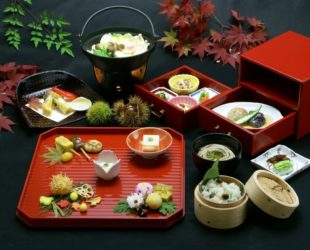
Taste Japan Deluxe
“Did you know that Tokyo has more Michelin star awarded restaurants than any other city in the world?”
Join us on a luxurious journey of cultural experiences; Michelin star restaurants, world heritage sites, deluxe hotel and luxury ryokan stays. This five star culinary and cultural tour ‘Taste Japan’ is perfect for those who appreciate outstanding food, wine and beautiful surroundings. Japan has quite the reputation for culture and cuisine. No matter how often you’ve frequented a ‘foreign’ Japanese restaurant in your own country or on your travels, none will compare to what you are about to experience.
Route: Tokyo - Kawaguchiko or Hakone (Mt Fuji) - Kyoto - Tokyo Duration: 9 Nights/10 Days (Pre or Post Nights available on request) Starts: Tokyo Ends: Tokyo Tour Size(Min/Max): Minimum 1 person
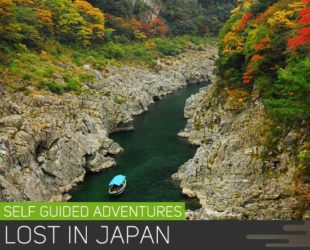
Lost in Japan (featuring Shikoku Island)
Lost in Japan takes you on a journey through the spiritual temples of Koyasan, hidden valleys and remote villages of Shikoku, and the must-see cities of Kyoto and Tokyo. Shikoku Island, the smallest of the four main islands, enjoys less populated towns and villages and is an excellent place to experience unique cultural traditions while meeting friendly locals and traveling along stunning scenic routes. Awa Odori Festival in Tokushima is not to be missed if you plan on traveling in August. One of Japan’s largest street festivals, it attracts more than one million visitors every year.
Route: Osaka/Kyoto - Koyasan - Tokushima - Iya Valley - Takamatsu - Naoshima Island - Matsuyama & Dogo Onsen - Hiroshima / Miyajima Island - Tokyo Duration: 14 Nights Starts: Kyoto/Osaka Ends: Tokyo Tour Size(Min/Max): Minimum 1 person (Single Supplement will apply) / No Maximum
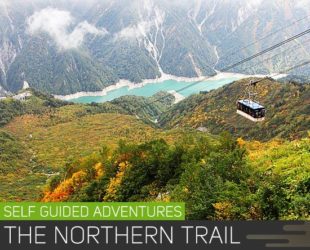

The Northern Trail featuring Sado Island
The Northern Trail featuring Sado Island tour has been designed for those looking to escape the major tourist trails and hit the fresh mountain air and fun rural festivals. These northern Japanese towns offer something unique and special and don’t feature on most regular tourist trails. Still including the highlights of Tokyo and Kyoto, this tour of Japan offers a very different way to experience this beautiful country.
Route: Tokyo - Kinugawa Onsen & Nikko - Niigata - Sado Island - Mt. Tateyama - Matsumoto (via Kurobe Alpine Route) - Kyoto Duration: 13 Nights/14 Days Self-Guided Adventure Starts: Tokyo Ends: Kyoto Tour Size(Min/Max): Minimum 1 person (Single Supplement will apply) / No Maximum
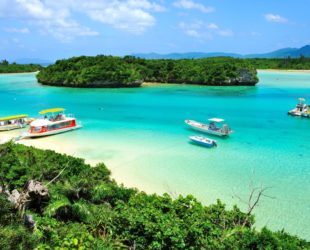
- Tropical Treat (5 Days Yaeyama Island Hopping)
Why not extend your trip to a calming luxurious paradise? After finishing your adventure on the mainland, [small group tour or a self-guided tour], take a short 2-hour flight down to the magnificent Yaemama Islands, staying in Japan’s Blue Zone Paradise. Spend your days by the beach/pool relaxing, snorkelling, island hopping, while catching the best sunsets on the planet! Explore the wonders and beauty of Ishigaki Island, Taketomijima and Iriomote Islands with their distinct culture, architecture, cuisine, white sandy beaches and beautiful clear seas.
Route: Tokyo/Osaka - Ishigaki Island - Taketomi Island - Iriomote Island (optional) - Ishigaki Island Duration: 4 Nights (or more) Starts: Tokyo (Haneda) / Osaka (Kansai or Itami) / Fukuoka Airports (or any major airport) Ends: Ishigaki Airport (Option to fly to Hong Kong from Ishigaki to your onward destination (instead of going back to Mainland Japan) Tour Size(Min/Max): Min 1 / No Max
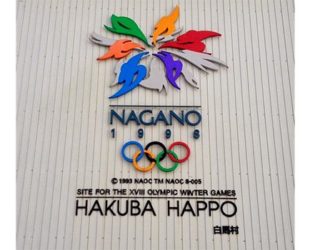
Ski Japan – Best of Nagano
If you are looking for an epic alpine adventure this winter, then Hakuba is one of the very best destinations in Asia if not the world. Host to the Winter Olympics in 1998, the ski resorts in Japanese alps compares favourably with the best resorts in Europe and North America. With a staggering 11m of snowfall annually (almost 4 times snowfall of leading resorts in the French Alps) there are more fresh tracks to be had and more bumper powder days to enjoy that most could resorts dream of. Only its competitor resort Niseko in the north Island of Japan can beat Hakuba in terms of regular powder snowfall. But, whilst Niseko may get heavier snowfall, the 10 resorts side by side in the Hakuba valley (sharing a common All-Mountain lift pass and with free shuttle buses between each) offer a more compelling range of terrain and slopes to explore.
A resort for all levels from beginner to advanced, you can choose from selection of 10 ski resorts, 137 ski lifts, 9 terrain parks, night skiing until 10pm and an endless choice of hiking trails. Also, the apres ski bars and restaurants in Hakuba village is known across the world for its fine cuisine and distinctly Japanese cultural experience (including a choice of 12 local onsens to soak your muscles after a hard day of riding the mountain)!
Route: Tokyo - Hakuba - Jigokudani & Matsumoto (day trip) - Takayama - Kyoto (Osaka) Duration: 10 Nights Starts: Tokyo Ends: Kyoto Tour Size(Min/Max): 1
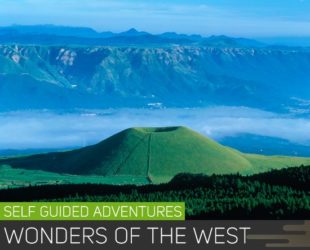
- Wonders of the West
Jump of the beaten track with both feet on this tour to the ancient West. Let us take you where tourists rarely have the chance to go and where history hides around every corner waiting to be discovered. Wonders of the West will take you to the island of Kyushu, the furthest western island of the great four major islands in Japan. Hot Springs, historical tales, Unesco World heritage at its best, country scenic drives and fresh air, away from the major cities and towns on the mainland.
Route: Kyoto - Fukuyama - Hiroshima - Fukuoka - Nagasaki - Kumamoto - Yakushima Island - Tokyo / Osaka Duration: 18 nights / 19 days (Pre or Post Nights available on request) Starts: Kyoto Ends: Tokyo or Osaka Tour Size(Min/Max): Minimum 1 person / Maximum 6 people (if your group is more than 6 people, contact us to receive group quote ([email protected])
Ireland & Global
United Kingdom
USA & Canada
Become a ‘Unique Japan Member’
Join our exclusive membership to receive seasonal offers & travel news updates.
- Your name *
- Sign me up to receive news and special offers *
- Comments This field is for validation purposes and should be left unchanged.

- Japan Rail Pass
- Japan Travel App
- Japan Travel Guide
- Popular Places
- Off The Beaten Track
- Experiences
- Japan Discovered
- Traditional & Tropical
- Shikoku Secrets
- Gardens & Galleries
- Ancient Trails
- Hidden Treasures
- Tohoku Trails
- Journey to the East
- Hokkaido Blooms
- Trail by Rail
- Tropical Treat
- The Kumano Way (Hiking Japan)
- Lost in Japan
- The Northern Trail
- Ski Japan – Best of Nagano
- Ski Japan – Best of Hokkaido
- Tailor-made Tours
- Join our Team
- Plan My Trip
- Online Payment
Experience the intriguing nation of Japan at your own pace with the invaluable help of Wayfarer Self-guided Tours. Drawing on the wealth of experience and knowledge amassed by Walk Japan in running guided tours in Japan since 1992, you are provided with the essential logistics, the necessary route support along with a great mix of historical relevance and modern cultural know-how for successful and satisfying independent touring of the Japanese countryside. All you need to do is relax and enjoy walking routes less travelled, and discover a side of Japan you probably never knew existed.
Self-Guided
Self-Guided Basho Wayfarer
6 days | May - November Activity Level : 2
Self-Guided Kiso Wayfarer
5 days | Year-round Activity Level : 3
Self-Guided Kumano Wayfarer
7 days | March - June & September - November Activity Level : 4
Self-Guided Kunisaki Wayfarer
6 days | January - June & September - December Activity Level : 5
Self-Guided Michinoku Coastal Wayfarer
10 days | April - June & September - November. Activity Level : 4
Self-Guided Nakasendo Wayfarer
7 days | March - June & September - November Activity Level : 3
Self-Guided Shikoku Wayfarer
6 days | March - December Activity Level : 4
Self-Guided Tokaido Wayfarer
6 days | Year-round Activity Level : 3
Please sign up here if you wish to receive our newsletter.
Walk Japan Ltd. will use the information you provide on this form to be in touch with you and to provide updates and marketing. Please let us know all the ways you would like to hear from us:
You can change your mind at any time by clicking the unsubscribe link in the footer of any email you receive from us, or by contacting us at [email protected]. We will treat your information with respect. For more information about our privacy practices please visit our website. By clicking below, you agree that we may process your information in accordance with these terms.
We use MailChimp as our marketing platform. By clicking below to subscribe, you acknowledge that your information will be transferred to MailChimp for processing. Learn more about MailChimp's privacy practices here .
Quick Links
- For Schools
- Destinations
- Japan Information
- Latest News
- Community Project & Sustainability
- Booking Conditions
- Privacy & Cookies Policy Statement
- Personal Information Collection Statement
Follow Walk Japan
© 1992-2024 Walk Japan Limited
Travel Agents License No. 354159
Website Design by Walk Japan and Development by Macareux Digital, Inc.
THE 10 BEST Japan Self-Guided Tours
Self-guided tours & rentals in japan.
- Historical & Heritage Tours
- Cultural Tours
- Sightseeing Tours
- Self-Guided Tours & Rentals
- Up to 1 hour
- 1 to 4 hours
- 4 hours to 1 day
- 5.0 of 5 bubbles
- 4.0 of 5 bubbles & up
- 3.0 of 5 bubbles & up
- 2.0 of 5 bubbles & up
- Chinese (Traditional)
- Chinese (Simplified)
- Likely to Sell Out
- The ranking of tours, activities, and experiences available on Tripadvisor is determined by several factors including the revenue generated by Tripadvisor from these bookings, the frequency of user clicks, and the volume and quality of customer reviews. Occasionally, newly listed offerings may be prioritized and appear higher in the list. The specific placement of these new listings may vary.

1. Day trip from central Fukuoka.Rental cycle in Shikanoshima island

2. 2h Electric Trike Rental in Okinawa Ishigaki

3. Tokyo E-bike Rental: Let's enjoy as a local!

4. Tokyo Go-Kart Rental with Local Guide from Akihabara

5. E-Bike Cycling with Guided Tour of Kanazawa Main and Ninja Temple

6. Unlimited WiFi Router - Haneda Airport (Tokyo) Pickup

7. Shirakawa-go From Nagoya One day Bus Self-guided Tour

8. City cycle (no gear change)

9. Rental of touring bikes and e-bikes

10. Japan eSIM - Data from 1 GB per day to 5GB

11. Tokyo Supercar Driving Tour: (Ferrari, Lamborghini, + More)

12. 2 days Kyoto Miyama bike tour self guided

13. Unlimited WiFi Router - Kansai Airport (Kyoto + Osaka) pickup

14. Rental Hybrid Bikes at JR Shizuoka Station (24 gears spots bikes)

15. Japan Unlimited WiFi Router - Narita Airport Pickup

16. Osaka Self Guided Sherlock Holmes Murder Mystery Game

17. City cycle (with motor)

18. Japan Unlimited WiFi Router - Free Delivery to Anywhere in Japan

19. 2h 3-seater electric trike rental (Ishigaki, Okinawa)

20. Mobile WiFi Rental with pickup at Naha (Okinawa) Airport

21. Explore Kagoshima by Ebike Rental

22. Private Scenic Cycling in Teshima Island includes Teshima Museum

23. Osaka Guide Tour (Kushikatu, Takoyaki)

24. Chitose River upstream viewing tour to experience salmon culture

25. Japan eSim (3 to 30 days, up to 60GB)

26. Tokyo Supercars Driving & Dining Experience

27. Experience the Unique "Oh, My Guide" Rent a Car in Kyoto

28. Izushi matchmaking, red stamp tour, local tour & guide

29. Rent a car and Explore the Island of the Gods, the Iki Island

30. Best way to travel in Osaka
What travelers are saying.
- Login | Sign up
Save on Summer! Use code SUMMER2024 for £100GBP off trips starting July & August 2024
Self-guided walking in Japan
- Get off the beaten path and experience Japan's unique culture and way of life
- Visit Japan's most iconic cities, exploring serene temples and neon cityscapes
- Take an 11th-century Kumano Kodo pilgrimage through rural Japan
- Stay and taste exquisitely hand-crafted meals in traditional Japanese inns
- Travel on the bullet train and relax as the beautiful scenery flashes past
- Walk the Nakasendo Trail, the ancient highway from Kyoto to Tokyo
- Relax in a soothing natural onsen bath after you finish walking each day
- Discover the highlights of Japan's 88 Shikoku Pilgrimage trail.
Self-guided walking holidays in Japan are an amazing way to discover authentic Japan. There is so much to discover and so many highlights that people are often overwhelmed with choice. While visits to Tokyo, Osaka and Kyoto are a must, there is nothing like getting off the train high in the mountains after a week in Tokyo and experiencing the serene, deep calm. Walking allows you to slow down, and experience rural life and a more traditional side of Japan, staying in some of the most beautiful and simple guesthouses you will ever stay in.
Walk the 11th-century Kumano Kodo Pilgrim's Trail through rural Japan to the three grand shrines of Kumano. There is also the immensely popular Shikoku Pilgrim Trail , where you walk from temple to temple on one of Japan's stunning islands. Alternatively, walk the Nakasendo Trail through rural Japan through the central mountains of Japan. A hiking route used since feudal times as an ancient highway that linked Kyoto and Tokyo through Japan's central mountains.
Since 2003, Macs Adventure has been helping hikers complete the world's great walks, from the Tour du Mont Blanc and West Highland Way to pilgrimages on the Camino de Santiago. In 2013 we introduced Japan and have since sent thousands of travellers on the Kumano Kodo and Nakasendo Trails and Shikoku Pilgrimages on Shikoku Island.

Our Japan Walking Range

Featured Adventures - Japan

Kumano Kodo Trail - Kyoto to Osaka

Nakasendo Trail (Walk Only)

Shikoku Pilgrimage Trail

Nakasendo Trail, Tokyo, Kyoto, Mount Koya & Nara

Kumano Kodo Trail (Walk only)

Nakasendo Trail - Kyoto to Tokyo

Shikoku Pilgrimage Trail Walk Only

Ancient Capitals: Nara & Asuka
Discover japan.
Macs Adventure has been running self guided walking holidays in Japan since 2013. Japan has such a unique culture and customs, but also a completely unique terrain that we wanted to find trips where hikers could immerse themselves and find the Japan of their dreams.
We provide the freedom to choose from our tried & tested routes, pick your own travel companions, and discover the Japanese culture and countryside at your own pace.
We know how daunting it can be, heading out to a country with such different ways, but we knew from experience how important it is to have amazing partners on the ground in Japan to deal with any issues that you might come across. We are proud to say that our Japanese team are outstanding and should you have the slightest issue, they will fall over themselves to help you out, whether it is simply asking which bus to take or something more serious.
We'll make sure you have comfortable, friendly overnight accommodation in a mix of hotels and traditional Japanese Minshuku and Ryokan (guesthouses). We plan out as much as we can, so that you can spend your time exploring exactly what you want to see in Japan. You can book with confidence that we have it all covered for you.
We want to showcase our expertise, by giving you all the resources you will ever need. In the planning stage, we have free guides, comprehensive videos and a host of staff with their own Japanese walking experience, waiting to answer your questions. On the route, we use high-quality digital mapping as well as the best maps and guidebooks to make sure you find your way.
We love Japan and our main aim is to make sure that you do too.

People often worry about causing offence and upset when visiting Japan. While the Japanese people are incredibly kind and forgiving, here are a few cultural tips to get you started.
Shoes - Removing your shoes when entering someone's house, or the occasional place of business is good manners. When you are on a walking holiday in Japan, in the more traditional accommodations, Minshuku and Ryokan, you will remove your shoes at the front door and be provided with slippers for the duration of your stay. You wear these everywhere indoors, with the exception of the toilet, where there is a special pair of toilet slippers. It sounds very rigid and complex but is actually great fun.
Bowing - Shaking hands is not really a thing in Japan. Some people will offer to shake hands out of respect for your culture, but in general, bowing is the way to go. It is a lovely experience to step onto the streets of Tokyo for the first time and see groups of people bowing to each other. It makes you realise where you are and it shows great respect when a foreigner takes on aspects of Japanese culture. It is generally only a short bow from the waist, but deeper bows show more respect.
Chopstick Etiquette - Chopsticks or Hashi ( 箸) in Japanese are used everywhere. You can always ask for a fork if you are struggling (Fōku フォーク) but it is a good idea to learn to use chopsticks before you go. However, just being able to use them is not all you need to know! There are a couple of things to keep in mind. The main ones are to never stick your chopsticks in a bowl of rice/noodles. If you are taking a break from eating, place your chopsticks on the little rest provided, or on the side of your plate. The other major no-no is to not pass food from one set of chopsticks to another. Both of these are linked to Japanese funeral rites, where large chopsticks are used and the last thing you want to do is compare the meal someone has cooked to a funeral!
Mindfulness - Ingrained in the culture of Japan is a wonderful sense of mindfulness. Nobody in Japan does two things at once, everyone focuses on the task at hand. So, nobody eats and walks at the same time, or smokes and walks at the same time. There are designated smoking areas and places outside 7-11s where you can eat. Don't speak on the phone and walk, or ride public transport, focus on your phonecall, then carry on with what you need to do. Small things, but worth replicating in the Western world.
Onsen Etiquette - Onsens are the (often natural spring) hot baths that Japanese people love. Onsens are a deep part of the culture and while we could write a book about Onsen rules, there are some basics to always obey. Intense showering must be done before entering the bath. The purpose of the bath is to relax, not to wash, so take a seat on the little stool and get washing. While everyone showers together (separated by gender of course) you do have a tiny towel with you should you wish to protect your modesty, and when you bathe, it is good form to sit this little towel on your head. It also comes in handy to wipe away sweat while in the bath, they are HOT, usually 40-43 degrees centigrade, but after the first couple of uncomfortable minutes, it becomes an act of pure bliss, particularly after a day's walking.
Japan is a cultural experience and there genuinely is no better way to experience it than to take a hike out into the less-travelled parts of the country.

Japan has become synonymous with the art of Forest Bathing (Shinrin Yoku). Forest bathing has actually become a vital part of the preventative healthcare system in Japan. Studies have shown it can reduce the stress of the sensory overload accumulated by modern lifestyles. Swap modern sensory experiences for the natural sights and sounds of the forest and take in the stillness around you.
Whilst you are likely to experience the hustle and bustle of Japan's major cities on our tours, you will also see the polar opposite of it by experiencing and connecting with the Japanese wilderness on the Kumano Kodo Trail, The Nakasendo Trail or the Shikoku P ilgrimage Trail.
So as you walk through these serene Japanese forests, why not try some Forest Bathing? Use all of your senses - Feel the rough bark of a tree trunk, listen to the rustle of the leaves, notice the different smells of the forest and take a minute to really look at the beauty all around you. Breathe deeply and embrace the almost meditative state you may find yourself in as you take in all the nature around you and allow your mind to rest!

Laura visited Japan, taking in Tokyo, Osaka, Kyoto and parts of the Nakasendo Trail and Kumano Kodo. This video shows you a little bit of what it is like to experience the crazy and calm side of this multi-faceted, wonderful country.
The Nakasendo Trail is the old road between Tokyo and Kyoto. This video shows you what it is like to walk this glorious trail, to escape to the serenity of the mountains and walk through tiny feudal towns, experiencing rural Japan, its outstanding hospitality and its incredible beauty.
The Kumano Kodo is an ancient pilgrimage through the mountains south of Osaka, to the Pacific Ocean. The route takes you through some incredibly scenic parts of rural Japan, allowing you time to walk at your own pace and drink in the natural, untouched beauty of the Japanese Countryside.

Follow us on social media
- twitter-x-logo@2x

24 Hours in Nara: A Self-Guided Tour to Explore the City in One Day
July 25, 2018 Updated On December 26, 2022
Plenty of people have heard of the city of Nara, but what they may not know is that between 710 and 794 it served as the capital of Japan. Even today, 1,300 years later, it remains one of the most important metropolises in western Japan, alongside Kyoto and Osaka. But not because of its political influence. These days, Nara is primarily known as a tourist destination. It’s home to so many attractions you won’t be able to enjoy all of them in a single day, but if 24 hours in Nara is all you’ve got, here’s how you can make the most of your stay in Japan’s old capital…
8AM: Todai-ji
We start our day at the Kintetsu-Nara Station, hopefully preceded by a hearty breakfast because there’s going to be a lot of walking. From the station, take a 15-minute stroll towards the famous Tōdai-ji temple to say hello to the Great Buddha of Nara housed in the temple’s Daibutsuden hall. Both the statue and its home are noteworthy, being the world’s largest bronze statue of a Buddha and the world’s largest wooden building respectively. The Buddha, a representation of Vairocana, weighs about 500 tons and measures nearly 15 meters in height (close to 50 feet). Fun fact: According to X-ray scans, the statue contains what’s believed to be the tooth of Emperor Shomu in its knee.
Adults ¥600, elementary students ¥300, www.todaiji.or.jp
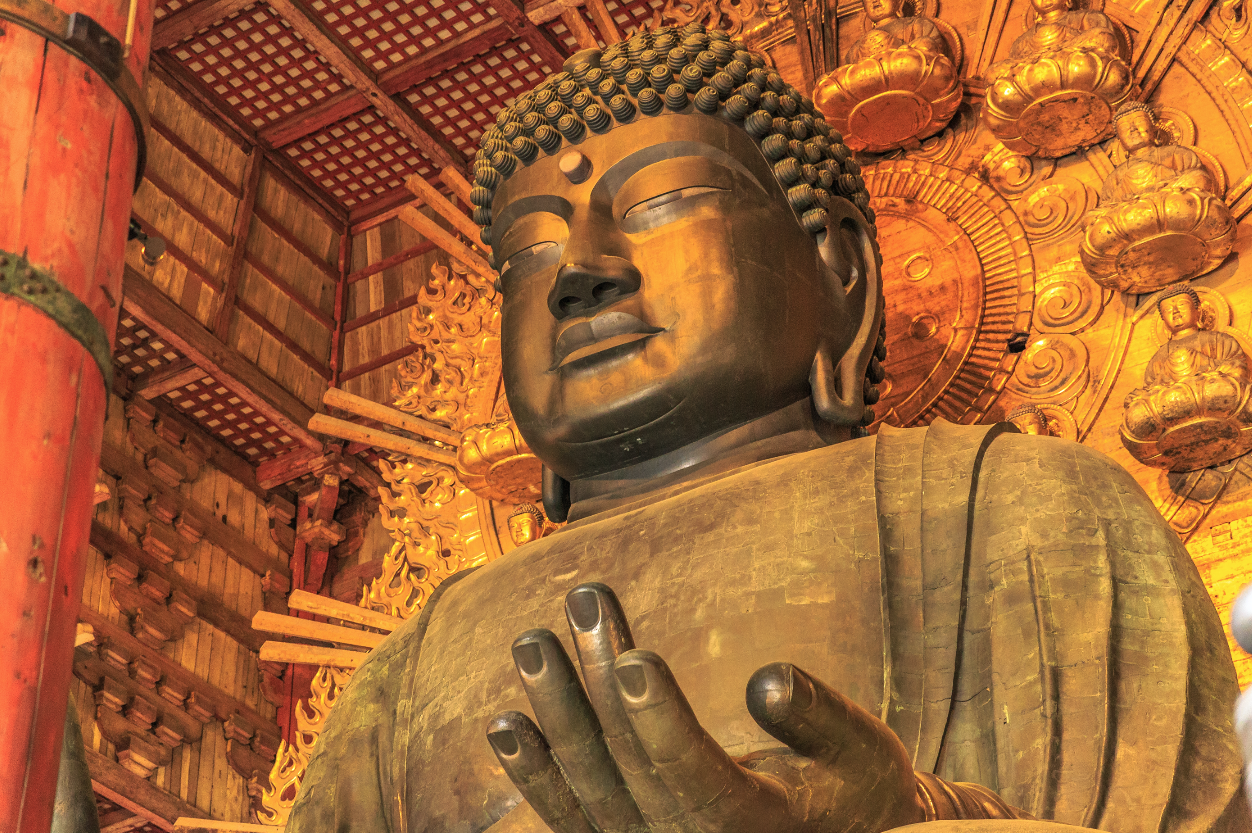
9AM: The Deer of Nara Park
The Tōdai-ji grounds cover most of the northern part of Nara Park, which, as luck would have it, is our next destination. Originally established in the late 19th century, the park is a spacious green area full of many places where you can enjoy and even feed nature. Today, the park has become home to hundreds of deer that are free to roam around the place. Their population is estimated to be anywhere between 1,200 and 1,500, and most of them expect you to feed them with deer crackers ( shika senbei ) that you can buy from local vendors. Fair warning, though: if you don’t plan on feeding them, it’s best to stay away from the deer because, cute as they are, they’ve been known to bite when angered.
10:30AM: Manyo Botanical Garden
Located just a few minutes from Tōdai-ji lies a quiet refuge from the hungry deer of Nara Park. It’s called Manyo Botanical Garden and it’s possibly the most poetic place in all of Japan. Apparently, the garden contains over 300 plants mentioned in Man’yoshu , a compendium of Japanese poetry compiled in the mid-eighth century.
Adults ¥500, children ¥250
11:45AM: Kasuga Taisha and the Kasugayama Primeval Forest
After visiting one of Nara’s most important Buddhist temples (Tōdai-ji), it’s only fair that you should pay your respects at the city’s most important Shinto shrine. As luck would have it, the Manyo garden is located right within its precinct. Kasuga Taisha was established in 768 by the Fujiwara clan and is known today for its many stone and bronze lanterns, all of which are lit during festivals held in early February and mid-August.
Fun fact: The deer of Nara Park are thought to be sacred messengers of the gods residing within Kasuga shrine. But to feel the presence of the Kasuga gods without the risk of getting bitten, look no further than the back of the shrine and the Kasugayama Primeval Forest. The old-growth forest, left largely undisturbed by human activity, spans about 250 hectares where you can walk and enjoy the splendor of nature.
Free entrance (except the museum and the shrine’s inner area), www.kasugataisha.or.jp
1PM: Shopping and Lunch at Higashimuki
From Kasuga shrine, we take a 20-minute walk westwards to Higashimuki Shotengai, a roofed shopping district. Higashimuki is Nara’s busiest shopping area and for good reason. Most of the shops here, ranging from clothing retailers to restaurants, cafés, toy stores and so on, are family-owned establishments with years of history behind them. It’s the perfect place to buy a few souvenirs and finally get some food. You will find all sorts of cuisine at very affordable prices at Higashimuki, from Western-style dining to traditional Japanese dishes like mochi rice cakes or narazuke , traditional Nara vegetables pickled in yeast left over from the production of sake. Also worth recommending are Nara’s manju – delicious steamed buns filled with sweet red bean paste, and handmade somen noodles, which used to be a popular court food.
3:30PM: Horyu-ji
Walk over to Nara Station and catch the Yamatoji Line train going towards Oji or Osaka, getting off at Horyuji Station. After a 20-minute walk, you will arrive at Horyu-ji (literally “Temple of the Flourishing Law”). A veritable time machine, it preserves Japanese culture and architecture from over 1,300 years ago. Today, it contains some of the most important Buddhist treasures and structures in all of Japan, most notably its iconic Five-Story Pagoda, the oldest such structure in the whole country, dating back to the year 607. Horyu-ji is a quiet place but it breathes history and religious significance, and a walk among the temple complex feels like literally stepping into the past.
Adults ¥1,500, children ¥750, www.horyuji.or.jp
5PM: Naramachi
After a train trip back to Kintetsu-Nara Station, we take another short walk to Naramachi, Nara’s old merchant district. Here, enjoy expertly preserved historic buildings now acting as restaurants, shops, and museums. After a long day of temple and shrine hopping, it’s a good place to take a leisurely walk and let oneself get lost among the historic streets.
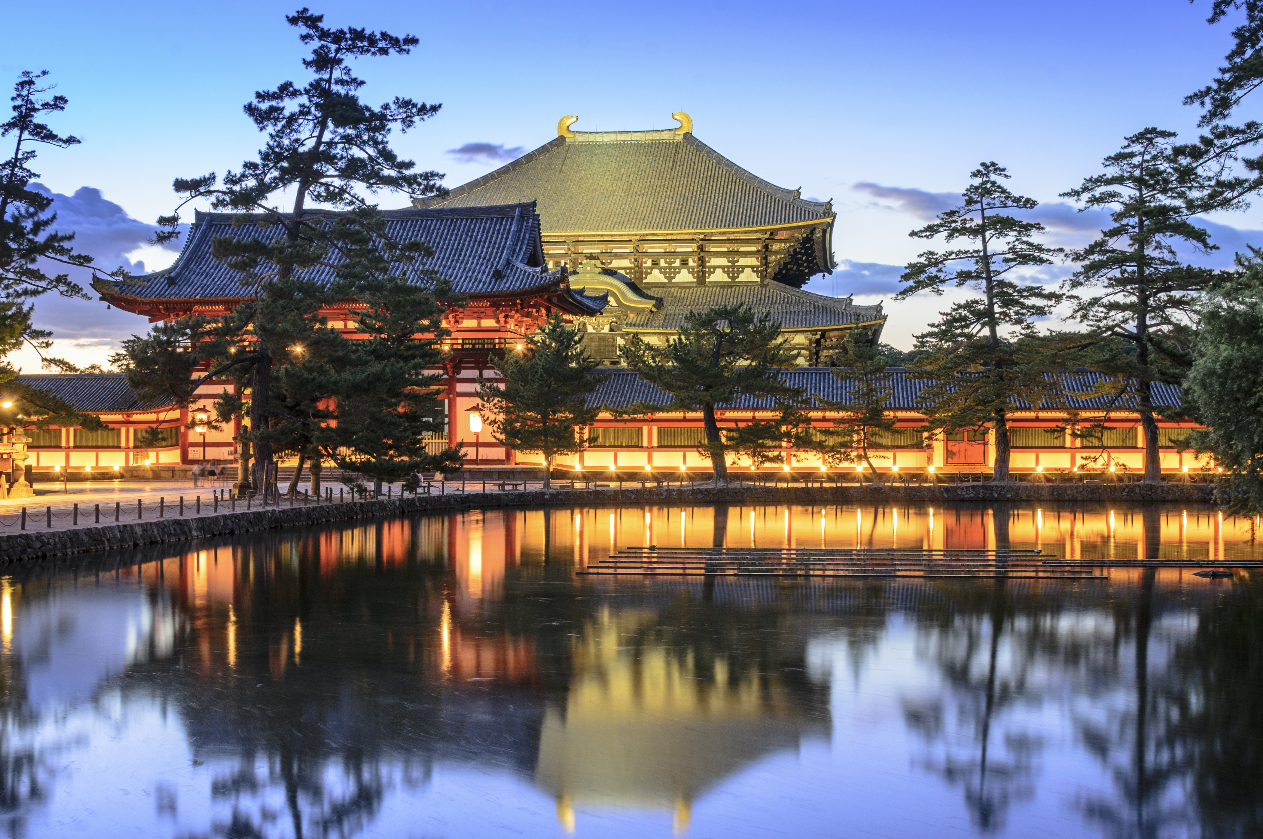
7PM: Dinner and a Little Something
Nara is proud of its grilled eel, and for good reason, so we recommend finishing up your day with some unagi. But whatever you end up getting for dinner, be sure to order a glass of sake with it. Nara is known as the birthplace of modern sake and boasts many breweries with long histories. Almost all sake produced in the region is made from local underground water sources and rice and yeast produced in local Nara highlands. Some restaurants and breweries even offer sake tastings for as low as ¥500. Keep an eye out for them and end your Nara daytrip with a satisfying sway in your step.
Related Posts

An Adventurer's Guide to Kagoshima

The Heart of Aso, Restored: Inside the Rebuilding of Aso Shrine

Discover Yame, Kyushu's Tea Capital

teamLab Saga: Immersive Art in a Lush, Ancient Forest

Super Delivery International: Bringing Japan to Your Door

Stay in Style at DoubleTree by Hilton Kyoto Station

A Culinary Wonderland in Hyogo Prefecture

Bringing the Spirit of Fukuoka to Tokyo
Tokyo, Kyoto and Shikoku Self-drive - Self-drive Tour of Japan - Japanspecialist
Tokyo, kyoto and shikoku self-drive.
Matsuyama Castle, Shikoku
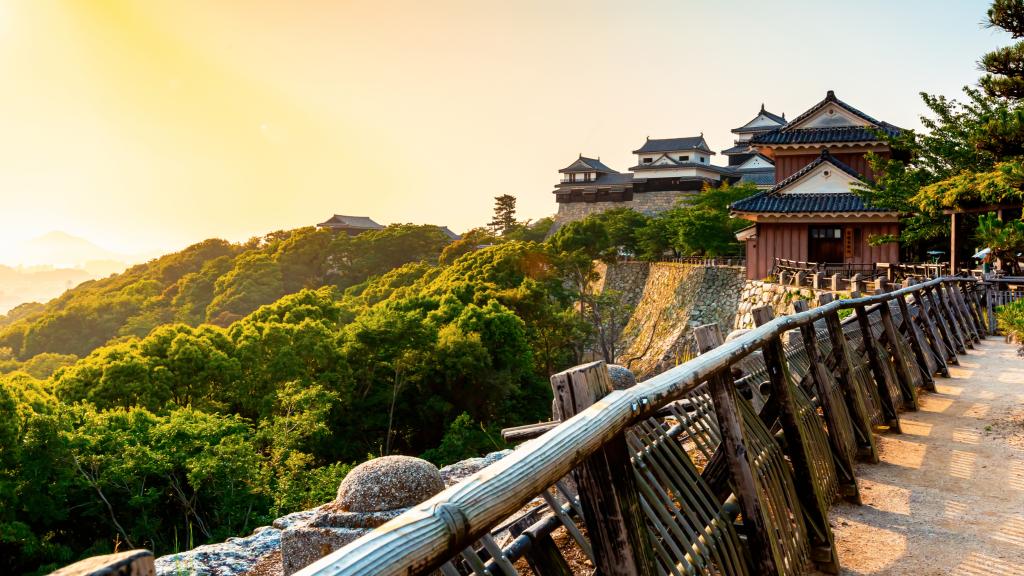
Ginza, Tokyo
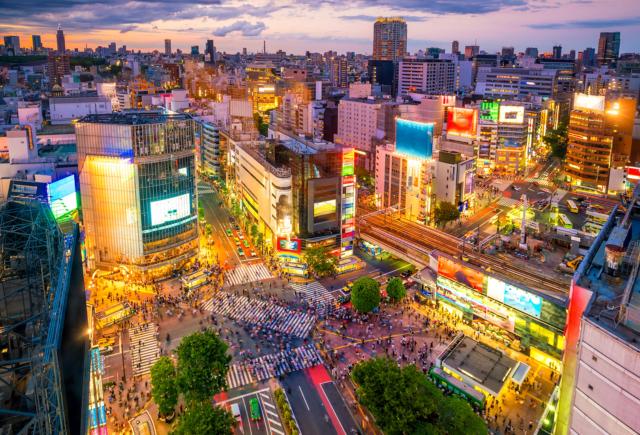
Tomonoura POrt
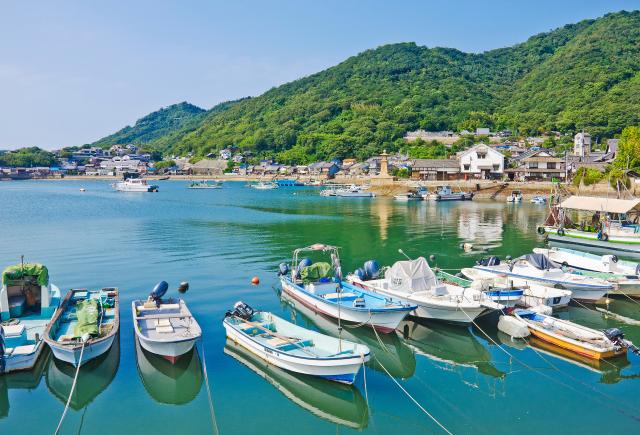
Shimanami Kaido Cycling Route
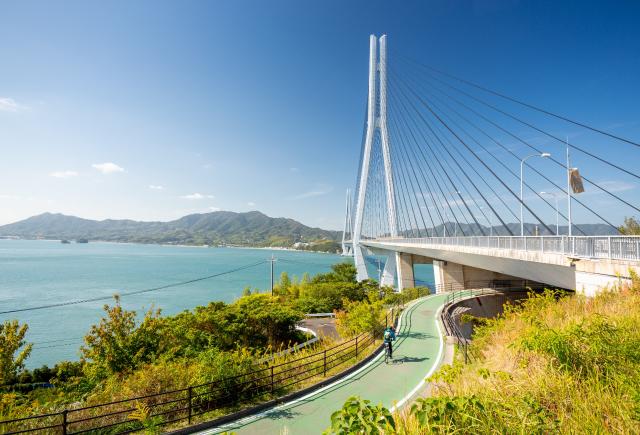
Dogo Onsen, Matsuyama
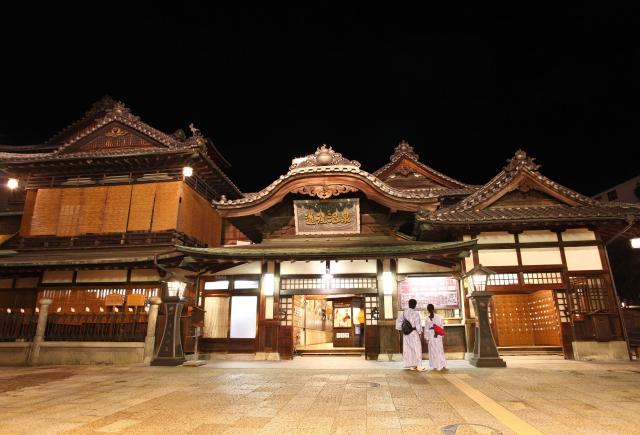
Kazurabashi Bridge, Iya Valley
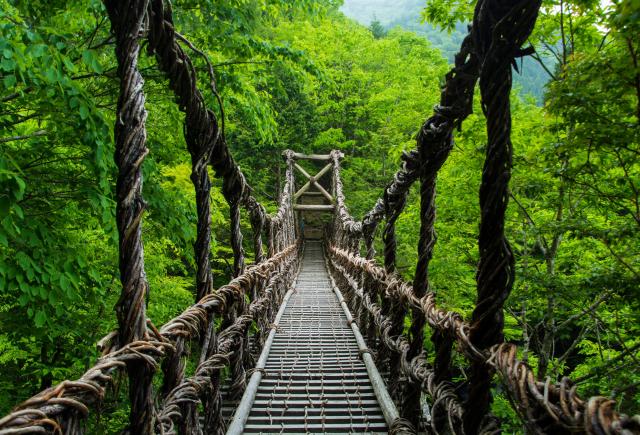
Ritsurin Garden, Takamatsu
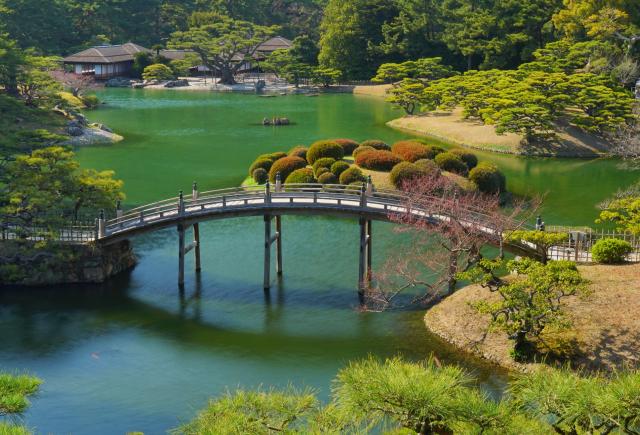
Kurashaki Canal District
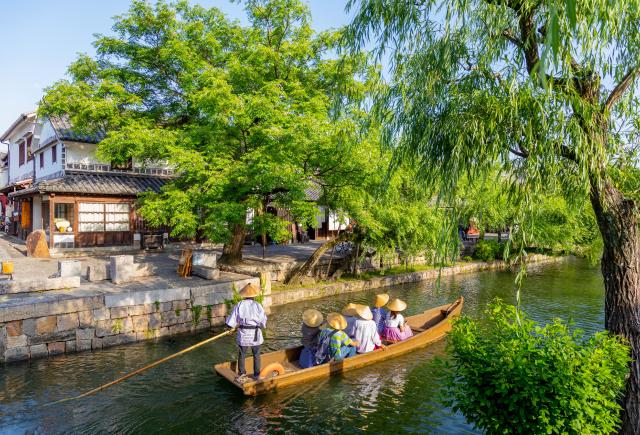
Yasaka Shrine, Kyoto
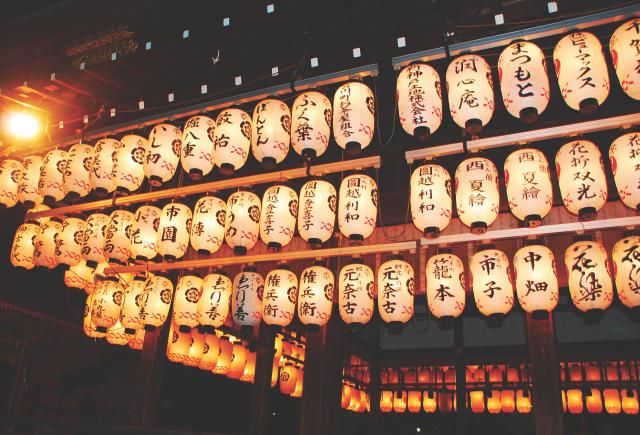
Tea Ceremony in Kyoto
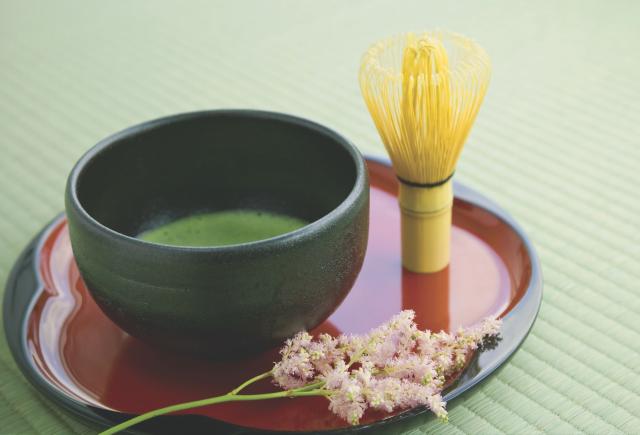
Geisha in the Gion District of Kyoto
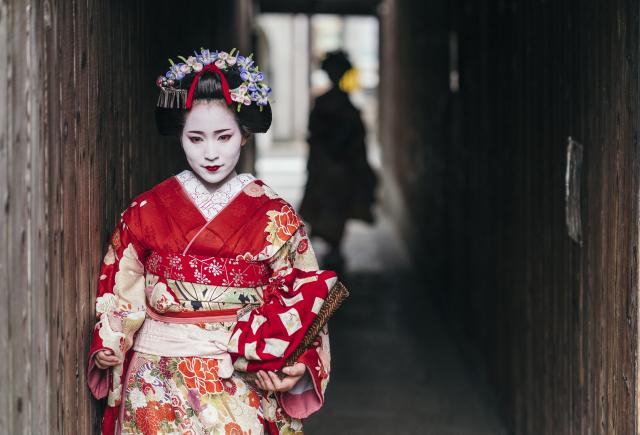
Experience Shikoku's spectacular nature and sacred sites in this self-drive tour.
Suggested itinerary
The tour departs from Europe to Tokyo on an overnight flight.
You're arriving in Tokyo and continue by airport bus transfer to Tokyo city center.
The city combines Japan's deep traditions and strong culture with innovative design, niche stores, and Michelin-starred restaurants. Tokyo has something for everyone.
Your hotel is located in one of Tokyo's vibrant hubs with easy access to the metro and train so that you can reach all of Tokyo's sights and attractions easily. You will also find countless bars, restaurants, shopping malls, niche shops, and cafes in the immediate area.
To get an impression of the different areas of this big city, hop on the Yamanote Line, Tokyo's city loop train. If you're in Shinjuku, visit the Tokyo Metropolitan Government Building observation deck for a breathtaking view of the city, entry is free.
On the northwest side of the station is a small network of alleyways called Omoide Yokocho. Here you'll find tiny eateries serving culinary staples like yakitori, ramen, and soba noodles.
Start your first full day in Tokyo by grabbing a metro card and heading to the Shibuya area to see the famous crossing. While you're here, don't miss panoramic views of Tokyo (and Mt. Fuji) from the top Shibuya Sky.
Walk over to Yoyogi park, where you can enjoy your lunch among the locals. After lunch, take a stroll through the lush grounds of the adjacent Meiji-Jingu Shrine.
In the afternoon, visit the Harajuku area on the other side of the station to explore the candy-coloured world of this teenager haven.
After breakfast, head to Asakusa. Here you will find the Nakamise shopping street, which leads you through a promenade with small shops to the famous and oldest Sensoji Buddhist temple in Tokyo.
Asakusa is full of small restaurants that offer inexpensive teishoku (set menus), making it an excellent place for lunch.
In the afternoon, visit the nearby Tokyo Skytree to enjoy the full view of Tokyo from the 450-metre high observation deck. After, take a boat ride down Sumida River, where you can admire the city from the waterfront.
For dinner, we recommend you take a guided tour around inner-Tokyo, visiting some tiny izakaya (Japanese pubs), to enjoy excellent cuisine and sake.
Tokyo - Tomonoura
Today you start your car adventure. You'll transfer to Haneda Airport in Tokyo in the morning and fly to Hiroshima.
At Hiroshima Airport, you pick up your car and visit the first stop Tomonoura, a scenic port town by the Inland Sea. Take a walk in the cosy old streets and look out over the expansive sea. The city was featured in the blockbuster film 'Wolverine' and was also the inspiration for the anime 'Ponyo.' You'll spend the night at a ryokan with hot springs. Your traditional Japanese dinner and breakfast are included in your stay.
Tomonoura - Shimanami Kaido - Matsuyama
Today you'll drive to Shikoku along the idyllic Shimanami Kaido route, a road that connects the main islands of Honshu and Shikoku via bridges between six smaller islands. The road is also called the Nishiseto Expressway. Note that you will have to pay a toll fee, which is standard for highways and bridges in Japan.
Your final destination is Matsuyama, and the whole trip is 130 km long and takes around two and a half hours in one stretch. However, there are many beautiful sights along the way, so we recommend making time for a few stops. You have two nights in a central, western hotel in Matsuyama, the largest city on Shikoku.
Late afternoon, visit the ancient spa Dogo Onsen, which was the inspiration behind Hayao Miyazaki's animated film "Spirited Away".
Matsuyama – Day Trip to Ozu and Uchiko
Matsuyama is a city that has managed to retain plenty of old-world charm. Trams run through the city, and the atmosphere is more relaxed than in other major Japanese cities. Today you can visit Matsuyama Castle, one of Japan's most well-preserved castles, located on a steep hill in the city centre. From the top of the castle, you have a beautiful view of the city and the Inland Sea.
If you feel like heading out of the city, visit Ozu and Uchiko. Uchiko is a picturesque town with traditional houses, and Ozu has a lovely little castle, which is especially beautiful when the cherry trees are in bloom. You can visit both cities on a day trip from Matsuyama.
From Matsuyama, you'll head deeper into the heart of Shikoku. After a 130 kilometre long journey, you'll reach the idyllic Iya valley.
Historically, the valley was isolated; as a result, the locals have managed to maintain their traditional culture.
The most famous landmark is the Kazurabashi Bridge, made of wood and rope, which runs 45 metres long across the Iya River at a staggering height of 14 metres.
The Oboke Gorge is another key attraction, best experienced by boat. The crystal clear water and steep cliffs are spectacular. You'll spend the night at a ryokan with hot springs and gourmet dishes, where you can feel the ambience of this stunning destination.
Iya Valley - Takamatsu
After a delicious breakfast, you'll drive approximately 80 kilometres to the city of Takamatsu, located by the Inland Sea. While in the area, you should also taste the local speciality "sanuki udon", a type of wheat noodles.
We recommend a drive to Kotohira Shrine, better known as Kompirasan. The shrine itself is located on a mountain and can only be reached by going up 1368 stone steps. It's an important destination on the Shikoku pilgrimage and offers terrific views.
Start today with a visit to Ritsurin Garden - one of Japan's most beautiful gardens, built by local samurai chiefs back in the late 17th century. Not far from the city is the Yashima Temple, which sits on the mountain summit. It offers excellent views of Takamatsu and the Seto Inland Sea.
Back in the city centre, a visit the shopping arcade, which claims to be the longest covered shopping arcade in Japan with a combined length of nearly 2.7 kilometres and runs between Takamatsu castle and Ritsurin Koen.
Today you could take the car on the ferry to the exciting island of Naoshima, famous for its modern museums, architecture and art exhibitions. The most famous is the Benesse Art Site, designed by iconic Japanese architect Tadao Ando. It's a modern art museum and a hotel showcasing groundbreaking pieces from Japan and abroad.
A short walk from Benesse is Yayoi Kusama's iconic dotted pumpkin. Many of the smaller museums are also very interesting for contemporary art lovers. Some museums are closed Mondays.
Takamatsu - Kurashiki
To reach Honshu, you cross Seto Ohashi bridge, one of the world's longest bridges to reach Kurashiki, once an important trading city. Here are many beautiful warehouses, which today have been converted into museums, shops and cafes.
After you drop off your car in central Kurashiki, stroll in the cosy streets by the canal. We also recommend visiting the Ohara Museum, which is probably the city's most impressive museum and the oldest museum of Western art in all of Japan.
You'll spend the night in a traditional ryokan in the heart of the canal area.
Kurashiki - Kyoto
Today you board the high-speed train Shinkansen to Kyoto. Kyoto was the capital of Japan from 794 to 1868, and the entire city is UNESCO-protected due to its enormously well-preserved culture. The city has more than 1600 temples and 400 Shinto shrines and the centre of cultural experiences.
Start your visit in the Kawaramachi area, the main street running from the north to south – a little west of the Kamo River. In the evening, try a teppenyaki dinner which includes the very tender and tasteful wagyu meat (Kobe beef).
In the morning, you could go to the Golden Paillon (Kinkaku-ji) and Ryoan-ji before spending the afternoon exploring Nijo-jo castle. The garden surrounding the castle is an excellent example of Japanese garden architecture.
In the evening, visit the Gion district, where you might be lucky enough to spot a geisha as you wander the small streets populated by cosy restaurants.
On your last full day, we suggest you take the train from Kyoto station to Japan's first-ever capital Nara (45 minutes) to see the world's largest bronze Buddha in the giant Todai-ji temple, the outskirts of the temple and the nearby park is populated by friendly local deer.
In the afternoon, take the train back to Kyoto for your last dinner in Japan. Try one of the restaurants in the most atmospheric dining areas, Pontocho, where the restaurants offer a wide range of dining options from inexpensive yakitori to traditional and modern Kyoto cuisine.
Return flight
It's time to say "Sayonara" (goodbye) to Japan. You will be picked up at the hotel in Kyoto and driven to Osaka airport (approximately one hour), where you will have your return flight to Europe. We hope the experience has been enriching, and we hope you come back soon.
Accommodation
The following types of accommodation are recommended for this tour.
Japan has quite a number of different types of accommodation, from Western hotels to traditional Japanese inns.
Please note, all our tours are tailor-made so we can arrange whatever accommodation required to meet your specific needs.
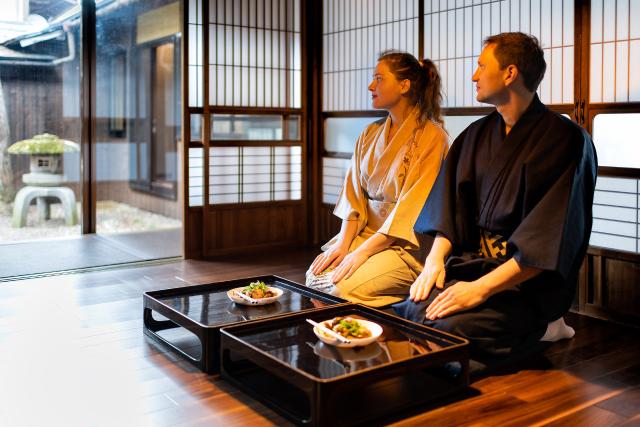
A ryokan is a traditional Japanese inn that offers a unique cultural experience. Guests sleep on tatami mats, enjoy traditional meals and may have hot springs & gardens.
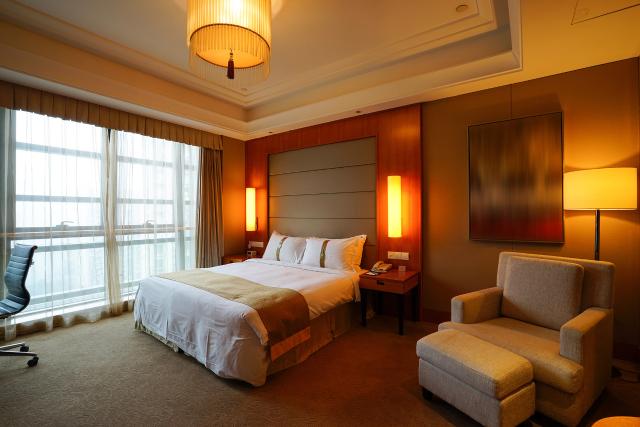
Western-style hotels in Japan offer comfort and convenience with amenities like room service and fitness centers. Many are located in major cities and near popular destinations.
What is included
- International return flight tickets
- Domestic flight tickets
- Checked luggage
- Airport transfers
- 11 nights in western style accommodations
- 3 nights in Japanese-style Ryokan with onsen
- Breakfast and dinner (selected locations)
- Transport tickets between destinations
- 8-day car rental incl. free kilometer, insurance, and English GPS
What is not included
- Local transport (buses, metro, taxis)
- Local city tax which needs to be paid on the spot
- Optional excursions and sightseeing tours
- Travel insurance
Please note, this is just an example of a tailor-made tour. The services described as included and not included will differ based on your requirements. At Japanspecialist we are happy to accommodate all your requests when creating your personalised tour.
Arrange your consultation with an expert
Our experienced travel consultants are ready to customise this itinerary and arrange your dream holiday today. You can either schedule an online meeting with one of our consultants or fill out an enquiry form and we will get back to you with a personalised tailor-made offer.
The price of this service starts at EUR 50,- and is fully reimbursable if you book your tour with us.
What is covered during the consultation?

Experience Japan your way with our experts
We are part of JTB, the largest travel company in Japan and one of the biggest in the world, with over 100 years of experience. We are passionate about this wonderful country, having spent decades designing adventurous itineraries for our clients.
Your tailor-made holiday in four simple steps
You may also be interested in....
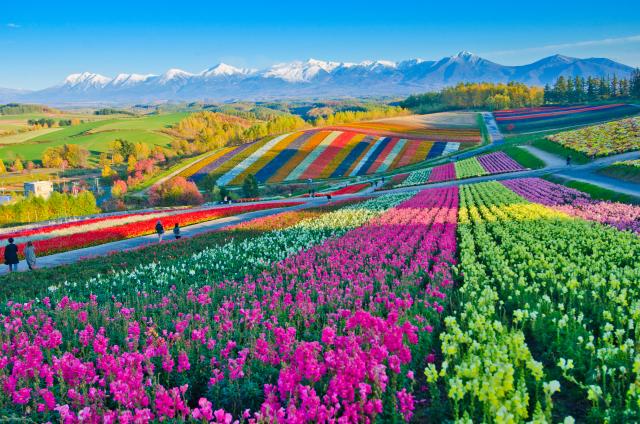
Discover the untouched nature of Japan's northernmost main island.
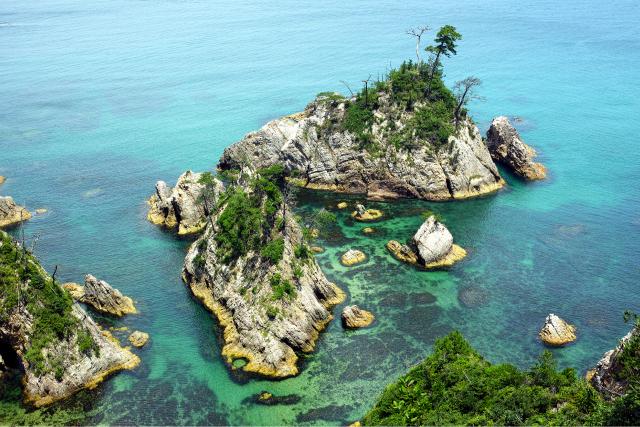
Explore the beautiful coastline of southwestern Japan in 15 days.
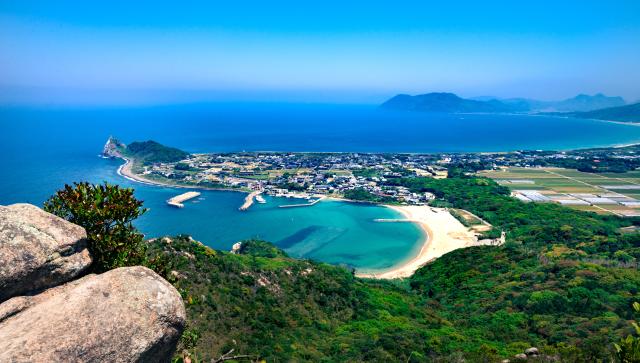
Experience a lesser-known Japan and the beautiful southern island of Kyushu.
Nomadic Matt's Travel Site
Travel Better, Cheaper, Longer
The Perfect 7-Day Japan Itinerary for First-Time Visitors

Japan captured my heart from the moment I firs visited. The delicious food, the rich culture, breathtaking landscapes, vibrant history, and the very friendly and polite people – it all blew my mind.
But Japan often feels impenetrable, especially to first-time visitors. While I think Japan deserves a minimum of 10 days, I get that some people might only have a week, so I wanted to write this, my ideal seven-day itinerary for Japan for a first-time visitor.
With only a week, there’s not much you can see unless you really rush it. And I don’t think you should do that.
So this itinerary only focuses on Tokyo and Kyoto (the most popular destinations) as well as some day trips from each. If you wanted to rush things a little, you could add in Osaka (more on that at the end).
(Note: If you purchased a Japan Rail Pass , activate it on arrival. That way, you can take advantage of the free JR trains throughout the city.)
Table of Contents
Japan Itinerary Day 1: Tokyo
Japan itinerary day 2: tokyo, japan itinerary day 3: tokyo, japan itinerary day 4: kyoto, japan itinerary day 5: kyoto, japan itinerary day 6: nara, japan itinerary day 7: tokyo, an alternative itinerary.

Tsukiji and Toyosu Fish Markets Cure your jet lag with some food! In 2018, Tokyo’s main fish market moved to Toyosu. It is now twice the size of Tsukiji (the old one), making it the largest such market in the world. Here you can eat fresh sushi for breakfast, just a few feet from where it was hauled in from the sea, while marveling at the chaotic atmosphere.
You can still head to the old market in Tsukiji to eat, shop, and wander as well. I like it a lot, because there are more food options! Food and drink tours of the Tsukiji Outer Market are available for around 15,000 JPY.
Toyosu Fish Market is open Monday-Saturday 5am-5pm, though most shops don’t open until 7am. Admission is free, but you have to pick up a visitor’s pass when you enter. Tsukiji Fish Market’s hours vary by shop (usually 5am-2pm). Admission is free.
teamLab Planets This digital art installation is a multi-sensory and immersive experience in which you become part of the artwork, walking barefoot through the four exhibition spaces and gardens as you interact with the installations’ elements in unique ways. It’s really fun! TeamLab is generally sells out in advance, so I recommend getting your tickets online ahead of time .
Take a walking tour Walking tours are a great way to get the lay of the land while connecting with a local guide. I always go on one or two when I arrive somewhere. Tokyo Localized offers many free tours, including a classic overview and ones of both the famed Harajuku and Shinjuku neighborhoods. Its Imperial Palace tour would be the most convenient one after teamLab.
The Imperial Palace Formerly Edo Castle, the Imperial Palace was built in the 15th century, and some of the walls and moats from that time are still in use to this day. When the emperor moved from Kyoto to Tokyo in 1869, he took Edo for his new palace and renamed it. While you can’t go inside, it is surrounded by beautiful grounds, a moat, and a park worth wandering through. You can also see the changing-of-the-guard ceremony (though it’s relatively low-key and unassuming). Admission to the grounds is free.
Shinjuku Gyoen National Garden This park is over 144 acres and home to some 20,000 trees. Most of the original park was destroyed in World War II but was rebuilt and reopened in 1949. During spring, it is one of the best places to see cherry blossoms. My favorite area is the landscape garden, which has several ponds with bridges and islands. It’s a peaceful oasis away from the urban hustle and bustle.
Depending on how you feel relative to your jetlag, you could fit a few more activities before you end your day. Check out this post for suggestions .

- Senso-ji – This is Tokyo’s most popular and famous temple. Beautifully painted, it sits in a scenic spot near a pagoda and the lovely Kaminari Gate. There’s a huge statue of Kannon, the goddess of mercy, inside the main hall. It’s very busy during the day, so maybe check out the grounds in the evening.
- Asakusa Shrine – This nearby Shinto shrine is much more peaceful, with fewer visitors, but with people praying, meditating, or performing traditional rituals. It was built during the Edo period (1603–1868) and survived the air raids of World War II.
Afterward, head to Ueno Park . Spanning over 133 acres, Ueno Park was established in 1873 on land formerly owned by a 17th-century Buddhist temple. It gets super busy in cherry blossom season, as there are over a thousand trees here. Throughout, you’ll find various stalls and vendors selling snacks, drinks, and souvenirs. On weekends, there are usually cultural events or festivals showcasing traditional arts, music, and dance. Four of Tokyo’s main museums are here:
- Tokyo National Museum – Established in 1872 on the north end, this massive building is the oldest and largest art museum in Japan. It houses one of the world’s largest collections of art and artifacts from Asia, particularly Japan.
- Tokyo Metropolitan Art Museum – This museum showcases rotating exhibitions of contemporary and traditional Japanese art.
- National Museum of Nature and Science – This museum features a wide range of permanent and temporary exhibitions covering natural science and history.
- Tosho-gu Shrine – This beautiful 17th-century Shinto shrine has carved gold doors and other ornate carvings. It’s worth seeing up close!
Afterward, walk down to Akihabara to explore the video game parlors, arcades, and anime shops. This very buzzy area is ground zero for all things electronic, and it’s fun to play many of the games. This is where you’ll find the famous maid cafés, where servers dress up as maids and serve you food and drinks. These range from big touristy ones to holes-in-the-wall (the girls on the street are promoting the latter, which are a lot more culturally fun). They aren’t cheap, though, as you have to buy drink packages and pay a fee, but they’re kitschy and fun.
In the evening, visit Shinjuku and then drink in Golden Gai . In Shinjuku, you’ll find a plethora of cool bars, bright lights, and tiny hole-in-the-wall eateries. Be sure to wander down Memory Lane (aka Piss Alley) for tiny izakaya joints and bars. Afterward, head over to Golden Gai, a warren of narrow alleyways with a bit of a red-light-district feel, flanked by diminutive backstreet bars. It’s quite touristy but also a lot of fun. I’ve had some wild nights here!
With Arigato Tours , you’ll learn about the neighborhood while stopping to sample Japanese classics like sushi, yakitori, and ramen. The 23,900 JPY cost includes a drink and dishes at four stops.

Kamakura Here you can see a 13-meter (43-foot) bronze statue of Buddha that was built in 1252. It was initially constructed within Kotoku-in Temple, but that has since been washed away by several storms, so it now sits in the open air. Admission to enter the temple grounds is 300 JPY, while it’s 20 JPY to go inside the statue. The journey there — around an hour — is free with a Japan Rail Pass .
Tokyo Disneyland I’m a sucker for Disney. You’ll find many of the same classic rides from Disney World here, like Splash Mountain, Big Thunder Mountain, The Haunted Mansion, and everyone’s favorite teacup ride, The Mad Tea Party. But there are several unique attractions as well, like Pooh’s Hunny Hunt and Journey to the Center of the Earth.
Ticket prices vary depending on the day and time, but full-day admission begins at 7,900 JPY for adults and 4,400-6,200 JPY for children. It’s best to book in advance .
Mount Fuji Mount Fuji is located an hour outside of Tokyo. An active stratovolcano (which last erupted in 1708) and covered in snow for almost half of the year, it stands an impressive 3,776 meters (12,389 feet) and provides one of the most iconic views in the country. One of the Three Holy Mountains of Japan, Mount Fuji is both a Special Place of Scenic Beauty and a UNESCO Cultural Site. In the summer, the mountain is open to hikers, who take 5-12 hours to reach the summit (traditionally, they depart at night to arrive at the top for the sunrise).
If you don’t want to hike, you can simply visit on a day trip. There are buses that can take you partway up, where you’ll be offered sweeping vistas of the surrounding area. Guided day tours from the city cost around 12,000 JPY.

Wander the Bamboo Forest For a relaxing break, head to Arashiyama and let the dense and towering stands of bamboo envelop you. Located near the famous Tenryu-ji temple, it’s one of the most beautiful places in the entire country. It’s not that big, but there are some hidden areas to explore. Just make sure to arrive early if you want to enjoy it without the crowds (it fills up fast after sunrise).
While there, I would also recommend visiting the Okochi Sanso Garden, which (along with the home) belonged to the famous Japanese actor Denjir? ?k?chi (1898–1962). It’s not free (it’s 1,000 JPY), but it’s really nice and has some wonderful views.
Visit the Golden Pavilion Originally built in the late 14th century as a retirement villa for the shogun (military governor), this iconic structure was later converted into a Zen Buddhist temple. The present-day edifice dates only to the 1950s, however, when a monk attempting to kill himself burned the historic original to the ground. The rebuilt temple is covered in brilliant gold leaf, symbolizing purity and enlightenment. Each of the three stories exhibits a different architectural style. Completing the scene are the serene reflecting pool and traditional Japanese gardens that contain lush foliage, manicured trees, and scenic walking paths.
1 Kinkakuji-cho, Kita-ku, Kyoto-shi, Kyoto, +81 075-461-0013, shokoku-ji.jp. Open daily 9am-5pm. Admission is 500 JPY.
Admire Ryoan-ji Temple This is my favorite temple in Kyoto. Originally established in 1450 as a residence for a high-ranking samurai, it was soon converted into a Zen temple and is now a UNESCO World Heritage Site, with a mausoleum that houses the remains of seven emperors. Its traditional rock and sand garden is considered one of the best in the country. There’s also a teahouse where you can experience the traditional Japanese tea ceremony ( chanoyu ) as you overlook the Kyoyochi reflecting pool.
There are other temples in the area to check out as well:
- Daitoku-ji Temple – This massive complex dating back to 1315 covers almost 60 acres. It contains several dozen temples and is a good place to see a variety of Zen gardens and architectural styles. It’s also deeply linked to the Japanese tea ceremony, as several of the country’s most noteworthy masters studied here.
- Toji Temple – This is home to Japan’s tallest pagoda (five stories high). Founded in 796, just after Kyoto became the capital, it was one of only three Buddhist temples allowed in the city.
Go on a sake brewery tour Kyoto has a sake (rice wine) brewing tradition going back 400 years and is known for some of the best in the world, due to using the area’s pure natural spring water in the brewing process. Arigato Tours offers an excellent three-hour tour of Fushimi (the brewing district) for 23,320 JPY, including stops at several breweries, a guided tour of the Gekkeikan Okura Sake Museum, and tastings.

See the Fushimi Inari Shrine This mountainside Shinto shrine, dating back to 711, is dedicated to Inari, the god of rice and prosperity. It’s known for its thousands of vibrant orange torii gates that form a network of trails leading up Mount Inari. You can hike the trails on your own while enjoying panoramic views of Kyoto below or join a guided hiking tour , on which you’ll get off the paved paths and into hidden bamboo groves. Get here as early as possible to avoid the crowds.
68 Fukakusa Yabunouchicho, +81756417331, inari.jp. Open 24/7. Admission is free.
Walk around Higashiyama Spend an afternoon walking along the narrow streets of one of the oldest and best preserved districts on your own or on a walking tour . The traditional machiya buildings (traditional wooden townhouses) are filled with small shops selling local specialties and handicrafts, as well as restaurants and teahouses. It’s a popular area in which to participate in a tea ceremony . Another nice place to stroll in this neighborhood is the Philosopher’s Path, which follows a cherry-tree-lined canal that’s beautiful and meditative even when the blossoms aren’t in season.
Visit Kiyomizu-dera One of a number of UNESCO sites in ancient Kyoto, Kiyomizu-dera (meaning “pure water temple”) is located in the foothills of Mount Otowa in the eastern part of the city. It’s one of the most famous temples in all of Japan. It was established in 778, but most of the existing buildings date to the 17th century. There’s not a single nail used in the construction, which becomes all the more impressive once you see how large the temple is, which is best known for its wooden terrace that juts out over the hillside. The temple’s name comes from the nearby waterfall whose waters (from which you can still drink today) are said to have wish-granting and healing powers.
1 Chome-294 Kiyomizu, +81 75-551-1234, kiyomizudera.or.jp. Open daily 6am-6pm. Admission is 400 JPY.
Explore Shorin-ji Temple This small temple dates back to the 16th century. What makes it worth visiting is its meditation classes. You’ll get to tour the temple and then be instructed in zazen , the Japanese style of meditation. It’s a very unique experience and something that I think will add a lot of depth and nuance to your visit (especially if you’ve seen a lot of temples). Just make sure to dress comfortably.
15 Chome-795 Honmachi, +81 75-561-4311, shourin-ji.org. Open daily 10am-4pm. Admission is 800 JPY.
Wander the Nishiki Market Nishiki Ichiba is now one of the biggest indoor markets in town. Known as “Kyoto’s Kitchen” and spanning over five blocks, it is full of vendors selling traditional dishes from the region, classic Kyoto souvenirs, and really just about anything else. There are over a hundred stalls here, many of which have been in the same family for generations. Opening hours depend on the shop but are typically from 9am to 6pm.
To dive deeper into Japanese food culture, you can take a food tour of the market . It’s the best way to learn about all the food you’ll see, as well as the market’s history.
Explore Gion Gion, the historic geisha district, is renowned as being one of the most iconic and atmospheric areas of town. It’s known for its traditional wooden machiya houses, narrow alleyways, cobblestone streets, and preservation of geisha (known locally as geiko) culture. Lining the main street are ochayas (teahouses where geishas entertain), small shops, and many restaurants, ranging from upscale kaiseki restaurants serving traditional Kyoto cuisine to casual eateries.
To really learn more about this amazing party of town and its past, take a walking tour of Gion . You’ll learn a ton and get a lot of context. They cost around 1,800 JPY.
At night, go to the Pontocho Row , a narrow street lined with restaurants, hole-in-the-wall bars, and jazz clubs. It’s one of the more lively areas in Kyoto.

Nara was the capital of Japan in the eighth century, so there are lots of buildings and temples here that are upwards of a thousand years old (which is rare in Japan, due to the prevalence of fires and earthquakes, as well as World War II). Some things to do:
- Frolic with deer – The real draw in Nara are the deer. Since the 17th century, those in and around the city have been considered sacred. You can buy crackers to feed them or just watch them stroll around carefree.
- See the Buddha – Don’t miss a visit to Todai-ji, the world’s largest wooden building, home to a 16-meter (52-foot) Buddha statue. It was built in 738 and is now a UNESCO World Heritage Site.
- Take a walking tour – This guided half-day walking tour for 11,500 JPY includes all of Nara’s highlights as well as a traditional lunch.

Ryogoku Kokugikan, Japan’s most famous sumo wrestling arena, hosts tournaments three times each year, in January, May, and September. Tickets sell out quickly, so book online in advance. Prices vary but start around 3,200 JPY for arena seats. You can book a ticket online here (you’ll be accompanied by a guide too, so you can learn more about the tradition as it unfolds before your eyes).
To learn more about the sport in in the off-season, book a tour of a sumo stable .

So, if you want to add another city to this itinerary you can follow this breakdown:
- Days 1 & 2: Tokyo
- Days 3 & 4: Kyoto
- Day 5: Nara
- Days 6 & 7: Osaka
Tokyo, Kyoto, and Nara are all covered above. As for Osaka, some of my favorite things to see and do:
Take a food tour Known as “the Kitchen of Japan,” Osaka boasts a diverse culinary scene. Mouthwatering sushi and sashimi, Kobe beef and Japanese BBQ, and flavorful ramen can all be found here in abundance. Plus, there are local specialties like okonomiyaki (a savory pancake with egg and vegetables) and kushikatsu (kebab skewers). You can take a food tour for around 13,000 JPY, a ramen and gyoza cooking class for 9,500 JPY, or just wander and eat.
Osaka Castle One of the most famous landmarks in the country, the castle was originally built in the late 16th century by Toyotomi Hideyoshi and played a pivotal role in the unification of Japan during the Sengoku period (1467-1615). Over the centuries, it has been destroyed and rebuilt multiple times due to wars, fires, and natural disasters. The current version dates to 1931. The castle is situated amid sprawling grounds and surrounded by a moat. It’s also home to a small but insightful museum and an observation deck that offers some picturesque urban views.
Dotonbori This is arguably Osaka’s most iconic district, known for its vibrant nightlife (bars, clubs, theaters, and music venues), colorful signage, and delicious food. It’s best seen at night due to the plethora of huge neon lights and signs lining both the canal and streets, which have become symbols of Osaka’s nightlife. A guided walking tour that includes Dotonbori as well adjacent neighborhoods is 6,500 JPY.
Shitennoji Temple This temple is one of the oldest Buddhist temples in Japan, founded in 593. The architecture is a blend of traditional Japanese and East Asian styles, featuring impressive pagodas, gates, and shrines set amid serene gardens. Stroll through the tranquil grounds, admire the beautiful architecture, and learn about the temple’s historical and cultural significance at the museum. The temple is 300 JPY to enter, the garden is 300 JPY, and the museum is 500 JPY.
Japan is one of my favorite countries. While it’s relatively small, it offers an amazing array of things to see and do (as well as some of the best food in the world). With seven days, you can easily see a good number of the main highlights and get a taste for the incredible history and culture. It will be a busy week, but this itinerary ensures you’ll still have some time to slow down, relax, and take in the local pace of life.
Just make sure you get a Japan Rail Pass before you go. While it’s not as cheap as it used to be, it will likely save you time and money!
Book Your Trip to Japan: Logistical Tips and Tricks
Book Your Flight Find a cheap flight by using Skyscanner . They are my two favorite search engines, because they search websites and airlines around the globe, so you always know no stone is being left unturned!
Book Your Accommodation You can book your hostel with Hostelworld as they have the most comprehensive inventory so they are best for booking a hostel. If you want to stay in a hotel or guesthouse in Japan, use Booking.com as it consistently returns the cheapest rates for guesthouses and hotels.
Don’t Forget Travel Insurance Travel insurance will protect you against illness, injury, theft, and cancelations. It’s comprehensive protection in case anything goes wrong. I never go on a trip without it, as I’ve had to use it many times in the past. My favorite companies that offer the best service and value are:
- Safety Wing (best for everyone)
- Insure My Trip (for those over 70)
- Medjet (for additional evacuation coverage)
Looking for the Best Companies to Save Money With? Check out my resource page for the best companies to use when you travel! I list all the ones I use to save money when I travel — and I think they will help you too!
Be sure to check out the Japan Rail Pass if you’ll be traveling around the country. It comes in 7-, 14-, and 21-day passes and can save you a ton of money!
Looking for More Travel Tips for Japan? Check out my in-depth Japan travel guide for more ways to save money, information on costs, tips on what to see and do, suggested itineraries and reading and packing lists, and much, much more!
Got a comment on this article? Join the conversation on Facebook , Instagram , or Twitter and share your thoughts!
Disclosure: Please note that some of the links above may be affiliate links, and at no additional cost to you, I earn a commission if you make a purchase. I recommend only products and companies I use and the income goes to keeping the site community supported and ad free.
Related Posts

Get my best stuff sent straight to you!
Pin it on pinterest.
National Geographic content straight to your inbox—sign up for our popular newsletters here
Done the Camino? Try tackling Japan’s 88-temple Shikoku Trail
This challenging pilgrimage route takes in Buddhist temples, mist-shrouded mountains, steamy baths, and ages-old cultural traditions.

Bow respectfully at the temple gate. Cleanse hands and mouth at the fountain. Sound the bell. Leave a name slip with your wish in the main hall, light a candle and three sticks of incense, toss coins in the offering box, and chant sutras. Get your pilgrimage book stamped. Exit the gate, and bow again. Follow the red markers to the next temple.
Repeat 87 times.
Or not. On the Shikoku Henro , one of the longest pilgrim routes in Japan , there are many ancient customs but few hard-and-fast rules. You don’t even have to walk it: Many Japanese now take cars or bus tours; others ride trains or bikes. You can tackle the trail counterclockwise instead of clockwise. Or break the circuit into segments. You can wear the traditional white vest or look like an ad for REI—as most of us did on the small-group tour I joined last September to hopscotch a section of seven temples.
“Buddhism is more a way of life than a religion that tells you what you can or can’t do,” said David Moreton, a Shikoku-based researcher specializing in the Henro. “However, showing respect is important.”
Travelers’ interest in long-distance walks is at an all-time high. The famed Camino de Santiago in Spain saw a record 446,000 pilgrims last year. The Henro sees a fraction of that. Nevertheless, the numbers of walkers and foreign visitors seem to be rising.

The circular route crosses all four prefectures of Shikoku, Japan’s fourth largest island. As befits its evolution over a millennium, the Henro is a bit of a patchwork. The road to enlightenment runs through small family farms, busy highways, and suburban streets punctuated by vending machines. But the route also reveals expansive coastal views and Edo-period landscapes straight out of a Hiroshige woodblock print.
Visiting Shikoku’s 88-temple trail
The most obvious place to start was Temple 1, in Tokushima Prefecture in the island’s northeast. Next to its carp-filled pond, Jun Hashiba, a guide for Kyoto -based tour company Oku Japan , attempted to answer questions about how a Japanese monk born in the eighth century inspired the development of an over 700-mile circuit of 88 temples still in use more than a thousand years later. “Everyone knows Kukai; we study him in school,” said Hashiba.
Born on this island, Kukai founded one of the country’s more popular sects of Buddhism, called Shingon. He’s revered, but not only for his esoteric teachings, which are aptly named. “We mostly admire him for his abilities as a poet, scholar, and artist; he was a great calligrapher,” said Hashiba. The peripatetic and polymathic Kukai’s real-life feats morphed into the stuff of legend and eventually led to the popularization of the current route. Hashiba suggested the real answers would come once we started walking.
The four-mile section from Temple 20 to Temple 21 was lined with cathedral-high cypress, cedar, and bamboo. Rope-garlanded boulders, the embodiment of deities, kept us company, as did vermilion-bibbed stone statuettes, called jizo, which are guardians of children and travelers. Kukai, also called Kobo Daishi, was here too, personified in the pilgrim’s walking staff inscribed with words that translate to “traveling together.”
(These Japanese prayer plaques became symbols of hope.)
“When I walk, I sometimes think too much, but I keep walking, and then I think of nothing—in a good way,” said Tomoko Imaizumi, a guide who has made the pilgrimage four times.
At the Temple of the Great Dragon (21), a part of which dates from the 12th century, it was easy to see why so many religions built their altars atop mountains. In his writings, Kukai claimed to have climbed to the hilltop aerie and chanted mantras a million times. Despite Shingon Buddhism’s opacity, at its core is this: that everything is part of a cosmic whole and that enlightenment can be achieved by ordinary people. “I have received so many blessings from the Henro,” said Kizumi, a woman I met at Temple 6 (Temple of Everlasting Joy). She didn’t give me her last name, but she did press into my hand a pale green friendship bracelet made of string.
The trail’s culture of kindness
Indeed, pilgrims along the trail invariably spoke of the kindnesses of the locals. This is the culture of osettai, a unique feature of the Shikoku pilgrimage. “I experience this almost every day as a pilgrim,” said Imaizumi. “Usually it’s a mandarin or some sweets; one time a woman stopped her car and jumped out to give me 300 yen.”
Close to the Vulture Peak Temple (1), our group met Ranshu Yano, master of the dwindling art of ai-zome. The Tokushima region produces natural indigo for dyeing. Indigo textiles were once used in samurai clothing.

Yano invited us into his workshop to watch a portion of the painstaking process. He slid the lid off a large vat. The blue stew needed to be inspected, stirred, and allowed to ferment.
“It’s a living thing,” he said, holding up permanently blue hands. “I have to feel it.” The finished textiles are fashioned into exquisite kimonos.
(The mystery of Japan’s traditional washi paper.)
On the Henro, gifts come in all forms, not least of which is the chance to connect with people still tied to the land, still bound to artistry and traditions long abandoned in other places. “People have been doing what I do for a thousand years,” Yano said. “I stand in the middle, between the past and the future.”
What to know
Related topics.
- PILGRIMAGES
- RELIGIOUS TRAVEL
- MONASTERIES
- BACKPACKING
You May Also Like

How to visit Japan's shrines and temples—with respect

Temples, meditation and contemplation: staying with monks on Japan's holy Koyasan
Free bonus issue.

3 ways to plan a Camino de Santiago hiking pilgrimage

How to plan your pilgrimage to Montenegro‘s sacred spaces

Why did these monks in Japan choose to mummify themselves?

Can tourism help protect the iconic Mont-Saint-Michel?

Open a portal to the underworld at these Buddhist ‘hell parks’
- Perpetual Planet
- Environment
- History & Culture
- Paid Content
History & Culture
- Mind, Body, Wonder
- Terms of Use
- Privacy Policy
- Your US State Privacy Rights
- Children's Online Privacy Policy
- Interest-Based Ads
- About Nielsen Measurement
- Do Not Sell or Share My Personal Information
- Nat Geo Home
- Attend a Live Event
- Book a Trip
- Inspire Your Kids
- Shop Nat Geo
- Visit the D.C. Museum
- Learn About Our Impact
- Support Our Mission
- Advertise With Us
- Customer Service
- Renew Subscription
- Manage Your Subscription
- Work at Nat Geo
- Sign Up for Our Newsletters
- Contribute to Protect the Planet
Copyright © 1996-2015 National Geographic Society Copyright © 2015-2024 National Geographic Partners, LLC. All rights reserved

IMAGES
VIDEO
COMMENTS
A self-guided tour in Japan is a pre-planned travel package that provides you with a detailed itinerary, accommodation, and transportation options for exploring the country at your own pace. Unlike guided tours, you will not be accompanied by a tour guide, allowing you more flexibility and independence during your trip. ...
What Are the Best Companies for Self-Guided Tours in Japan? Japan has become extremely popular for travel over the last 5 -10 years, meaning almost all tour companies have a presence in the country. This can make it difficult to choose a company to use for your self-guided tour.
How does a self-guided tour of Japan look like. The Classic Japan Tour follows the historic Tokaido road from Tokyo to Kyoto. It is a great opportunity for first time travelers to experience some of the iconic features that the country has to offer. Stay in a traditional Ryokan on the mountainside of Hakone, ride the extensive ropeway across ...
Matsumoto. Hida Furukawa. Kanazawa. Kyoto. Mount Koya. Osaka. A classic 14-night itinerary that promises a mouthwatering introduction to Japanese cuisine, from sushi to soba and everything in between. 14 nights: from US$4654 pp (twin share) Read more >. View more Self-Guided Adventures.
With the perfect mix of new and old, and our most popular itinerary, the well-rounded Best of Japan Self Guided tour has something for everyone. 14 Days/13 Nights. Tokyo, Kamakura, Hakone, Takayama, Koya-san, Osaka, Himeji, Miyajima Island, Hiroshima, Kyoto.
In 2010, Oku Japan pioneered self-guided walking tours in Japan's Kumano Kodo and Nakasendo regions. Since then we have continued to build on this strong foundation as leading experts in sustainable off-the-beaten-path self-guided tours in Japan, and now offer a range of tours featuring not only walking, but cycling, kayaking and other cultural experiences across the country.
Choosing a self-guided tour in Japan means you get the best of both worlds: independence and expert planning. This approach is perfect for travelers who prefer exploring with their loved ones without the restrictions of a group tour. It offers convenience, affordability, and a personalized experience, ensuring a safe and memorable journey.
Here are our favorite self-guided tours of Japan: A quick independent tour of Japan: Explore bustling Tokyo, where you can eat at ramen shops and enjoy the Harajuku district in your own time. Visit the cultural and historic city of Kyoto, interact with geishas and take the time to learn the ancient art of Japanese tea ceremonies.
The Best of Japan Self-Guided Adventure is a classic 2-week itinerary featuring Japan's most iconic destinations including Tokyo, Kyoto, & Hakone National Park. ... After a restful night's sleep you will have the opportunity to head deeper into rural Japan and take a cycling tour through the rice fields and farming villages of Hida, accompanied ...
Visit Tokyo and Kyoto with this 7 Day Self-Guided Tour, itinerary, hotels, transportation, experiences, unlimited Wi-Fi, and goodies included. 6 nights / 7 days. From $2,350pp. 5.0. I had an amazing experience with this travel agency during my trip to Japan.
Tokyo Tour - Old & New Tokyo Self-Guided Tour - 8 Days. Visit Tokyo, the incredible Japanese capital city with this 8 Day Self-Guided Tour, itinerary, hotels, transportation, experiences, unlimited Wi-Fi, and goodies included. 7 nights / 8 days. From $2,450pp. 5.0. I had an amazing experience with this travel agency during my trip to Japan.
Togarinozawa Onsen. This three-day hiking module introduces you to our favourite sections of the 70km-long Shin-Etsu Trail, allowing you to enjoy hiking through majestic beech forests and along mountain ridgelines. It can be added to many Self-Guided Adventures as it's easily accessible from Tokyo and Kanazawa.
Tel: +1 (347) 688-3952. E: [email protected]. Book your self-guided tours of Japan with Unique Japan Tours. A once in a lifetime chance to travel around Japan and experience amazing adventures.
Self-guided Tours. Experience the intriguing nation of Japan at your own pace with the invaluable help of Wayfarer Self-guided Tours. Drawing on the wealth of experience and knowledge amassed by Walk Japan in running guided tours in Japan since 1992, you are provided with the essential logistics, the necessary route support along with a great ...
Enjoy the freedom of cycling around Osaka and beyond, on a lightweight and zippy Road Bike. Connect the best sights of Kansai…. 14. Osaka Self Guided Sherlock Holmes Murder Mystery Game. Explore the city at your own pace while playing the Sherlock Holmes, a self-guided experience that offers a lot of freedom….
Self Guided. 15 days / 14 nights. From forested shrines to impressive temples, discover many of Japan's cultural, historic and scenic treasures on this far-reaching self guided tour. Guide Price: £3,449 pp.
A hiking route used since feudal times as an ancient highway that linked Kyoto and Tokyo through Japan's central mountains. Since 2003, Macs Adventure has been helping hikers complete the world's great walks, from the Tour du Mont Blanc and West Highland Way to pilgrimages on the Camino de Santiago. In 2013 we introduced Japan and have since ...
Best of Japan. 14 Nights: from US$2535 per person (twin share) Trip Code: BOJE. The perfect itinerary for first-time visitors to Japan: cities, countryside, hot springs, great food, history and culture. Locations you will visit include Japan's historic capital, Kyoto; the modern metropolis of Tokyo; the Fuji-Hakone National Park; Takayama in ...
4. Complete your booking and enjoy your trip. Create your tailor-made itinerary. The price of this service starts at EUR 50,- and is fully reimbursable if you book your tour with us. Enjoy an unforgettable self-drive adventure through Hokkaido, Japan's northernmost main island. For outdoor lovers, Hokkaido has it all.
3:30PM: Horyu-ji. Walk over to Nara Station and catch the Yamatoji Line train going towards Oji or Osaka, getting off at Horyuji Station. After a 20-minute walk, you will arrive at Horyu-ji (literally "Temple of the Flourishing Law"). A veritable time machine, it preserves Japanese culture and architecture from over 1,300 years ago.
Create your tailor-made itinerary. The price of this service starts at EUR 50,- and is fully reimbursable if you book your tour with us. Discover a mix of historic temples, traditional villages, scenic views, and modern living on this self-drive tour of Tokyo, Kyoto, and Shikoku island.
Completing the scene are the serene reflecting pool and traditional Japanese gardens that contain lush foliage, manicured trees, and scenic walking paths. 1 Kinkakuji-cho, Kita-ku, Kyoto-shi, Kyoto, +81 075-461-0013, shokoku-ji.jp. Open daily 9am-5pm. Admission is 500 JPY. Admire Ryoan-ji Temple.
You don't even have to walk it: Many Japanese now take cars or bus tours; others ride trains or bikes. ... Oku Japan, and Shikoku Tours, offer guided and self-guided tours ranging from one day ...